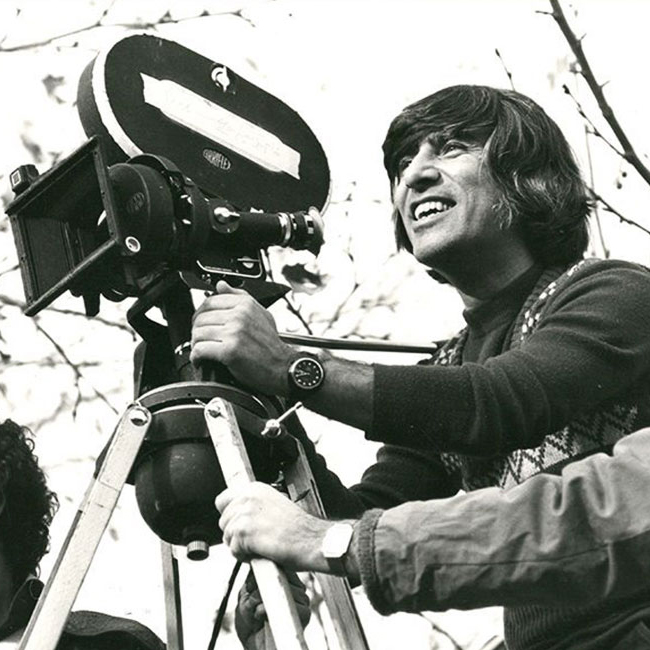
A Critical Overview of Bahrām Bayzā’ī’s Dramatic and Cinematic Oeuvre
Introduction
In this entry, I trace the trajectory of Bahrām Bayzā’ī’s creative impulse and examine his oeuvre to offer an analytical overview of his aesthetic and thematic concerns and innovations. Before embarking on my chronological overview, however, I need to clarify a few general points. In my writing, I pay attention to a number of key ideas and practices which are central to Bayzā’ī’s vision: (1) modernity, modernization, and democracy, (2) marginalization, trauma, and creativity, (3) outsider gaze, epistemic privilege, and epistemic authority, (4) transgressive and emancipatory framing and reframing, (5) redistributing the sensible by introducing new ways of seeing, doing, and understanding, (6) modalities and transformations of personal and collective identities, (7) desire for belonging, recognition, and self-recognition as incentives for change, (8) constructive curiosity, worldliness, and intellectuality, (9) citizenship and leadership, (10) gender relations and hegemonic masculinity and femininity, (11) totalitarianism, patriarchy, and power, (12) sociopolitical and religious surveillance, (13) reformulation of Iranian and non-Iranian dramatic and cinematic forms to create new artistic forms, and (14) yoking these reformulated forms to particular situations to construct his emancipatory aesthetics.

Figure 1: Portrait of Bahrām Bayzā’ī
Some of the terms I have used in this list need further clarification to specify the senses I give them in my writing. For instance, I use the term constructive to denote the range of qualities that facilitate individual and social health and prosperity. Thus, “constructive individuals” are those who lead a life of passion, purpose, and integrity dedicated to make the world a better place without hurting anyone. “Constructive curiosity,” therefore, is a type of curiosity that explores subjects or situations to resolve issues, help others, and prevent problems rather than to undermine or suppress others. Similarly, “constructive worldliness” means focusing one’s energy on the world to create better ways of living rather than, for instance, becoming obsessed with religious ideas. Relatedly, “constructive intellectuality” is the type that introduces new ways or spaces of seeing, learning, and acting in life. It is the type that dedicates its knowledge to solving problems and serving the community and does not obsess itself with criticizing without producing and creating.
Similarly, the idea of framing and reframing in my writing has two interrelated aspects. One is aesthetic and has to do with embedding dramatic rituals, performances, plays, trials or play-like scenes, cameras, or filming or cinema scenes within a play or a film in self-reflexive ways that transform the viewers understanding of rituals, drama, and cinema. The other is sociological and is concerned with how “framing” and “reframing” a social practice in a new situation or along other practices that are not usually associated with it changes its meaning to make the viewer conscious of the need to see certain beliefs, practices, or situations from new perspectives.1For more on framing as a sociological concept, see Erving Goffman, Frame Analysis: An Essay on the Organization of Experience (Boston: Northeastern University Press, 1986), 44-46.
To fulfil my plan, I have separated the entry into sections that mark new trends in Bayzā’ī’s oeuvre that have evolved with time. I first examine the origins and evolution of Bayzā’ī’s creativity while introducing a theoretical framework which I continue to refer to in my analytical overview. Then, I go through Bayzā’ī’s works by examining his early years of playwrighting and research before moving to the years in which he added filmmaking to his already rich creative and research profile. The sections engage with the above fourteen key ideas and their subdivisions in different ways and also highlight to different degrees his impact on the rise of Iranian indigenous forms in Iranian cinema and modern drama.

Figure 2: Bahrām Bayzā’ī on the film set.
Marginality, Epistemic Privilege, and Creative Impulse
Any overview of Bayzā’ī’s oeuvre must first examine the sources of his relentless creativity. These originate, from my perspective, in his ability to sublimate his traumatic experiences of marginalization into epistemic authority through dedicated learning, while at the same time maintaining the outsider gaze that has enabled him to explore old and new subjects from fresh perspectives. By “epistemic authority,” I refer to the ability to perceive problems that others neglect and to articulate new standpoints which challenge the cultural and sociopolitical constructs that cause those problems. Epistemic authority is thus rooted in epistemic privilege: the idea that some forms of knowledge are perceivable only by those who are directly affected by them, but not by others. In the context of psychology, this means that only an individual has privileged access to their own thought processes. In the context of the social sciences, however, it entails that those deprived of their rights by sociopolitical or religious centres or majorities apprehend the problems of these systems more acutely than those reaping the benefits of or remaining unharmed by them.2For “epistemic privilege,” see John Heil, “Privileged Access,” Mind 97, no. 386 (1988): 238-251; Bat-Ami Bar On, “Marginality and Epistemic Privilege,” in Feminist Epistemologies, eds. Linda Alcoff and Elizabeth Potter (London and New York: Routledge, 1993), 83-100; and Marianne Janack, “Standpoint Epistemology without the ‘Standpoint’? An Examination of Epistemic Privilege and Epistemic Authority,” Hypatia 12, no. 2, (1997): 125-139. Though similar in its essence, my conception of the term departs from these in how I link it to creativity, how I foreground the psychosocial processes leading to epistemic privilege, and how I emphasize the need to transcend minority and majority perspectives before such a process becomes possible. To clarify this, I usually use a door metaphor. If a door opens, the person leaving or entering a space never thinks of the door’s handle, frame, or hinges. However, if the door does not open, the person automatically scrutinises these parts of the door to find the issue. Thus, our pragmatic and goal-oriented mental processing means that we only notice problems when they affect us, or metaphorically speaking when the doors do not open for us. Rather than calling this state epistemic privilege, however, I call it the standpoint of the marginalized, and argue that epistemic privilege occurs only when such people gain psychological, sociopolitical, and historical self-awareness, exit the limits of their minority or marginalized outlook, and perceive the problems of those in other marginalized positions and that of the centre by understanding the way the system works. Indeed, the initial status cannot be a privilege if it only leads to suffering and pushes the person into self-pity and anger or makes them unable to see how other groups of people may suffer similar situations.
Epistemic authority, then, can only occur if such individuals are not cowed by the centre and thus try to prove that they are in fact more central to their culture than their suppressors by developing qualities that allow them to introduce new ways of seeing, doing, and understanding to confront the centre itself. The process also involves enhancing their ways of seeing with in-depth study or observation of other cultures, equipping them with a status of in-betweenness or an outsider gaze that helps them transcend their own minority obsessions and introduce emancipatory ways of seeing and doing to their wider culture. Further, the experience of marginality, as the initial trigger, does not need to be due to being a member of a marginalized group. Rather, it can result from any form of political, psychological, or social trauma that leads to early self-awareness: the death of a beloved person; a case of abuse; unjust imprisonment; a war or a revolution that deprives the person of a sense of belonging; or the experience of in-betweenness due to being exposed to different cultures at a young age so that the person becomes unable to fit in or accept any of these various cultures in their totality. Nevertheless, what guarantees epistemic authority is that, while identifying with the marginalized, the person rebels against marginalization and develops intellectual or physical qualities (e.g., creativity, knowledge, power, etc.) that make them appealing to the non-totalitarian members of the so-called centre.3For a theoretical analysis of Bayzā’ī’s creativity, see Saeed Talajooy, “Introduction,” in Iranian Culture in Bahram Beyzaie’s Cinema and Theatre: Paradigms of Being and Belonging (London and New York: Bloomsbury/I. B. Tauris, 2023).
Bayzā’ī’s creativity indicates just such a quality in its origin as well as in its focus on marginalization and marginalized artistic forms, social practices, narratives, and people. Bayzā’ī was born in Tehran on 25 December 1938. His father was a poet who organized a poetry group, and his mother and maternal grandmother were strong, intelligent, witty women with a passion for poetry and a treasure of folktales that triggered his early interest in folklore and myths. His forefathers were also among the leading directors of taʿzīyah passion plays in Ārān and Bīdgul County of Kāshān. This already rich cultural origin was further enhanced by his exposure to religious debates and Bahā’ī ideas due to his father’s conversion to Bahā’īsm. Though Bayzā’ī never practised Bahā’īsm as an adult and became an agnostic in his teenage years, he learned a lot from such debates while also suffering the consequences of his family’s religion from an early age. During his adolescence, he was also exposed to various vestiges of how dominant discourses marginalize the people, practices, and beliefs that contradict their reductive narratives of national identity. With the Allies’ occupation (1941-46) already shaking the country’s culture, politics, and economy, Bayzā’ī observed on a daily basis: the consequences of religious, party, and state terrorism of the early 1950s; the conflicts over the nationalization of Iran’s oil industry (1950-53); the suppression and executions of leftist and pro-Musaddiq intellectuals, military officers, and political activists before and after the 1953 coup; and the clampdown on Bahā’īs following the broadcast of Muhammad Taqī Faslafī’s anti-Bahā’ī speech on Radio Iran, the country’s national radio, in 1955.4See Michael Fischer, Iran: From Religious Dispute to Revolution (Cambridge and London: Harvard University Press: 1980), 187; and ‛Alī Davānī, Khātirāt va Mubārizāt-i Hujjat al-Islām Falsafī (Tehran: Markaz-i Asnād-i Inqilāb-i Islāmī, 2003), 200.
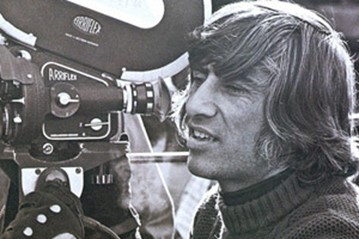
Figure 3: Bahrām Bayzā’ī on the film set of Kalāgh (The Crow, 1977).
Growing up in such a tense context, Bayzā’ī developed an interest in cinema in the 1950s, first as a space to escape the violence of his teachers and classmates, and then as a field of interest and research where his evolving creativity identified the means to deconstruct the cultural narratives that justified such forms of violence against anyone who was deemed different.5See Mustanad-i Rīshah-hā (Roots), accessed January 15, 2021 via https://www.youtube.com/watch?v=xlNdgLRXbEs (00:02:00-00:15:00). Rīshah-hā is a documentary on Bahrām Bayzā’ī, directed by Ahmad Nīkāzar. Following the same path, in 1958, he joined Farrukh Ghaffārī’s Cine Club where he was exposed to art films and began to see and read plays and became interested in the indigenous-style plays similar to those staged by Gurūh-i Hunarhā-yi Millī (the National Art Troupe). These two passions—cinema and theatre—reshaped the young Bayzā’ī’s earlier interests in myths and folk culture to push him towards dedicated research on Iranian and non-Iranian art forms, but since it was not possible for him to make films in these early years, his creativity began to be reflected in writing plays and publishing articles on Iranian performance traditions.6See Talajooy “Chapter 1” in Iranian Culture. See also Saeed Talajooy, “Beyzaie’s Formation, Forms and Themes.” Iranian Studies 46, no. 5 (Autumn 2013): 689-693; as well as Talajooy, “Introduction: Bahram Beyzaie, A Critical Overview.” In The Plays and Films of Bahram Beyzaie: Origins, Forms and Functions, ed. Saeed Talajooy (London: I. B. Tauris, 2024). It will also be useful to look at Muhammad ‛Abdī, ed., Gharībah-yi Buzurg: Zindigī va Sīnimā-yi Bahrām Bayzā’ī (Tehran: Sālis Publication, 2004), 13-32.

Figure 4: Bahrām Bayzā’ī on the film set of Kalāgh (The Crow, 1977).
Bayzā’ī’s Rise as a Leading Dramatist (1959-1970)
1959-1961: Theatre Scholarship and Early Plays
Between 1959 and 1961, Bayzā’ī studied Iranian myths, literature, and performance and visual art forms. His intention was to find ways to depict the lives of contemporary Iranians while remaining rooted in Iran’s artistic and material culture. He discovered taʿzīyah passion plays, puppet plays, and taqlīd comedies, and published articles on cinema and then drama in literary journals.7Ta‛zīyah refers to dramatic performances associated with Ashura, the annual mourning rituals commemorating the martyrdom of the Shiite saint, Husayn, and the male members of his family. With the establishment of Twelver Shiism as Iran’s official religion in the sixteenth century, these annual rituals became a locus for the reinforcement of an imagined national identity based on religious cohesion. During the seventeenth and eighteenth centuries, due to royal patronage, the semi dramatic aspects of these rituals transformed into dramatic forms, creating passion plays about sacrificial figures in Shiite historiography, including plays on Abel, John the Baptist, etc. Ta‛zīyah reached its highest status in the nineteenth century when it gave birth to about 2,000 plays on more than 270 subjects, including secular and comic ones. Ta‛zīyah is a treasure house of dramatic techniques from expressionist and minimalist depictions to grand scale re-enactments. The audience knows the events and outcomes of the plays, which are written and recited in verse. The unities are not observed: the characters might go from one city to another by circling the stage and the time is usually announced in the dialogue. Costume and makeup are essential, but the scenery is usually minimal: a basin of water may stand for the Euphrates, a palm branch in a vase for a grove of palms, a black handkerchief for mourning. Yet during the 1800s it was also possible to see Ta‛zīyah(s) of epic grandeur with hundreds of people performing. Taqlīd (imitating) is a general term used for a range of comic forms which used dance, music, witty dialogue, happy-ending plots and routines, and imitations of accents and typical movements of different types of people to draw laughter. Its different forms originate in the musical plays of pre-Islamic traveling and court entertainers, known after Islam as mutrib(s) (entertainers). From the seventeenth century, due to royal patronage, mutrib(s), who also performed in such carnival forms as Mīr-i Nawrūzī (Lord of Misrule) and Kūsah bar Nashīn (The Ride of the Beardless One), increased the dramatic qualities of their forms and gradually expanded them to create taqlīd plays in the nineteenth century. Up to the early twentieth century, the actors improvised in the fashion of commedia dell’arte to dramatize satirical or folktale scenarios dealing with moral or socio-political issues. These brief descriptions of Ta‛zīyah and Taqlīd have been adapted from Saeed Talajooy, “Indigenous Performing Traditions in Post-Revolutionary Iranian Theatre,” Iranian Studies 44, no. 4 (July 2011): 497-8. For more, see Bahrām Bayzā’ī, Namāyish dar Īrān (Tehran: Rushangarān, 2001 [1965]), 157-204; Willem Floor, History of Theater in Iran (Odenton, MD: Mage, 2005), 13-61. For a year he also studied Persian literature at Tehran University, but when he noticed the lack of interest in his favourite subjects, he left the university to write his book on indigenous performing traditions.8The sections of Bayzā’ī’s Namāyish dar Īrān were originally published as articles in Majalah-i Mūsīqī between 1962 and 1963. Later in 1965 Bayzā’ī republished the revised versions of these articles as a book which has been republished many times ever since. Bayzā’ī refers to this choice as an initially unwanted yet inevitable one which led to a pleasant development in his career. Years later in 1977, when he had already established himself as the most prolific playwright of modern indigenous-style plays and had directed four films, Hazhīr Dāryūsh, a journalist and filmmaker, asked him about the sources of his creativity and why he engaged with indigenous forms. His response revealed an outlook that has remained true:
I did not choose theatre; theatre chose me. When it could not find anyone, it placed itself on my path with the bewildering plays of Shakespeare or Greek or Far East playwrights. I was not tricked until one day theatre revealed its beauty to me in a taʿzīyah play that charmed my soul. This was when cinema had turned its back on me . . . I felt I had to rise to its challenge, find the causes of its enchanting beauty and the reasons for my fascination. It made me aware of my paucity, aware of what I was. Suddenly, I became conscious of the abyss behind me, of the baseless grounds under my feet. I realized that my historical wounds cannot be healed or beautified with cosmetic borrowings from others and that my ancestral treasure had been hidden from me. I studied history and found myself heir to an immense world of atrocity and fear. Yet I gradually began to hear the voices of people, the voices of those who have not been mentioned in history. For four years I wrote exegeses on Iranian theatre tradition. Until that strange day when I realized that I myself had to create . . . I sat down and wrote. It is now twenty years that I have been looking for my lost dreams.9Bahrām Bayzā’ī and Hazhīr Dāryūsh. “Tark-i Ghughā-yi Dukkān-dārān,” in Simia: Vīzhah-yi Bahrām Bayzā’ī va Ti’ātr 2 (Winter 2008): 36-42 (All translations are mine).
Bayzā’ī’s words suggest some of his main concerns which have persisted across his career as an artist: reformulating Iranian indigenous forms for modern theatre and cinema and rereading Iran’s history and myths—not to glorify kings and heroes but to echo the voices that have been marginalized and find what went wrong to produce the present issues. Bayzā’ī had also noticed that artistic and theatre establishments and even universities tended to deny that Iran had a performing tradition. Thus, he dedicated the first decade of his work to writing about and reviving indigenous Iranian forms and introducing Asian Theatre to Iranian practitioners. The result was the publication of several journal articles which he later published as books, including Namāyish dar Īrān (Theatre in Iran, 1965), Namāyish dar Zhāpun (Theatre in Japan, 1966), and Namāyish dar Chīn (Theatre in China, 1969), or as pamphlets for university teaching such as Namāyish dar Hind (Theatre in India, 1971). These monographs established Bayzā’ī as a leading contributor to the cosmopolitan discourses of Iran’s return-to-the-roots movements. These movements aspired to modernize indigenous Iranian forms and expand the horizons of Iran’s culture by engaging not only with Euro-American art forms but also with Asian and Middle Eastern ones.10Others who contributed to this movement included poets like Suhrāb Sipihrī and Ahmad Shāmlū, theatre practitioners like ‛Izzatallāh Intizāmī and ‛Alī Nasīrīyān, and intellectuals like Dāryūsh Shāyigān and Dāryūsh Āshūrī.
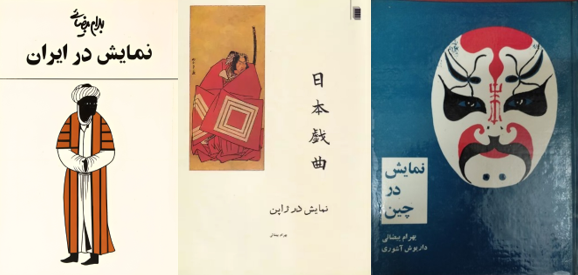
Figure 5-6-7: Book covers (from left to right): Theatre in Iran (1965), Theatre in Japan (1966), Theatre in China (1969).
Between 1959 and 1963, Bayzā’ī rewrote his play Ārash (written 1958, revised 1963, published 1977), which he had written earlier in response to Sīyāvush Kasrā’ī’s poem Ārash-i Kamāngīr (written 1954, published 1959).11In this entry whenever I discuss a work in detail, I use bold fonts for its title. Sīyāvush Kasrā’ī (1927-96) was a leftist poet whose modernist epic poem on the mythical archer Ārash depicts him as a proletarian hero of the people and a saviour who shows up in the nick of time to save his people from slavery after the country’s army has been defeated. See below for more on Ārash. He also wrote his own rendition of the myth of Zahhāk in Azhdāhāk (written 1959, published 1966) and a recitation piece about the myth of Jām-i Jam (The World Displaying Chalice) that he later published as Kārnāmah-yi Bundār-i Bīdakhsh (Account of Bundār, the Premier, written 1961, published 1996).12The World Displaying Chalice or The All-Seeing Chalice is a mythical device through which the ideal Iranian Kings could observe the events of the world, predict the future, or find whatever they were looking for. Though the name associates it with Iran’s mythical King Jamshīd, a.k.a. Jam, in the Shāhnāmah, it is only mentioned in relationship with Kaykhusraw, the most spiritual Iranian King, who uses the chalice to find Rustam’s grandson, Bīzhan, who is imprisoned in Tūrān. Some scholars argue that the association of the cup with Jamshīd has its origin in the fact the Muslims began to identify Jam as Sulaymān and thus attributed the chalice to Jam. Some others, however, state that it has been a poetic trope due to the similarities of the terms jām (chalice) and Jam (Jamshīd). Nevertheless, it is very likely that the attribution had more to do with Jamshīd’s mythical role as the civilizational initiator and the person who invented wine. From the twelfth century onward, the poetic interpretations of the chalice became increasingly more mystic, and the chalice came to symbolize the illuminated heart of the Sufi. For more, see Jamīlah Aʿzamīyān Bīdgul, “Jām dar adabīyāt-i fārsī va pīshīnah-yi ān,” Faslnāmah-yi Adabīyāt-i ‛Irfānī va Ustūrah-Shinākhtī, Year 5, no. 17 (Winter 2010): 9-23. These pieces, which function as recitation plays for one, two, or more actors, draw upon naqqālī’s subject matters and narration techniques to deconstruct the king- and hero-centered voice of the omniscient narrator of mythology and call for rereading the past and its narratives of belonging from perspectives that allow for more inclusive understandings of citizenship, leadership, and the location of the other in our social discourses.13Naqqālī (recounting) is an ancient form of dramatic storytelling. Pardah-khān(s) (pictorial recounters) were naqqāl(s) who set up paintings of the key scenes of their narrated legends and used them by moving from one image to another while narrating and performing the scenes. A naqqāl who carried pardah and specialized in religious stories was called pardah-dār. Naqqāl(s) performed on platforms in coffee houses or in bazaars. For more, see Saeed Talajooy, “The Genealogy of Ārash, A Hero: From Naqqāli to Beyzaie’s Recitation Plays and from Mythical Ārash to Beyzaie’s Marginalized Ārash,” in Bahram Beyzaie’s Drama and Cinema: Origins, Forms and Functions, ed. Saeed Talajooy (London: I. B. Tauris, 2024), 25-28. These early works already display Bayzā’ī’s deconstructive vision and his understanding of modernity as a process of facing the worst in ourselves and discarding our illusions of grandeur in order to construct better futures. As discussed below, they also subvert common assumptions about the mythical characters involved.
For instance, in the original myth, Ārash is a born hero, selected by Isfandārmaz, the Iranian Goddess of Earth, and Manūchihr, the king, to fulfil a sacrificial act. After the Iranians have been defeated by the Tūrānians, they are given a binding offer specifying that they may regain their lost land but only to the extent of s single arrowshot. Isfandārmaz advises the king’s craftsmen on how to make the bow and the arrow and helps choose Ārash, who shocks the victors by shooting an arrow that travels from the southeast coast of the Caspian Sea to Transoxiana and perishes in the act. The original mythical Ārash, thus, is a sacrificial hero whose sacrificial act, according to Bīrūnī, was also associated with a purgation festival.14Abū Rayhān Bīrūnī, Al-Āsār Al-Bāqīyah ‛an Al-Qurūn Al-Khālīyah, trans. Akbar Dānāsirisht. (Tehran: Amīr Kabīr, 2007), 334-35. For an analysis of the myth and its reformulations in Iranian cultural products, see Talajooy, “The Genealogy of Ārash,” 23-55. In Bayzā’ī’s play, however, the eponymous Ārash is a shepherd drafted into the army as a horse groom, and he eventually fulfills the heroic feat because he is cornered by both the Tūrānians and by his own people, the Iranians. The Tūrānians, who are following the advice of the defecting Iranian warrior Hūmān, aim to ridicule the Iranians by having a shepherd shoot the arrow that is to determine the border between their two kingdoms. The Iranians, however, assume Ārash has volunteered to shoot the arrow because he is a spy. If he says no to shooting the arrow, the Turānians will massacre the Iranian soldiers; if he says yes, the Iranians will conclude that he is a spy. Bayzā’ī highlights how his frustration with this intense ostracization pushes him to achieve this improbable feat. However, he also reflects the people’s craving for the arrival of a superhuman hero to resolve their issues and presents the arguments put forward by the wise warrior Kashvād to demonstrate that Ārash’s heroic act is likely to lead to nothing but the perpetuation of people’s obsession with messianic saviours that makes people apathetic to their responsibilities and leaves the culture at the mercy of tyranny.
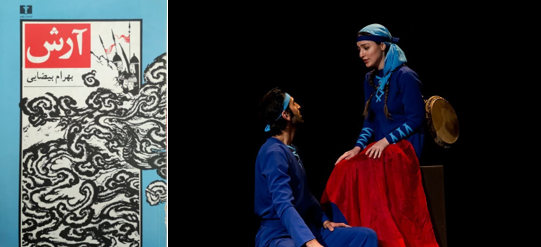
Figure 8 (left): Book cover, Bayzā’ī’s Ārash (1977).
Figure 9 (right): A scene from the theater Ārash, directed by Gulchihr Dāmghānī.
The case of Azhdāhāk is also similar. In the original myth of Zahhāk, as recorded in the Shāhnāmah, the young prince becomes evil in three steps: (1) Satan incites him to kill his father and replace him; (2) Satan appears as a chef who prepares meat-based foods for him and when Zahhāk wants to reward him for his unique foods, Satan requests to kiss Zahhāk’s shoulders; (3) two snakes grow on his shoulders from the locations of Satan’s kisses causing him intense pain and fear, but Satan appears as a physician and advises him to calm the snakes by killing two young men every day and feeding their brains to the snakes. Bayzā’ī uses the myth as a background for a dramatic monologue that echoes the unheard voice of the demonized king to show how marginalization alienates people and leads to the continuation of vicious circles of violence. Thus, in Bayzā’ī’s Azhdāhāk, Zahhāk’s snakes are made to embody the hate that Jamshīd’s suppression of his non-Iranian subjects planted in him, and he is ultimately shown to be a suffering loner who was only depicted as evil to justify his suppression and enchainment.
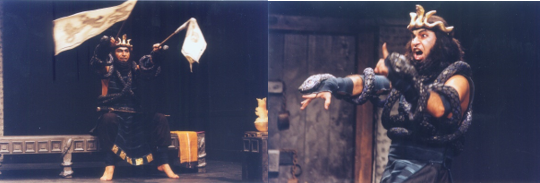
Figures 10-11: A scene from the theater Azhdāhāk, directed by Bahrām Bayzā’ī.
The case of Bundār, which I analyse later in this entry when dealing with Bayzā’ī’s rewriting of the play in 1995, is more imaginative as Bundār is an entirely imaginary character. In the play, Jamshīd is not the benevolent initiator of Iranian culture, but instead a paranoid king who claims the scientific achievements of his lead advisor, Bundār, and supresses the people around him so much that Bundār destroys his invention, the “world displaying chalice,” to stop Jamshīd from using the device to find and massacre dissidents.15For more on these recitation plays, see Saeed Talajooy, “Reformulation of Shahnameh Legends in Bahram Beyzaie’s Plays,” Iranian Studies 46, no. 5 (Autumn 2013): 695-719; and Talajooy, “Genealogy of Ārash,”

Figure 12: Hamīd Farrukhzād and Bahrām Bayzā’ī on the set of the play Azhdāhāk.
1962-1963: Bayzā’ī’s Puppet Plays
Following the publication of his first articles on Iranian theatre, Bayzā’ī, who had been employed as a clerk for a notary public, was transferred to the Office of Dramatic Arts. His experience in the notary office as an institution in which people are reduced to numbers and records is later reflected in some of his Kafkaesque scenes, such as in Ishghāl (Occupation, 1980) or Sag-kushī (Killing Mad Dogs, 2000), but the transfer also enabled him to cooperate with several theatre troupes as a text editor, designer, and assistant director.
The first products of this cooperation were three puppet plays: ‘Arūsak-hā (The Marionettes), Ghurūb dar dīyārī gharīb (Sunset in a Strange Land) and Qissah-yi māh-i pinhān (Tale of the Hidden Moon) in 1962-63. These three plays reframe the customary metatheatrical dialogue between the narrator/puppeteer and his puppets in Iranian puppet form (khaymah-shab-bāzī) to create an emancipatory aesthetics. The result is that the plays’ form comments on heroism, leadership, demonization, and citizenship by highlighting the impacts of dominant discourses on our minds in a context in which actors who move and talk like puppets begin to act as humans, rebel against the roles imposed on them for thousands of years and initiate new forms of dialogue with each other and the narrator. In the course of the three plays which are separate but have underlying similarities, the Hero realizes that he has been the victim of a culture in which people expect heroes to solve their problems and finds that the so-called Demon is only an oppressed individual. When the Hero and the Demon refuse to fight and the puppeteer destroys them, the Girl and the Black begin to rebel against their roles, think for themselves, and face both the positive and negative impacts of their decisions. The Girl realizes that she has been made to be either an object of desire or a damsel in distress, and the Black, who represents the downtrodden, announces that he wants to be a hero because he is tired of being a jester or being marginalised or demonized if he refuses to do so. Their self-awareness and revolt, however, are shown to be only the first steps which cannot, on their own, end the vicious circle of clichéd social roles, demonization and heroism.16See Talajooy, Iranian Culture, 37-70.

Figure13: Book cover, Bayzā’ī’s Three Puppet Plays (1963).
As reflected above, this period marks Bayzā’ī’s focus on examining and reformulating the ideals of heroism, leadership, and citizenship in response to the centrality of these subjects in the post 1953-coup era in which the tough guys and the military went against the will of the people by supporting the shah’s decision to end Musaddiq’s premiership. Bayzā’ī does this systematically by first examining the world of mythical heroes in Ārash and then reformulating the meaning of heroism in folktales in his puppet trilogy. In his third step, then, he goes to the hero of Zurkhānah and the Iranian javānmardī cults in Pahlivān Akbar mīmīrad (So Dies Pahlivān Akbar, 1963). The play used the linguistic registers, ambiance, and mentalities of the frequenters of the zurkhānah (traditional sport club), folktales concerning javānmardī (chivalry) cults, and their famous role model, Pūrīyā-yi Valī (Pahlivān Muhammad Khvārazmī, 1255-1323), to reconstruct the ideals of heroism. It played a significant role in initiating a new interest in javānmardī and its ideal heroes, pahlivān and ‛ayyār, in contrast with the streetwise tough guy characters that had become central to Iranian cinema since 1958.17Iranian javānmardī cults, which have their origins in ancient Mithraic practices, continued their evolution after Islam with military, physical, and spiritual training programmes for the youth and the practitioners of different crafts. Characterised by seven stages of development in Zurkhānah training, these cults, which were similar in their core practices, used the skills and physical qualities of the trainees to perpetuate three heroic types. Among these, a javānmard is a practitioner who serves his community by being skilled in a profession and adhering to the moral codes of the cult by helping the weak and the poor and joining hands with other javānmard(s) to defend their land, a pahlivān is a leading javānmard, a champion and a warrior skilled in single combat, wrestling and military leadership, and an ‛ayyār is a javānmard who has ninja-like fighting skills, is adapt in a particular type of fighting, or is a master of disguise, climbing walls, making trenches, or saving captives from enemy lands. For more, see Saeed Talajooy, “A Pahlevān’s Failed Quest for Belonging: Reconfiguration of the Ideals of Heroism in Beyzaie’s So Dies Pahlevān Akbar,” in The Plays and Films of Bahram Beyzaie: Origins, Forms and Functions, ed. Saeed Talajooy (London: I. B. Tauris, 2024). It also introduced the possibility of writing and successfully staging a play with a dying hero, a figure who became central to alternative Iranian films a couple of years after the play was staged by ‛Abbās Javānmard in 1965.
The play, which features the last hours of the indomitable wrestler and warrior Pahlivān Akbar, uses his soliloquies to depict a selfless, lonely man. Akbar, who was lost as a boy, grew up among nomads, and was ostracized as impure and kicked out by the nomads when he fell in love with one of their young women, ended up routing bandits and becoming a wrestling champion to prove his value to others. Now tired of leading a loveless life of fighting uselessly in a corrupt world in which officials are more corrupt than bandits and being the only person who stands against the tyranny of the political and religious elites, he faces the challenge of fulfilling the prayer of an old woman who prays for her son’s victory over Pahlivān Akbar. Bayzā’ī thus reformulates the legends of ideal heroes, who are lost or misplaced in childhood—Cyrus, Kaykhusraw, Zāl, Dārā, etc.—to create a play that analyses the traumatic origins, the loneliness, and the consequences of leading a life of selfless heroism and javānmardī ideals in a society fraught with political and religious corruption, opportunism, and exclusionism. Pahlivān Akbar’s captivating soliloquies offer an intensive form of psychological probing and depict selfless heroes as victims of marginalization and exploitation. The play thus reflects on how a marginalized person’s desire for belonging and love may initiate a quest for recognition that sets them on a pathway to becoming an outwardly indomitable hero who remains inwardly broken and lonely. It also examines how this quest for recognition distorts the person’s happiness due to other people’s expectations once the heroic individual achieves unique qualities. Bayzā’ī’s gaze also reflects on the individual’s conflict with his or her psychological shadow. This is seen most vividly, it can be argued, when the Kafkaesque figure uses Pahlivān’s own machete to kill him, representing death at the hands of the manifestation of his own shadow. Indeed, even if one interprets the figure as an assassin or a bandit who is after revenge, it is Pahlivān’s own death wish which makes him set aside his sword and turn his back to the black-wearing man as if surrendering to death. The play thus suggests how the potential of a powerful and responsible individual for creativity and productivity is distorted by the fact that other people remain passive, expect too much from him, and leave him to suffer when he needs help.18Talajooy, “A Pahlevān’s Failed.”
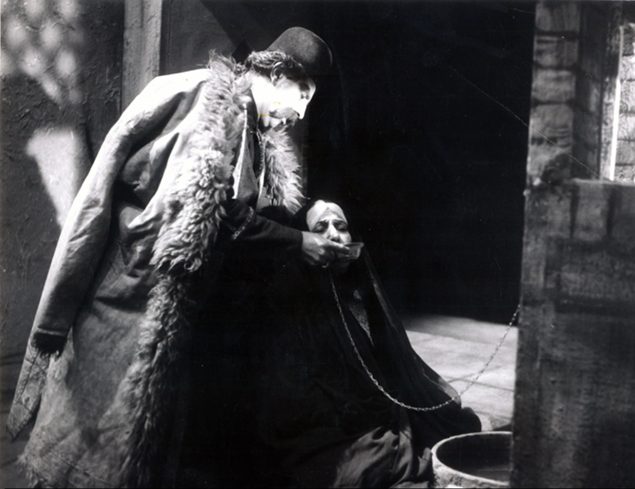
Figure 14: A scene from the theater So Dies Pahlivān Akbar (1963).
1964-1967: From Sinbad and Mr. Asrārī to The Feast and Four Boxes
Bayzā’ī’s involvement with the National Art Troupe, his trip to France for the performance of his second and third puppet plays Sunset in a Strange Land and Tale of the Hidden Moon as part of the Theatre of Nations Festival in Paris, and his own directorial debut with his first puppet play, The Marionettes, for Iranian television in 1966 established him as a leading voice in Iranian theatre. This position was further established by the plays that he wrote between 1964 and 1967, including Hashtumīn safar-i Sandbād (The Eighth Voyage of Sinbad, written 1964, published 1971), Dunyā-yi matbū‛ātī-i āqā-yi Asrārī (The Journalistic World of Mr. Asrārī, written 1965, published 1966), Sultān-i Mār (The Snake King, written 1965, published 1966), and Zīyāfat (The Feast), Mīrās (The Inheritance), and Chahār Sandūq (Four Boxes), written in 1967, published in 1967. Each of these plays introduced new forms of dramatization and new perspectives on politics, arts, society, and culture which diverged from dominant discourses, ultimately commenting on how individuals fall victim to the machinations of opportunistic elites or inherited narratives that distort their identity. As in So Dies Pahlivān Akbar, a major theme in these plays is human identity and how a person’s understanding of their life may be different from what others assume about that person, and how it is impossible to transform these inflated or distorted assumptions. In The Eighth Voyage of Sinbad for example, Bayzā’ī emphasizes the unreliability of history and how official accounts twist reality for the political or personal gain of ruling elites. Returning after a thousand years, Sinbad finds that the accounts of his life and adventures have been distorted and thus performs the real story of his life in a series of public plays to change the people’s incorrect assumptions about him. While these plays demonstrate how, in their quest for imagined happiness, human beings sacrifice the possibility of the simple happiness of love and productivity, Sinbad’s final failure to change the minds of the populace indicates the impossibility of altering people’s illusions and assumptions once they are trapped by the so-called common sense that dominant discourses have injected into their minds.
Bayzā’ī’s The Journalistic World of Mr. Asrārī was also special in its fast-paced, thriller-like plot that depicted the victimization of talented people in a society obsessed with class, money, and title. Bayzā’ī continued working with such plots in his noire-like city films, but this particular theme evolved in his later works to demonstrate how those who can contribute to the scientific and cultural growth of their society are exploited by those who crave power. It was also one of the earliest of Iranian plays and films that focused on the metamorphosis of the common man in a distorted culture. The machinations of exploitation, which work via the weight of the social gaze, economic pressure, or direct compulsion, pin the individual into a given role to exploit their skills—or derail their progress if they do not comply. The plot of The Journalistic World of Mr. Asrārī demonstrates this theme vividly: the nephew of the chief editor of a failing journal publishes the stories of a young typesetter under his own name; the journal’s readership skyrockets due to the popularity and literary genius of the stories; and the editor uses economic and peer pressure to disrupt the typesetter’s attempt to prove his authorship.
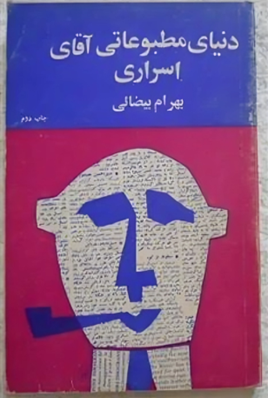
Figure 15: Book cover, Bayzā’ī’s The Journalistic World of Mr. Asrārī (1966).
Another key play, The Snake King, reformulated the techniques of taqlīd improvisatory comedies to recreate several folk narratives, particularly “Mihrīn Nigār and the Snake King” as a folk play commenting on colonialism, leadership, citizenship, and democratic change. While depicting human identity as a process of changing masks, the play uses creative theatricality and role playing as sites of emancipatory revelation. The intelligent daughter of a premier and her beloved, a young prince who has been disguising himself as a snake, revolt against the unscrupulous upholders of the hierarchies of power to help the downtrodden people, the demons, to regain a sense of humanity. However, like the other good rulers in Bayzā’ī’s oeuvre, they relinquish power once they bring justice to the land.
Bayzā’ī’s focus on how arrogant, greedy leaders, tribal and ethnic rivalries, and harmful, cultural obsessions may expose a country to colonial exploitation continued in his one-act plays The Feast and The Inheritance. The first depicts a village community in which the leaders are the real wolves who betray and destroy the cattle for their personal gain. The second demonstrates how the inane squabbles of three brothers leave their inheritance at the mercy of thieves. Four Boxes, written during Mohammad Reza Shah’s coronation in 1967, mixes the taqlīd dance play of four boxes with puppet forms to comment on the political situation of Iran since the early 1940s. As Bayzā’ī’s most political play of the 1960s, it depicts how four characters representing four social types fall victim to a scarecrow that they create to fend off foreign invaders. In a now famous scene, the play features the armed scarecrow ceremonially sitting on a throne after he subdues Yellow (the intellectual), Green (the clergy), Red (the businessman), and Black (the worker) and imprisons them in their boxes. Bayzā’ī directed the first two plays with the National Theatre Troupe, but the political suggestiveness of Four Boxes led to its being banned from formal performances until recently.19Respectively see, Bahrām Bayzā’ī, “Zīyāfat,” “Mīrās,” and “Chahār Sandūq” in Dīvān-i Namāyish 2 (Tehran: Rushangarān, 2002), 1-150. For an analysis of Four Boxes, see M. R. Ghanoonparvar, “Collective Identity and Despotism: Lessons in Two Plays by Bahram Beyzaie,” Iranian Studies 46, no. 5, Special Issue: Bahram Beyzaie’s Cinema and Theatre, ed. Saeed Talajooy (September 2013): 753-64.
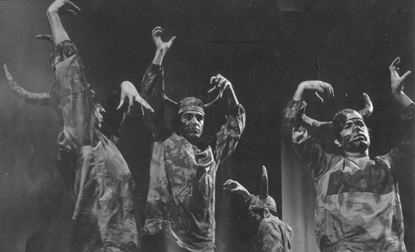
Figure 16: A scene from the theater The Snake King (1968), directed by Bahrām Bayzā’ī.
1967-1970: The End of an Era
The years between 1967 and 1970 mark the final years of Bayzā’ī’s focus on theatre as the sole channel of his creativity. He continued writing plays after this point, but he gradually shifted his focus by writing screenplays from 1967, teaching at the University of Tehran from 1969, and making films from 1970. It was also during this period in 1969 that his performance of The Snake King in Mashhad was disrupted by radical leftists. The event left an indelible mark on Bayzā’ī’s mind to the extent that it further urged him to avoid the intense atmosphere of the theatre and focus on his university job and filmmaking.20Bayzā’ī and Dāryūsh, “Tark-i Ghughā.” During the event, which according to some sources had been organized by Sa‛īd Sultānpūr (1940-81), protesters chanted slogans, threatened to kill Bayzā’ī, and accused him of selling himself to the state even though he had long been involved in the campaign for freedom of speech and was one of the founding members of the Kānūn-i Nivīsandigān (the Writers’ Association, 1968-).21See Mahmūd Dawlatābādī, “‛Abbās Āqā tu Khaylī Shabīh-i Hidāyat Hastī,” in Dīgarān-i ‛Abbās Na‘lbandīyān, ed. Javād ‛Ātifah (Tehran: Mīlkān, 2015), 235; and Bahrām Bayzā’ī, “Āzādī Mīkhāstand barāyi Sānsūr-i Dīgarān: Guftugu bā Bahrām Bayzā’ī kih dar Shab-hā-yi Shi‛r-i Goethe bi Jā-yi Hukūmat Rushanfikrān rā bih Naqd Girift,” Andīshah-yi Pūyā 5, no. 39 (December 2016): 133. According to Bayzā’ī, Sultānpūr was not in Mashhad on the day, but he had visited the city three days earlier. Bahrām Bayzā’ī, interview by Saeed Talajooy, various dates and locations, 2015-2023; further instances in this article referred to as “Interviews.”
Among the plays written in this period, Dīvān-i Balkh (Court of Bactria, written 1968, published 1968) extended Bayzā’ī’s experimentation in turning taqlīd into a drama of emancipation and cultural resistance against the suppressive and exclusionist attitudes of the state, the clergy, and the radical left in Iran. The play mixes folk narratives of ‛ayyār warriors and historical and folk accounts about the corruption of Bactria’s (Balkh) officials and judges with Iranian comic forms. This mixture of influences and narratives creates an extended taqlīd piece about the resistance of people against unscrupulous rulers and their agents who use their immunity to rob people of their properties, reputations, and lives. If Four Boxes contracts taqlīd into a focused political allegory, Court of Bactria expands it, turning its stereotypical characters into life-affirming individuals facing the ruling elites’ tyranny and hypocrisy through role playing and creative theatricality. In doing so, the play thus turns indigenous dramatic forms into modern sites of resistance against economic, political, and religious opportunism. Bayzā’ī also echoes the special place given to women ‛ayyārs in Iranian romances and women’s agency and quests in his own earlier plays, particularly The Snake King, to construct the character of Marjān, one of his early heroines who engage in direct action against injustice.22Iranian popular romances and ‛ayyāri tales involve quests in which ‛ayyārs and pahlivāns embark on such adventures to fulfil tasks. In many of these, including Arrajānī’s rendering of the Parthian romance, Samak-i ‛Ayyār (ca. 1100s), or Tarsūsī’s Dārabnāmah (ca. 1100s), women ‛ayyārs and warriors play significant roles. The play also comments on social cruelty, including a scene in which a trader requests a handful of flesh from the body of a young man as payment for his debt, and another in which the true sinners engage in stoning an innocent woman to death.23Bayzā’ī, Dīvān-i Namāyish 1, 224-29. The account concerning flesh as payment is present in the original tales, such as Qāzī-i Hums, which predate Shakespeare’s Merchant of Venice. See Mujtabā Mīnuvī, Pānzdah Guftār (Tehran: Tūs, 2004), 181-205.
As Hamid Amjad states, at a metaphorical level, the play also reflects on the conflicts that led to the 1953 coup. Thus, in a scene which mirrors Musaddiq’s talk in Bahāristān Square, just before being ousted by the state opportunists and their thugs, the good judge in the play delivers a talk in “Nawbahār Square” to declare his intention to bring justice to the city.24Hamid Amjad, “Khānish-i Naʿlbandīyān dar Matn-i Zamānah-ash,” Daftarhā-yi Ti’ātr, no. 16 (March 2021): 38-39. As in So Dies Pahlivān Akbar, Bayzā’ī’s success in adding modern dramatic vibrancy to the speech registers of medieval ‛ayyāri tales by combining them with contemporary terms caught the attention of other writers.25‛Ayyāri tales are popular romances in which ‛ayyārs plays central roles. See footnote 22. In a general assessment of Bayzā’ī’s writing, for instance, Mahmūd Dawlatābādī argues that Bayzā’ī is a modern thinker with clear formal and thematic historical awareness. Dawlatābādī goes on even further, however, to compare him with Saʿdī in his versatility and notes how, during a group reading of Court of Bactria, he was impressed with Bayzā’ī’s ability “to revive the language of our ancestors for the stage.”26Mahmūd Dawlatābādī, Mīm va Ān Dīgarān (Tehran: Nashr-i Chishmah, 2014), 110-11. For Hūshang Gulshīrī’s comments on So Dies Pahlivān Akbar, see also Bahrām Bayzā’ī, “Rushanfikr-i Tamām-vaqt,” Andīshah-yi Pūyā, no. 33 (March 2016): 114. Despite these qualities and the impacts it has had on many cultural products that dealt with medieval stories, Court of Bactria was banned from performance at the time and has remained unperformed to the present.
During the same year, Bayzā’ī wrote Gumshudigān (The Lost, written 1968, published 1978), a play that follows some of the ideas he had promoted in Court of Bactria. Having returned from a religious pilgrim, a local ruler has nightmares about his death and resolves to rule fairly but he gets lost in his own inefficiency and the opportunism of the people around him. The peasants, who have suffered the consequences of these failures, are also lost as some of them talk about leaving and some are determined to do things, but when it comes to acting, they get entangled in vicious circles of hypocrisy and fear. Talhak, one of Bayzā’ī’s wise fools, appears for the first time in this play, but Bayzā’ī suggests that he is as lost as the others as Talhak’s idea of justice is distorted by his limitations and personal obsessions. Notably, Bayzā’ī’s experience with the ban on Court of Bactria pushed him towards metaphorical suggestions rather than direct statements, which in this case make the play too vague.
His final play of this important period was Rāh-i tūfānī-i Farmān pisar-i Farmān az mīyān-i tārīkī (The Stormy Path of Farmān the Son of Farmān through the Darkness, written 1970, published 1972). Farmān, the last heir of a feudal family, is in love with a village girl who looks like an ancient queen. The play thus reflects on contemporary Iranian politics by demonstrating how the obsession with an overblown past can distract attention from what is at stake in the present and leave people at the mercy of colonizers and exploiters. The play’s ending is also interesting in that, in a symbolic twist, it reveals the setting to be a mental asylum. This choice echoes Sādiq Hidāyat’s short story Sih Qatrah Khūn (Three Drops of Blood, 1932), which also used the metaphors of love, belonging, and madness to comment on the failure of Iran’s cultural bid for nation building due to obsessive utopianism, psychopathic self-centredness, and lack of pragmatic worldliness.
With the atmosphere of Iranian theatre becoming increasingly polarised under the pressures of state censorship, the militant anti-state, religious, and Marxist movements of the late 1960s, and the leftists’ attacks on the performances that were deemed pro-state or not critical enough, Bayzā’ī ended his theatrical activities without saying goodbye to playwriting. Before making his first film, however, he wrote a children’s story, Haqīqat va mard-i dānā (Truth and the Wiseman, written 1970, published 1972), a tale of initiation which recounts the quest of a child seeking truth. The story contains the philosophical backbone of most of Bayzā’ī’s works: truth is temporary, multisided, contradictory, and ultimately impossible to define. The boy’s quest for truth ends in his return as a middle-aged man to his hometown where his parents no longer recognize him. He thus becomes a recluse that finds truth not in the sky or in great ideas but in the simple relationships and acts of love, work, and production that we take for granted. It is in everything and in nothing, in wandering around, planting, harvesting, and building, in being kind, curious, and soft or hard when the circumstances demand it. It is the reed that grows from the earth and can be turned into a lance, a pen, or a flute, but the ultimate wise person is the one who knows how to turn the lance into a flute, a pen, or a plant again. The book, illustrated by Murtizā Mumayyiz (1935-2005) and published by the Institute for the Intellectual Development of Children and Young Adults, became a turning point in Bayzā’ī’s career as the Institute offered him the opportunity to make a film. The result was ‘Amū Sībīlū (Uncle Moustache), whose success meant that from 1970 until 1979 Bayzā’ī’s main preoccupation was making films and writing screenplays.
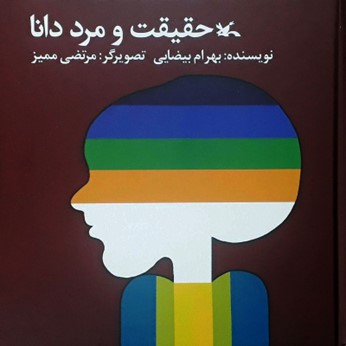
Figure 17: Book cover, Bayzā’ī’s Truth and the Wiseman (1972), illustrated by Murtizā Mumayyiz.
Bayzā’ī the Filmmaker and Screenplay Writer
1970-1973: From Uncle Moustache to Lonely Warrior, Downpour, and Lost
Produced by the Institute for the Intellectual Development of Children and Young Adults, Bayzā’ī’s first film, Uncle Moustache (1970), comments on the at first rocky but eventually warm relationship between an old man and a group of local boys who turn the abandoned field in front of his house into a makeshift football (i.e. soccer) pitch. The man’s initial refusal to accept the boys’ rights to play in the field leads to a conflict which culminates in a chase scene in which one of the boys falls from a wall and is badly injured. This leads to the boys’ disappearance, but soon the man realises that he misses them, goes to visit the injured boy in the hospital, reconciles with him and the others, and changes some of his old habits. Thus, the film offers a perspective on the inevitability of change when the world has changed. The man’s frowning moustachioed face and his knife in some scenes, his judge-like religious cloak and cap in others, and his formal statesman-like suit in still others represent three types of violent and authoritarian masculinity which are ultimately replaced with a new one: the old man with hands full of food and a big supportive smile. Similarly, his obsession with the past, closed doors and windows, and old photos and books is replaced with the markers of a modern, polyphonic society: a world of smiles, flowers, food, games, and open doors where children freely move and engage in constructive activities.
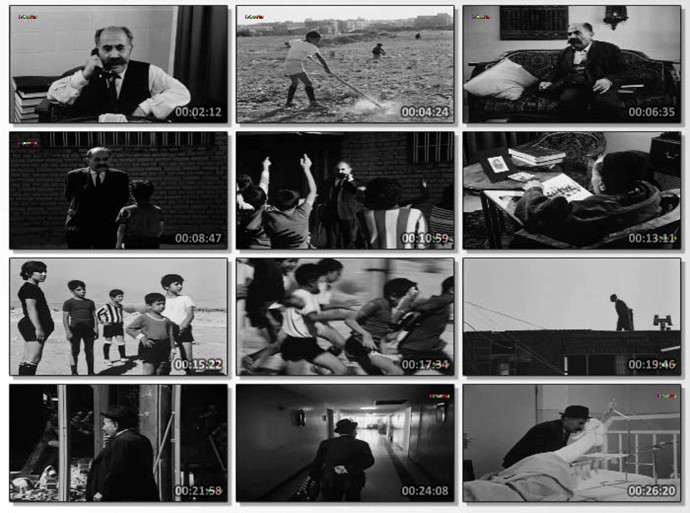
Figure 18: Screenshots from the film Uncle Moustache (1970), Bahrām Bayzā’ī.
Notably, Bayzā’ī turns the boys’ refusal to take the man seriously and their demonstrations and actions against him into a carnivalesque site of cultural resistance against suppressive authority. He also uses taqlīd and taʿzīyah elements in his characterization of the old man whose rolling eyes, theatrical shenanigans, moustache, and knife depict him as a comic version of shimr-khān (the murderer) of ta‘zīyah plays or the babrāz-khān (vainglorious braggart) of taqlīd plays.27Babrāz-khān is also a villain in the romance of Husayn Kurd Shabistarī. For a summary of the romance, see Ulrich Marzolph, “Ḥosayn-e kord-e Šabestari,” in Encyclopaedia Iranica Online, https://iranicaonline.org/articles/hosayn-e-kord-e-sabestari. These qualities create a lively ambiance for and juxtaposition with a profound ritual of quest, purgation, and alteration. Bayzā’ī associates these elements with children’s rights and their ability to demand their needs to the ideals of a modern democratic society in which even those in power learn to derive their happiness from cooperating with others to engineer collective happiness, rather than use surveillance and violence to dominate others. The ending of the film, therefore, envisions a society in which “violence no longer determines what is right, and the free movement and the voices of the younger generation no longer annoys the old man.”28For more see Saeed Talajooy, “Bahram Beyzaie,” in Directory of World Cinema, Iran 2, ed. Parviz Jahed (Bristol: Intellect, 2017), 36. See also the chapter on Uncle Moustache in Talajooy, Iranian Culture, 71-90.
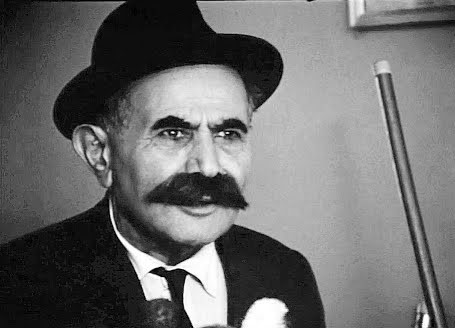
Figure 19: A Screenshot from the film Uncle Moustache (1970), Bahrām Bayzā’ī.
Like ‛Abbās Kīyārustamī’s early films, Uncle Moustache functioned as a predecessor for many post-revolutionary films in which children acted as protagonists. Like Bayzā’ī’s later films, Safar (Journey, 1973), Ragbār (Downpour, 1972), and Bāshū, Gharībah-i Kūchak (Bāshū, the Little Stranger, 1985), the film also turned the untamed, resistant gaze of children against undue impositions to reflect on how violence, the normalizing gaze, surveillance, advice, and threats are used to control people’s constructive curiosity and desire for change.
In 1970, Bayzā’ī also wrote Lonely Warrior (‛Ayyār-i Tanhā), his first screenplay on the Mongol invasion. As in his other historical screenplays, his emphasis is not on the evilness of the invaders but on the political and cultural failures, such as apathy, ignorance, hypocrisy, sycophancy, disunity, opportunism, and obsession with power, which leave people at the mercy of external invaders or turn local rulers into megalomaniac oppressors. As in his mythical plays, Bayzā’ī’s historical screenplays also aspire to create a history of unseen people by analogy. Lonely Warrior further employs ritual elements to break several clichés about heroism by recounting a story of fear, transformation, and ultimate determination. The protagonists, the daughter of a man of knowledge and a warrior ‛ayyār, are notably dynamic characters in this regard. In the beginning of the film, traumatized by the violence he has witnessed, the ‛ayyār is not beyond raping women and killing people when angry. He murders the man of knowledge who claims Iran will survive the Mongols’ onslaught and rapes his daughter thinking that she will be raped by the Mongols anyway. But the girl, now pregnant, has a strong sense of doing what needs to be done. Thus, she chases him and uses her resourcefulness to revive the caring man in the beast and turn the man and herself into the types of men and women who may fulfil her father’s prophecy, even though they may die in their encounters with the sandstorm of the Mongol army.
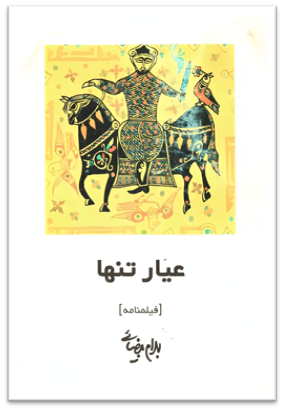
Figure 20: Book cover, Bayzā’ī’s Lonely Warrior (Ayyār-e Tanhā, 1970).
In 1971, having failed to find a producer for Lonely Warrior, Bayzā’ī commenced another full-length project that evolved into his first filmic masterpiece, Downpour (1972). With its length and seeming disunity, the film suggests the directorial position of a young filmmaker who wants to say it all. Despite this problem, however, the film was a brilliant debut which confronted mainstream Iranian cinema by subverting its main clichés. In the film, a well-educated young teacher, Mr. Hikmatī, enters a poor neighbourhood, falls in love with a hardworking young woman, ‛Ātifah, is irritated by his pupils’ unruly behaviour and his colleagues’ nosiness, realizes that his pupils need proper entertainment and cultural facilities, and refurbishes the school hall as a site for his pupils’ cultural activities. Ultimately, however, he is transferred at the request of the jealous headmaster who failed to make him marry his spoiled daughter.
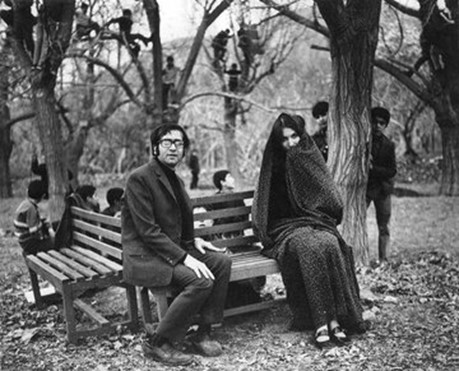
Figure 21: A Screenshot from the film Downpour (1972), Bahrām Bayzā’ī,
The film depicts the way personally and communally defined historical elements interlace with incidents in an individual’s life to form their identity and introduces the teacher, the prototype of intellectuality, as a protagonist competing with a thuggish butcher for the love of a girl in downtown Tehran. Bayzā’ī punctuates the lively comedy of resilience and hope with Kafkaesque motifs and encounters which gradually take over to create a tragedy of victimization and lost opportunities. This tragedy reflects the impossibility of positive action in a surveillance society where the success of an individual may threaten those who desire control by maintaining the status quo. Thus, the black-wearing man, dressed like a Shi’i mourner but wearing dark goggles, embodies both traditional and modern mercenaries who, like the black-wearing phantom in So Dies Pahlivān Akbar, act as instruments of tyranny and violence. Simultaneously, Bayzā’ī reformulates the tragic vision of ta‘zīyah by depicting Mr. Hikmatī as a sacrificial hero. Vicious cultural, political, or surreal forces distort the life of a creative intellectual who is propelled by his love for his students and a hardworking woman and his attempt to improve the lives of others.29See also Talajooy, Iranian Culture, 91-132.
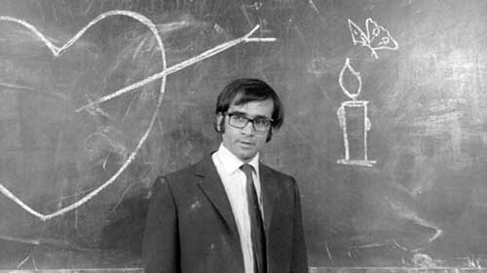
Figure 22: A Screenshot from the film Downpour (1972), Bahrām Bayzā’ī.
Like Uncle Moustache, in Downpour the protagonist’s journey of individual growth, quest for belonging, and compassionate reconciliation with others occur due to his comically depicted encounters with naughty yet hardworking children who need guidance and facilities rather than punishment. Mr. Hikmatī’s journey is also intensified by his love for ‛Ātifah, a woman whose character suggests that together they can have a high potential for mutual growth, productivity, and constructive intellectuality. The teacher, therefore, comes to realize the important value of dedicated work and love for constructing a sense of identity and belonging. Downpour is also important at a self-reflexive level. For instance, Mr. Hikmatī’s rivalry with the butcher, Rahīm, for ‛Ātifah’s love proposes to replace the stereotypical “tough guy” of mainstream Iranian cinema with new types of protagonists. Indeed, in Downpour we see a female protagonist who is not just a simple love object or challenge for the male hero’s quest of initiation. Indeed, ‛Ātifah’s no-nonsense attitude, her sense of duty as the sole provider for her family, and her ability to choose rather than be won as a trophy play important roles in turning Mr. Hikmatī, a bookish man with little social experience, into a constructive intellectual who aspires to make himself a better person by serving his pupils.
Additionally, the film’s form combines the qualities of Italian neo-realism with taʿzīyah, taqlīd, and Iranian carnivalesque forms such as mīr-i nawrūzī (Lord of Misrule).30For Mīr-i Nawrūzī, see Saeed Talajooy, “Intellectuals as Sacrificial Heroes: A Comparative Study of Bahram Beyzaie and Wole Soyinka,” Comparative Literature Studies 52, no. 2 (2015): 382-83. Though reflected in the film’s general ambiance, this latter quality is central to the school hall scene in which Mr. Hikmatī’s students celebrate him as their champion in defiance of the headmaster who is planning to take credit for rebuilding the hall and organizing the performance. Another interesting quality of the film occurs in how meta-filmic images are produced by turning figures of speech into comic theatrical scenes and combining them with dialogue that reflect the similarity of life and cinema. Important among such scenes include: the boys’ shooting with a rented airgun at a target with Marisa Mell’s image on it; ‛Ātifah and Hikmatī’s date under the pupils’ cinema-like voyeuristic gaze; Hikmatī and Rahīm’s brawls and reconciliation; the dressmaker’s relationship with her imaginary customer; and Hikmatī’s funeral-like final departure which echoes that of “Jesus carrying his cross uphill to an inevitable fate.”31See Talajooy, “Bahram Beyzaie,” 37-38. See also Ragbār [Downpour], 00:21:00-00:22:00; 00:58:00-00:6100; 01:39:00-001:40:00; and 01:54:00-01:58:00. The version of the film I have used is the one renovated by the World Cinema Foundation in 2011, accessed January 15, 2021 via https://www.youtube.com/watch?v=5l8kLqkBYOo&t=1231s The conscious theatricality of these scenes creates performative Brechtian alienation moments that captivate the spectators and comment on both cinema and life itself as a form of performance.

Figure 23: A Screenshot from the film Downpour (1972), Bahrām Bayzā’ī.
Upon the success of Downpour at the Tehran Film Festival in 1972, the Institute for the Intellectual Development of Children and Young Adults approached Bayzā’ī for another film for children. The result was Journey (1972), a mythically charged film depicting two dispossessed orphans—the visionary Tāli‛ and the worldly and practical Razī—on a quest for belonging and identity, or even simply a secure home, a mother, and a family. Here Bayzā’ī’s metaphoric semiotics further evolve to generate a meticulous arrangement of the background images that turn a single journey into a cultural revelation. Like Huck in Mark Twain’s Adventures of Huckleberry Finn (first published in the UK in 1884 and 1885 in the US) the film deploys Tāli‛’s visionary aspirations and Razī’s down-to-earth practicality to offer an overview of a world in dire straits. The society depicted in Journey is devoid of critical thinking, obsessed with imitating the status quo, beleaguered by cruelty and mass mentalities, apathetic to the fate of the marginalized, and organized by unwritten laws that prohibit the weak from doing things but do not protect them from the tyranny of abusive elites. The film’s background is filled with images of broken arches, sleeping old-fashioned labourers in demolished buildings, marching modern-looking robotic workers, mirrors, eyeglasses, film posters, billboards, scrap yards, and bewildered characters, suggesting a culture caught in the drift of a rapid transition in which imitative modernity is replacing medieval forms of life and art with little attention to the loss of their positive cultural components.32See also Talajooy, Iranian Culture, 133-154. In an era when cinema was preoccupied with lionizing tough guys as champions of heterosexual love and saviours of damsels in distress in films teeming with sexually evocative scenes, Journey offers something quite different and critical of these tropes. For instance, at one point in the film a paedophile thug chases Tāli‛ and Razī in a meta-cinematic scene in which, as they run through an area full of film posters, the paedophile thug literally dives through a poster of a nude actress in order to catch them.
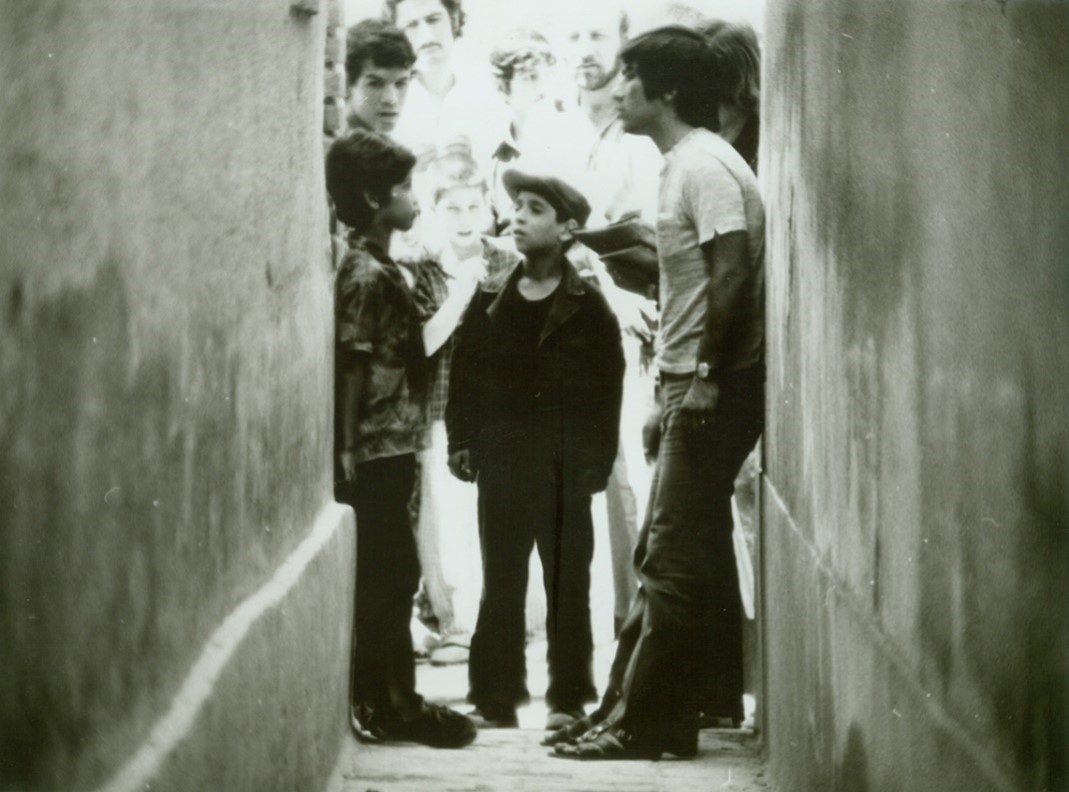
Figure 24: Behind the scenes of the film Journey (1972), Bahrām Bayzā’ī.
Further, Bayzā’ī juxtaposes the realities of child labour and the violation of children’s rights and potential for growth with images of joyful children and women on billboards advertising Western commodities and the cold high-rise buildings that fail to function as a home for the two boys. Though at an archetypal level, this journey depicts a single failed quest in a vicious circle of multiple failing quests, the hardship motifs and the labour-like stages of the quest are orchestrated to critique the contemporary approach to modernization as being more obsessed with appearances than creating the actual necessities of grassroots development. Thus, the boys’ differences, and the vicious circle of desire, hope, action, and failure, generate a symbolic layer that associates their fate with the pitfalls of Iranian modernity. Razī, the craftsman, is swayed by the visionary Tāli‛ to embark on a quest to find Tāli‛’s parents with the hope that, once found, they may give the boys the chance of having a normal life. This dream, however, is doomed to fail. The utopia that they imagine cannot be achieved by top-down development or, even if achieved, the marginalized will not be the ones who reap its benefits. Nevertheless, their futile quest seems to be the only meaningful act in the ritualistically mechanical existence of the people around them. Burdened by ideas that block constructive curiosity, those around the boys allow perversion and violence against the weak and are obsessed with the mundane and imitative repetition of outdated or superficially modern conventions with no clear understanding of their roots. Thus, Bayzā’ī highlights the need for transcending the mundane to be able to examine our lives like a work of art with aesthetic contemplation, to see our past as a construct that must be critically examined. Nevertheless, the boys’ allegorical quest for a lost sense of belonging and a supportive family also suggests that even such visions may turn into fixations of reclaiming a mythic great past or finding saviours.
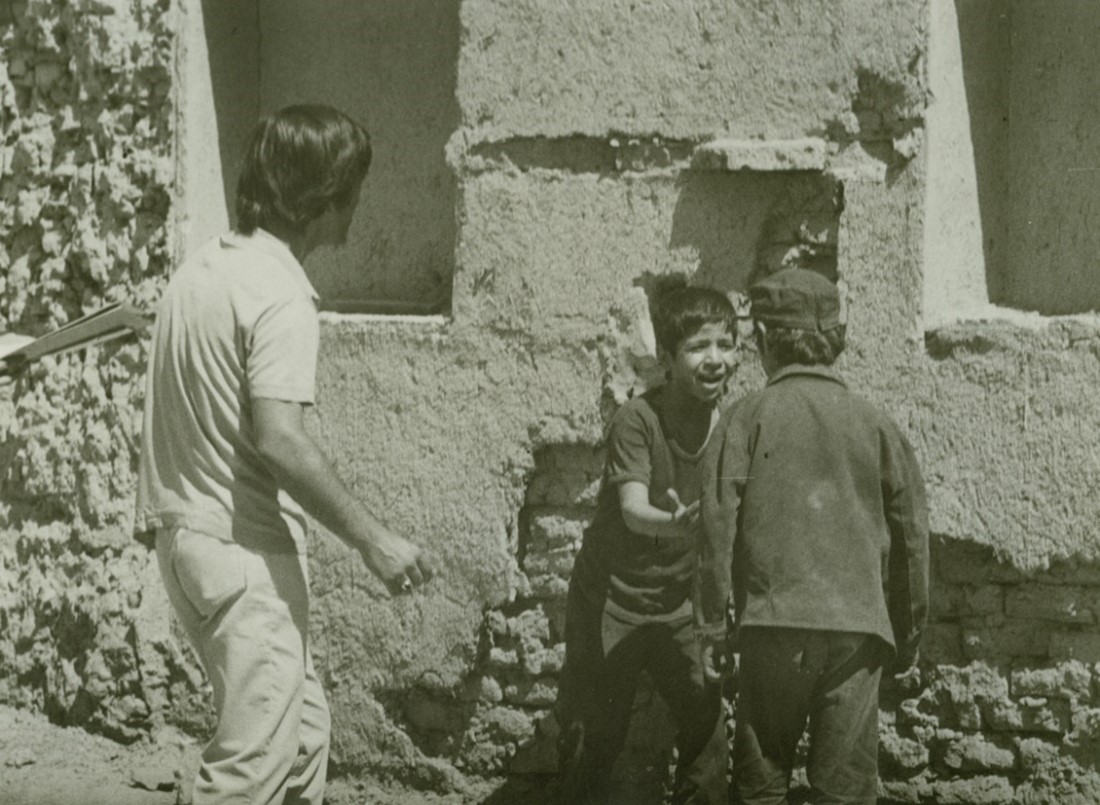
Figure 25: Behind the scenes of the film Journey (1972), Bahrām Bayzā’ī.
Journey’s technical qualities and dense metaphorical structure play significant roles in echoing Bayzā’ī’s former concerns and predicting the qualities of his later works. In its archetypal form, ritualistic motifs, and regional music, Journey predicts Bayzā’ī’s village trilogy—Gharībah va Mih (The Stranger and the Fog, 1974), Charīkah-yi Tārā (Ballad of Tārā, 1979), and Bāshū, the Little Stranger—which focuses on human experience at archetypal and existential levels but also comments on human relationships with nature, history, race, and nationhood. Journey’s surrealistic urban setting and ambiance, however, also reflect Bayzā’ī’s later use of noir elements in his city tetralogy—Kalāgh (The Crow (1977), Shāyad vaqtī dīgar (Maybe Some Other Time, 1988), Killing Mad Dogs (1999), and Vaqtī hamah khābīm (When We are All Sleeping, 2010).33I group these four films together because in all of them the city itself is a major theme, and they are all characterised by using noir filmic elements to reflect the sociopolitical positions and psychological conditions of middle-class families in a corrupt society. Further, the focus on orphaned children as the ultimate markers of social negligence and marginalization echoes the same theme in So Dies Pahlivān Akbar, in which Pahlivān Akbar’s fate is sealed when he is lost as a boy and suffers a lifetime of traumatic ostracization. However, it also predicts similar situations in The Stranger and the Fog, The Crow, Bāshū, the Little Stranger, and Maybe Some Other Time. In other words, though short, Journey is a key film in Bayzā’ī’s oeuvre and a locus of thematic and formal experimentation for his later works.
1973-1974: The Stranger and the Fog and Experimentation with Forms
In 1973, Bayzā’ī, who had been teaching at the University of Tehran since 1969, became a tenured professor at the University of Tehran where he led the Department of Dramatic Literature for several years. Bayzā’ī himself taught Iranian and Asian dramatic forms, and his presence was inspirational in enhancing his students’ creative potential, but he also invited writers such as Hūshang Gulshīrī and scholars like Shamīm Bahār to join him as contributors to the undergraduate and postgraduate modules on drama, literature, and play and film analysis. As a result, he played an important role in establishing the momentum that has made the department a bastion of creativity for Iranian performing arts ever since.
The following year Bayzā’ī completed The Stranger and the Fog (1974), his first village film. Like an agricultural spring festival, the film focused on the uncanny arrival, passions, and final departure of an agent of fertility while reformulating several Iranian mourning, marriage, initiation, and fertility rituals to create a new template for Iranian cinema. Unlike other village films of the era, Stranger is not concerned with clichés of villagers as innocent victims of cruel feudal lords or brave rebels who confront their rulers. Instead, Bayzā’ī creates a narrative that works at three levels of suggestiveness: realistic, existential, and archetypal.
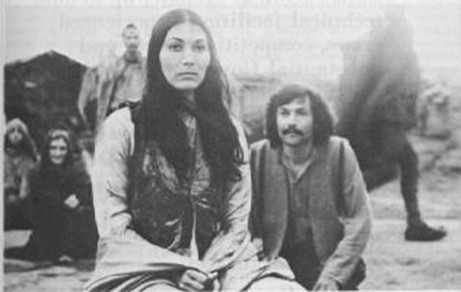
Figure 26: A Screenshot from the film The Stranger and the Fog (1974), Bahrām Bayzā’ī.
A rough sketch of the plot is helpful here. A boat appears on the shore of a coastal village from beyond the fog. In it, the villagers find an injured man, Āyat, who is suffering from amnesia. Āyat tries to make a place for himself in the village by working hard and marrying Raʿnā, a single mother and the widow of the fishing hero of the village. When hunting a wolf in the forest, Āyat is attacked by and kills a man whom he later finds out to be Raʿnā’s former husband, Āshūb, who was assumed dead but had been hiding in the forest for the past year. He is also warned by two tall, black-wearing men who tell him that he has “been summoned” by the one who owns everything and insist that Āyat himself knows what the summons is for.34I have used a full version of the film which is about 138.5 minutes long. The scene occurs between 1:18:40 and 1:20:30. When Āyat finally feels that he has been accepted, the village is attacked by five towering, black-wearing men like the two who had previously warned Āyat that he had been summoned. Āyat slays all of them in a surrealistic battle scene in which, with each slaying, he also seems to be injured. Ultimately, believing that the village may be attacked again because of him, he decides to leave to discover what is beyond the fog. He gets on the same boat in which he was found and leaves injured and semi-conscious.
At its realistic level, the villagers are shown to be trapped in superstitious beliefs and their obsession with the afterlife and the unknown. Like Mr. Hikmatī in Downpour, Āyat is a stranger who wishes to be recognized for his positive qualities and to achieve a sense of belonging by serving the community. He aspires to be constructive and productive, an agent of fertility, and a reliable husband and father who can fish, plough, plant, harvest, make boats, help the weak, and cut trees to build houses. This realistic aspect reflects the political hierarchies of belonging and power in a microcosm in which tacit rules, surveillance, ostracization, and punishment are used to create docile subjects that must function exactly as the community expects them to. If individuals refuse the community’s rigid categories or try to change the rules, they must either define a major role for themselves by risking their lives and becoming heroes, or they are rejected as villains, idiots, or outcasts.
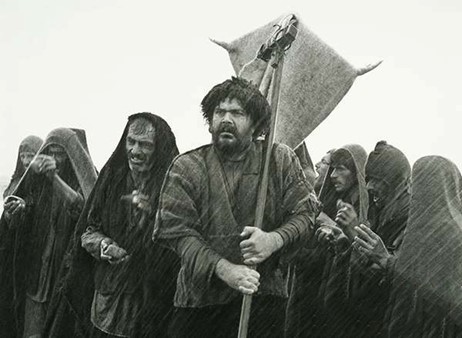
Figure 27: A Screenshot from the film The Stranger and the Fog (1974), Bahrām Bayzā’ī.
This revelation about Āshūb, and the fact that the villagers never realize that he had escaped and become a mugger, reflect the same template that Bayzā’ī used to question the validity of myths, official histories, or people’s beliefs about who is and who is not a hero in Ārash, The Eighth Voyage of Sinbad, and Journey. Thus Āshūb, whose name means chaos, is comparable to Hūmān in Ārash or the paedophile thug in Journey. Āyat’s encounter with the at first unknown man—the fallen hero, Āshūb—which leads to the latter’s death when he tries to kill Āyat, contributes to the archetypal suggestiveness of the film.
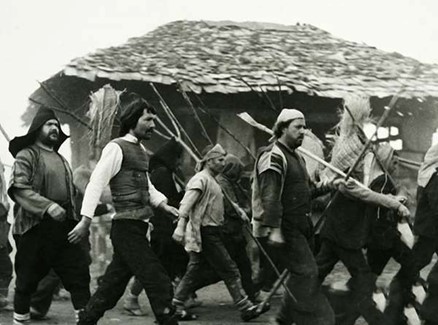
Figure 28: A Screenshot from the film The Stranger and the Fog (1974), Bahrām Bayzā’ī.
At this level of archetypes, Raʿnā can be understood to embody Isfandārmaz, the goddess of nature and fertility, while Āshūb represents a fake agent of fertility who has failed to stand by Raʿnā.35Spenta Armaiti (Isfandārmaz, [ripeness of mind and creative harmony]), is the female divinity associated with earth, mother nature, fertility, farmers and, more interestingly, the resurrection of the dead. For more, see, Mary Boyce, A History of Zoroastrianism. Vol. 1 (Leiden, New York, Köln: E. J. Brill. 1996), 206; Prods Oktor Skjærvø, “Ahura Mazdā and Ārmaiti, Heaven and Earth, in the Old Avesta,” Journal of the American Oriental Society 122, no. 2 (2002): 404-09. Further, Āyat functions like a dying and then resurrecting fertility god whose arrival, actions, and departure occur to end the anomaly that Āshūb’s actions have caused (i.e., his abandonment of his role as an archetypal agent of fertility and provider in the village). Āyat thus fertilizes the goddess (i.e., Raʿnā) and destroys the anomaly, but cannot stay as, like all dying gods, he must return to the unpredictable and unknowable underworld. This archetypal aspect is reflected first in Āyat’s unexpected arrival and the first glimpse that the spectators see of him in the boat. In this moment, Āyat looks reddish gray as if he is a clay effigy like those that were used in fertility rituals to embody Adonis, Attis, Osiris or Tammuz.36James George Frazer, The Golden Bough. A New Abridgement (London and Oxford: Oxford University Press, 1994), 331-374. Read also the whole section on “Killing the God,” 223-556. This colour symbolism is then reinforced in the fertility, purgation, initiation, marriage, passion, and mourning rituals in which Āyat plays a central role, as well as his white or grey shirt whenever he is in a state of transition. This archetypal function can most especially be seen in the sequence in which Āyat destroys the effigies that represent the villagers’ obsession with the afterlife, breaks the bull-headed scarecrow like a Mithraic hero, beats the ground until his body and face are covered in black mud, and then washes himself in the river to make himself recognizable to Raʿnā just before he discovers that she also loves him in return. Its final confirmation, however, occurs in the battle scene in which every time he slays an invader, he himself seems to be injured, too, and in each case, the villagers ritualistically push down the corpse of the invader into the mud in their farms as if to guarantee the fertility of their land. The same use of colour symbolism and archetypal imagery can also be seen in Bayzā’ī’s depiction of Raʿnā, whose costumes are initially all black but move to appear in shades of red and green when her fertility is highlighted, and white when she is in a state of transition.
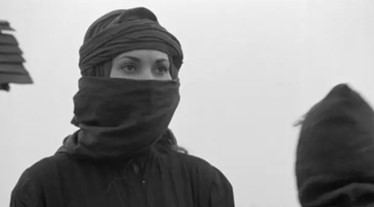
Figure 29: A Screenshot from the film The Stranger and the Fog (1974), Bahrām Bayzā’ī.
Despite these archetypal echoes which evolve with the ritualization of action, the film’s realistic narrative problematizes Āyat’s final departure. His return to the fog suggests how an obsession with the unknown, religion, and the afterlife finally takes him over, and how such obsessions deprive people, including Āyat himself, of the chance to lead a positive, worldly life of togetherness and productivity. Simultaneously, these two levels generate a third psychological level, possibly indicated by the shadowy beings who pursue Āyat. Initially only appearing to him, they later invade the village and finally force Āyat to leave despite their deaths, and thus may well represent his Jungian shadows—the sum of the stifled emotions, desires, and traumatic experiences behind his mask of control and positivity.
According to Jung, “the less” the shadow “is embodied in the individual’s conscious life, the blacker and denser it is.” If issues are examined at a conscious level, they may be adjusted by being “constantly in contact with other interests.” However, if they are “repressed and isolated from consciousness,” they “burst forth suddenly in a moment of unawareness.” Thus, the shadow evolves into a pervasive “unconscious snag, thwarting our most well-meant intentions.”37Carl Gustav Jung, Psychology and Religion: West and East: Collected Works of C. G. Jung. Vol. 11, trans. R. F. C. Hull (Princeton: Princeton University Press, 1969), 131. Āyat’s amnesia has stifled the shadows of his unknown past, but they finally arise as demonic projections that negatively impact his life and the lives of his loved ones. As in So Dies Pahlivān Akbar, therefore, the arrival of Āyat’s multiple Mr. Hydes, his uncanny doubles dressed in black, suggests that “Āyat’s dreams of belonging are threatened by nightmarish forms of condensation, displacement and secondary revision.”38See Talajooy, Iranian Culture, 133-154. See also Sigmund Freud, The Interpretation of Dreams, trans. James Strachey (New York: Basic Books, 2010), 147-158, 159-186, and 295-362.
Further, Stranger can also be interpreted on an existential level as Āyat, like all of us, comes out of the unknown, is exposed to social norms and pressures, and aspires to belong and to be recognized for his qualities rather than his past. Ultimately, however, he must leave for another unknown as his society and the embodied beliefs surrounding him, in the form of uncanny, black-robed invaders, do not allow him to fulfil his potential. He is disallowed from remaining with the woman he loves and with whom he could have made a better life for himself and others.

Figure 30: A Screenshot from the film The Stranger and the Fog (1974), Bahrām Bayzā’ī.
In general, however, Bayzā’ī’s approach reframes the indigenous or non-indigenous motifs and techniques he draws upon by placing them in situations that transform their forms and functions, or by juxtaposing them with other forms and rituals that change the meanings of the elements that have been used. These hybrid elements, therefore, serve his unique vision and, in doing so, they evolve to create new techniques, themes, and motifs. This is certainly the case in the final battle scene of The Stranger and the Fog which pays homage to Akira Kurosawa’s Seven Samurai (1954), but does so in a ritual context that evidences the similarity of Āyat’s essence with the invaders’ water-and-fog essence. Āyat is the water that has mingled with earth, represented in Raʿnā. Due to this mingling, Āyat-as-water wants to stay and contribute to the fertility of the land and its people, but the invading entities are determined to take him away. Thus, water and fog come to represent the unknown and the afterlife, while earth and mud—what Āyat grasps in his hand and smells with love and longing in the penultimate scene—represent love, fertility, and productive worldliness. Yet even this elemental aspect is sublimated further by another layer of ritualization. This added layering creates the feeling of an uncanny folktale in the film reminiscent of mystic Sufi tales, such as the folktale of Bāyazīd Bastāmī’s invincibility when, in his ecstasy of prayer, he becomes one with the divine.39As reported by ‛Attār’s Biographies (Tazkirat, ca. 1205), in his praying ecstasy, Bāyazīd once said, “Glory be to me, how sublime is my dignity?” When his disciples reported this to him, he asked them to slay him if he repeats the sentence again. But when, once again, in his ecstasy of prayer he repeated the sentence and the disciples attacked to kill him, his being filled the room and “his disciples’ knives” were as “effective as landing on water.” Bāyazīd, then, shrank to his normal size, the size of a “sparrow,” and told his confused disciples, “Bāyazid is what you see now, that was not Bāyazīd . . . The Almighty Himself sprinkled the tongue of his Servant.” Farīd al-dīn ‛Attār, Tazkirat al-Awlīyā [Biographies of the Saints], ed. Muhammad Isti‛lāmī (Tehran: Zavvār, 2012), 143-144. Bayzā’ī, therefore, is original; not in creating something from nothing, which is an overblown understanding of creativity, but in his eclectic reframing of ancient rituals and modern forms in works that raise significant existential questions about life, love, heroism, and death.40For more see also Zaven Qukasiyan, Majmū‘ah Maqālāt dar Naqd va Mu‛arrifī-i Āsār-i Bahrām Bayzā’ī (Tehran: Āgāh, 1992), 273-312; and Qukasiyan, Guftugū, 93-127.
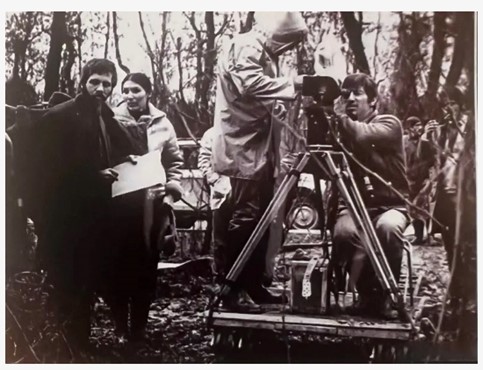
Figure 31: Behind the scenes of the film The Stranger and the Fog (1974), Bahrām Bayzā’ī.
Following the release of The Stranger and the Fog, some critics, who were confused by Bayzā’ī’s unorthodox approach to filmmaking and his refusal to continue using a template that had already proved successful in Downpour, criticized him for making intellectual films which people could not understand, or linked the esoteric aspects of the film to Bahā’īsm.41See for instance Bihzād ‛Ishqī, “Darbārah-i ‘Gharībah u Mih,’” in Majmū’ah Maqālāt dar Naqd va Mu’arrifī-i Āsār-i Bahrām Bayzā’ī, ed. Zaven Qukasiyan (Tehran: Āgāh, 1999), 288-96; Hamid Naficy, “The Stranger and the Fog,” in Magill’s Survey of Cinema: Foreign Language Films, ed. Frank Magill (Englewood Cliffs, NJ: Salem, 1985), 2954-55; Hamid Naficy, A Social History of Iranian Cinema, Vol. 2 The Industrializing Years 1941–78 (Durham: Duke University Press, 2011), 367. In other words, although the film’s dazzling cinematography, simple story of failure in love due to inherited beliefs, and effective use of archetypal, realistic, and psychological motifs and colour symbolism were recognized by some critics, the intellectuals, who preferred simple political allegories, refused to play the intermediary role required for sublimating the public taste. Bayzā’ī, however, continued experimenting with new themes along with his favourite ones, persisting in the fashioning of innovative templates. In his press conference about The Crow in 1977, for instance, he even directly stated that his duty as a filmmaker was not to bend to what the dominant discourse calls popular taste, but to sublimate his spectators’ tastes by enabling them to see, hear, experience, and speak about what they are not used to seeing, hearing, and speaking about.42Bahrām Bayzā’ī in Jamāl Umīd, Tārīkh-i Sīnimā-yi Īrān 1279–1357 (Tehran: Ruzanah, 1995), 749. He also insisted that bending to what is assumed to be the popular taste is an insult to people as everyone has the potential to approach artistic works from new perspectives.43Bayzā’ī in Qukasiyan, Guftugū, 54-55.
1975-1977: Feminism and Epistemic Privilege in Truths about Laylā and The Crow
This determination was further reflected in Haqāyiq dārbārah-yi Laylā dukhtar-i Idrīs (Truths about Leila the Daughter of Idris, written 1975, published 1982), the first of Bayzā’ī’s many works which focus on the challenges that women face in patriarchal societies. Bayzā’ī’s screenplay depicts the life of Laylā, a young working-class woman—much like ‛Ātifah of Downpour—who, having completed her high school diploma despite all the odds, tries to find a job outside her suppressive neighbourhood and live independently. The screenplay combines noir elements with an anti-patriarchal discourse to depict the loneliness of a girl whose venturing into the world outside her home results in her need to carve out a new social identity for herself, further complicated by a public sphere characterized by toxic masculinity and obsessed with marking women as loose, promiscuous, or even prostitutes when they transcend its dictates. To make matters worse, Bayzā’ī literally puts Laylā in a situation in which she is unable to prove her identity, and the only room she can rent has been formerly occupied by a sex worker. The screenplay is one of the earliest occasions in which a character communicates with the dead to make sense of her identity in a world where twisted notary archives and ghostly presences of her room’s past occupiers impose distorted and clichéd identities on her. In the context of the numerous elements set against her, the eventual appearance of Laylā’s grandfather comes to represent the cultural practices that have historically contributed to women’s and men’s happiness by supporting women’s dreams. However, his ultimate inability to help Laylā, and Laylā’s determination to use the sword that she inherited from him to defend herself against rape, suggests the enormity of the issue.
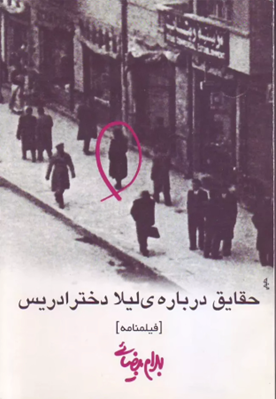
Figure 32: Book cover, Bayzā’ī’s Truths about Leila the Daughter of Idris (1982).
In 1976, Bayzā’ī’s attempts to produce Truths failed because the CEO of the Shirkat-i Gustarish-i Sanāyi‛-i Sīnimā’ī-i Īrān (the Corporation for Expanding the Iranian Cinema Industry), Bahman Farmānārā, insisted on replacing Parvānah Ma‛sūmī, Bayzā’ī’s choice for the lead actress, and thus the film was never made. The screenplay, however, was published a few years later and continued to have an impact on the next generation of filmmakers.44For instance, Downpour and Truths about Leila the Daughter of Idris have had a major influence on Asghar Farhādī’s The Salesman (2016). The premise of Farhādī’s film echoes that of Bayzā’ī’s Truths, and the film places a man of Mr. Hikmatī’s type in a Qaysar-like situation to mark the metamorphosis of a compassionate man in a culture of toxic masculinity.
Having realized the impossibility of removing the obstacles for making Truths, Bayzā’ī immediately wrote The Crow, which received a limited budget from the same company and was completed in 1977. The Crow, the first film in Bayzā’ī’s city tetralogy, is also the first film in which Bayzā’ī’s epistemic privilege displays itself in an intellectual woman whose centrality suggests Bayzā’ī aspiration to redefine the roles of women in Iranian society. It is also the first of four films which use mystery and noir film elements and surrealistic journeys in time or to different parts of a violent city to contemplate the rise and the pitfalls of Iranian modernity.
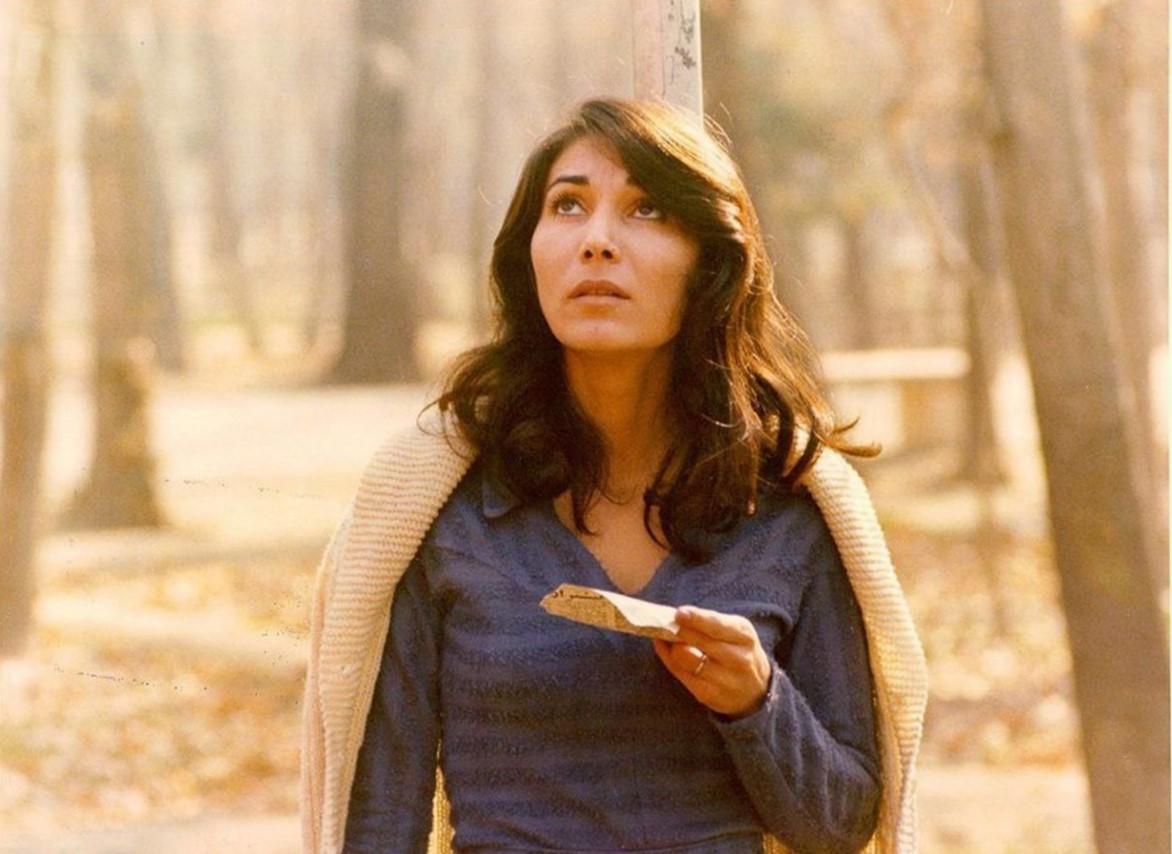
Figure 33: A Screenshot from the film The Crow (1977), Bahrām Bayzā’ī.
In the film, the photo of a missing person’s advertisement, featuring a girl of about eighteen years old, attracts the attention of a news anchor, Isālat, who embarks on a quest to find the missing girl. Isālat enlists the help of a journalist and a TV presenter with detective techniques reminiscent of inept police assistants of ingenious detectives in noir films. Isālat’s wife, Āsīyah, due to her job as a teacher of deaf children, is involved on a daily basis in forms of communication that require intellectual precision, sympathy, empathy, and sensitivity to sounds, images, and movements. Despite these qualities, she remains disinterested in Isālat’s quest as she assumes it to be another of his temporary interests and conversation subjects for the phoney collegial parties and relationships that characterize Isālat’s life. After an accident occurs in which she escapes from a kidnapper, however, Āsīyah’s curiosity is provoked about the girl, setting her on a mission which highlights the condition of women in a society characterized by extremes of medieval and pseudo-modern mentalities and practices.
Contrastingly, while Isālat is obsessed with superficial clues, Āsīyah, who is also writing down the memories of Isālat’s mother, ‛Ālam, engages instead in discovering the past and the present of the city and its people. Bayzā’ī thus directs Āsīyah’s constructive curiosity toward the nexus of personal and national histories in order to discover the sources of alienated and authentic identities in her culture. Thus, rather than Isālat, it is Bayzā’ī’s heroine Āsīyah, a creative, intellectual woman from a lower-class family, who comes to discover that the photo of the missing person features the youth of Isālat’s mother, ‛Ālam. The revelation puts the events of the film in perspective as the audience now knows that ‛Ālam sent the picture to the missing people programme to protest against being forgotten. ‛Ālam, the young woman in the photo, lost her beloved fiancé during the occupation era of the 1940s, had a short loveless marriage afterward, worked as a nurse, adopted Isālat when he was a three-year-old boy, and has now come to feel neglected and lost in old age.
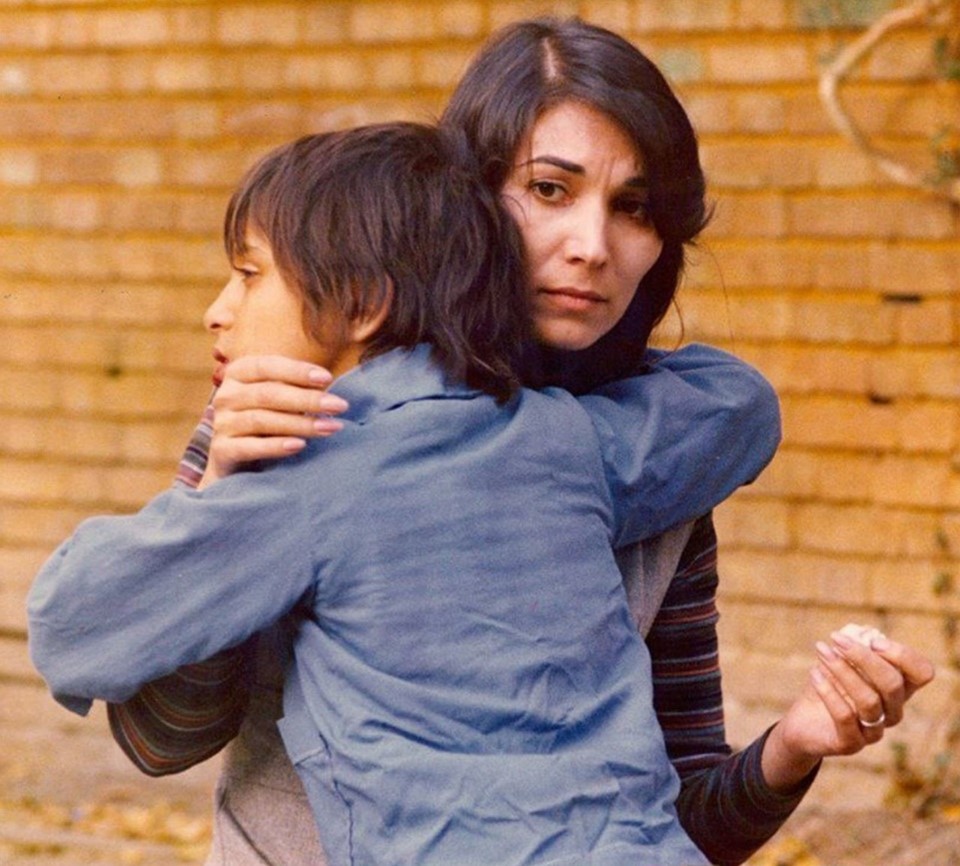
Figure 34: A Screenshot from the film The Crow (1977), Bahrām Bayzā’ī.
At this symbolic level as well, the crow of the film’s title—communicated to the audience through the story that Āsīyah recounts for her deaf pupils–is represented by Ālam, a woman who lost her dreams and her potential for fertility and creativity in the conflicts arising from the misguided trajectory of Iranian modernity. Āsīyah, however, is the woodpecker of the story, the one who pecks for the truth by rereading the past and present to get to the marrow of what Iranians are, what they can be, and what they have been dreaming of becoming.45In the story, the crow asks the woodpecker why she keeps on pecking at the bark of the tree, and the woodpecker says that she penetrates the bark to find what is underneath and that the pain of pecking is worth what she finds there.
The Crow is filled with characters who, in contrast to Āsīyah, are “inauthentic.” As in Isālat’s case, they are likeable due to their engaging and fun-loving personalities and their efforts to do something useful, but they have no clue about the ethical import of their actions or the bigger picture in which their lives are framed. As reflected in the scene in which the host of a party searches the pockets of his guests when a gem is lost, they also have no self-respect and easily bend to the dominant discourse and the policing of their private lives. Bayzā’ī’s use of names with direct or ironic vice and virtue connotations highlights this aspect. Thus, Isālat, whose name indicates authenticity, is anything but authentic, and his friend Daymkār (dryland farmer), whose name suggests planting without caring, is a happy-go-lucky dandified person who is only concerned with superficial relations and being easy going.
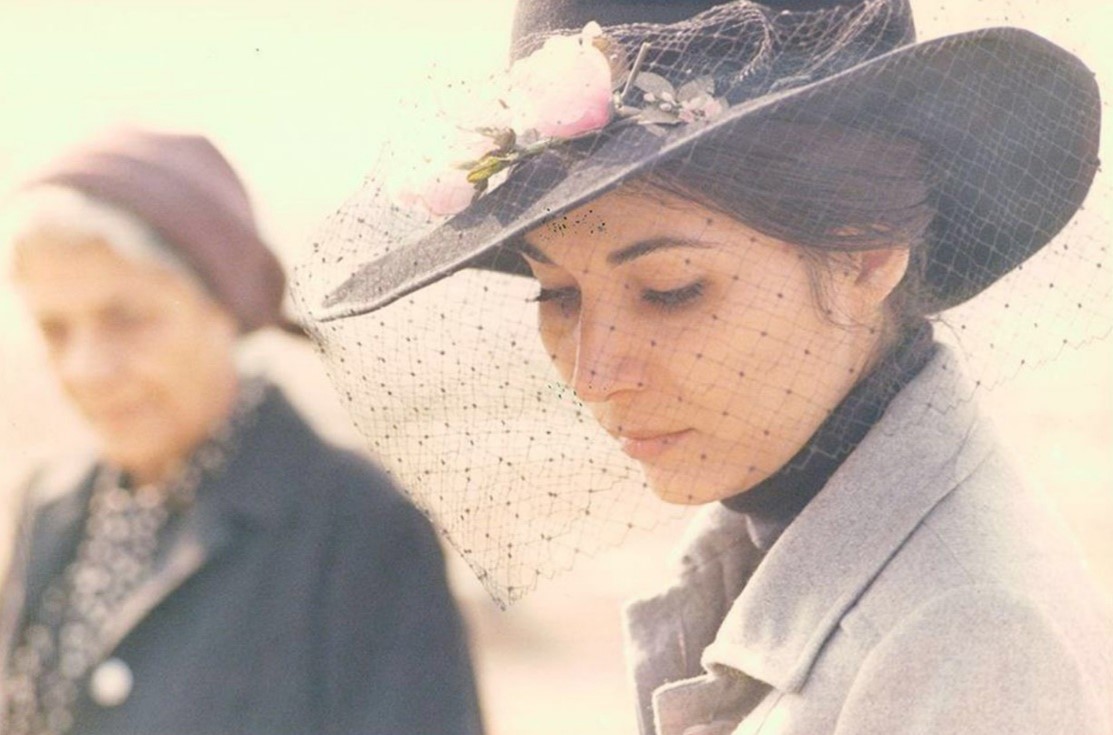
Figure 35: A Screenshot from the film The Crow (1977), Bahrām Bayzā’ī.
Besides focusing on an intellectual woman, a new feature of the film was the level of its self-reflexivity which transcended Bayzā’ī’s former engagements with cinema as a subject. For instance, Isālat, a television presenter and documentary filmmaker, is the one who initiates Āsīyah’s quest for finding the lost girl. Several filmmaking and photo-related scenes also comment on the relationship between photos and films with the truth, the past, the present, the philosophical meaning of time and space, and the position of cinema or other media in a culture obsessed with appearances and doing things just to entertain, earn a living, or pretend to care. Several characters also bear out this theme. For example, ‛Ālam’s lost fiancé was fascinated by new technology, had a camera, and took good photos. Relatedly, Isālat is also enamoured with technology, cameras, and modern modes of communication, yet he fails to communicate with ‛Ālam, who has raised him, or Āsīyah, who is going to give birth to his child. He involves himself instead in making documentaries that are supposed to convey the truth of social issues, but he does not really care about resolving them. These documentaries are assembled with fake dialogues and scene arrangements and are not concerned with how and why the issues they proport to examine have evolved through time. Further, ‛Ālam’s old house and district only survive in her mind and her fading photos. However, similar to the way in which history only preserves “the bigger picture,” her album only contains large photos while almost all the small ones are missing.
Bayzā’ī also uses the performance of the deaf pupils in the school celebration scene to self-reflexively comment on the impossibility of communication in a culture in which various forms of state, religious, and cultural censorship force artists to communicate with the language of signs and suggestions, rather than direct visual and linguistic engagement. Self-reflexive elements are also present in Āsīyah’s aspiration as a writer of memories, that is, as a writer who wants to understand and reconstruct the past. Thus, the difficulties that she faces, especially in establishing links between the memories, photos, places, and people of the past who are still alive, are those of a person who believes that a proper understanding of the past is necessary for building a better future. Such a belief is problematic as the film suggests that in her society, most people are satisfied with here and now and do not believe in rereading the past to understand the present or improve the chance of creating a better future. At this level, the film also subverts the tradition-modernity binary. Rather than setting the two against each other, as Isālat’s copying of Western modernity entails, The Crow suggests that the most constructive form of modernity is one that actively learns from and communicates with other cultures while reformulating for the present those aspects of the indigenous tradition that can generate a homegrown form of modernity. Bayzā’ī’s heroine, therefore, is the most modern person in the film, but she is not alienated from her tradition. She has “a room of her own,” but unlike ‛Ālam’s room, which is full of useless objects which once represented borrowed modernity, Āsīyah’s room, a greenhouse, is the only fertile and naturally beautiful space in the film. This is because her epistemic authority, rooted in her gender, lower-class origins, intellectual curiosity, education, and job, enables her to gain access not only to her own room and that of her parents who are flower gardeners, but also to ‛Ālam’s room and parties, and the lost memories and spaces that must be examined for understanding the present.

Figure 36: A Screenshot from the film The Crow (1977), Bahrām Bayzā’ī.
This idea is reinforced in the expressionistic reflections of evocative sounds and images in the sequence in which Āsīyah escapes from her kidnapper. In the scene, she passes fully covered women, made up hairpiece mannequins, ruined houses, and high-rise buildings before ending up in a shop full of clocks that show different times. Similarly, the scene in which she and ‛Ālam walk in an imagined old Tehran reinforces the idea of the need for rereading the past. Bayzā’ī thus problematizes the concept of time, the gap between the extremes of cultural practices, and the ignorance of the past. In this context, Āsīyah’s hesitant gaze at the end of the film suggests that she feels the impossibility of filling this gap and the possibility that another historical breach may deal her a fate like that of ‛Ālam. Thus, the film also highlights the cultural chaos of the particular “present” of the mid-1970s, an era which soon exploded with the Revolution and widened even further in its aftermath.
Due to its successful use of noir and expressionistic motifs and techniques, The Crow had the potential to become Bayzā’ī’s bestselling film, but the conflicts of the Revolution and the fear of another incident like the fire at Cinema Rex in Ābādān led to the closure of cinemas just a couple of weeks after the film was released in October 1978.46On 19 August 1978, Cinema Rex of Ābādān in Iran was attacked and burnt down by Islamic extremists who later blamed the Pahlavi government officials for the fire. The fire, which led to the death of 377 people, was effectively used by the Islamists’ propaganda to intensify the revolutionary anti-state demonstrations that had remained limited until then. For a brief account, see Abbas Amanat, Iran: A Modern History (Yale: Yale University Press, 2017), 719. The Crow, therefore, became a key film in inspiring some of the best films of the Iranian New Wave, particularly those by Asghar Farhādī, but remained underappreciated by the public.47See Talajooy, Iranian Culture, 193-235; and Khatereh Sheibani. “The Outcry of The Crow: Localizing Modernity in Iran,” Canadian Journal of Film Studies / Revue Canadienne D’études Cinématographiques 20, no. 2 (Fall 2011): 95-110, and “Film as Alternative History: The Aesthetics of Bahram Beizai,” in Familiar and Foreign: Identity in Iranian Film and Literature, eds. Manijeh Mannani and Veronica Thompson (Edmonton: Alberta University Press, 2015), 211-32.
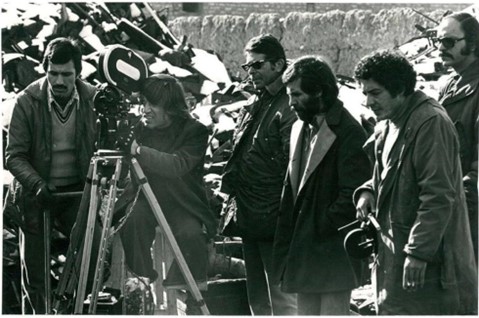
Figure 37: Behind the scenes of the film The Crow (1977), Bahrām Bayzā’ī.
1977: Āhu, Salandar, Talhak and Others and The Mourning Wail
After The Crow, Bayzā’ī wrote the historically and ritually charged Āhū, Salandar, Talhak va dīgarān (Āhū, Salandar, Talhak and Others, 1977), a screenplay with three filmic narratives set in medieval Iran. Āhu, the first narrative, recounts how feudal rulers mutilated love through their practice of prima nocta, the right a ruler claimed to spend the first night with any new bride. In a series of understated and succinct scenes, the screenplay depicts a high-spirited girl slaying the feudal lord in revenge for killing her beloved husband who rebelled against this rule. The second narrative, which was turned into a short film by Vārūzh Karīm-Masīhī in 1980 and another by Rafi Pit in 1994, showcases Iranian mysticism as a method of cultural and political resistance. The third narrative is directly self-reflexive as it refashions the comic ritual of Mīr-i Nawrūzī (Lord of Misrule). It also reflects on how those who fail to achieve self-awareness and self-criticism project their self-resentments and criticisms onto others while remaining unwilling to see the same problems in themselves. The language of these three pieces shows a clear progress in Bayzā’ī’s adaptation of the medieval modalities of the Persian language for cinema. They also offer templates that celebrate difference by focusing on the victimization, resistance, and survival of three intellectually divergent characters: a divergent girl, a mystic thinker, and a witty comic performer.
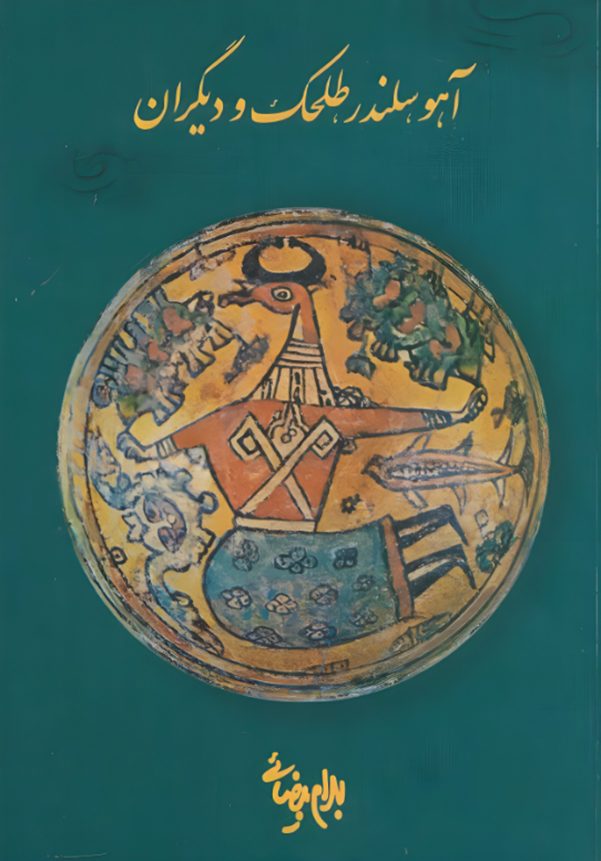
Figure 38: Book cover, Bayzā’ī’s Āhu, Salandar, Talhak and Others (1977).
These features are also central to The Mourning Wail (Nudbah, 1977), which marks Bayzā’ī’s return to playwriting after seven years and is one of the earliest in which, like The Crow, he uses specific historical events as his settings to comment on the failures of Iranian modernity, the people’s inability to unite against tyranny, corruption, and external enemies, or the culture’s failure to protect its innovative people and systems of knowledge transfer against dogmatic opportunists. The play, which juxtaposes the worlds of early twentieth century women, rebels, and oppressors, creates a template that reframes taʿzīyah and taqlīd motifs and techniques to depict the status of Iran during the Constitutional Revolution, focusing on the lives of unknown women and their historically renowned or unknown visitors in a brothel. The play is, thus, partly in dialogue with Jean Genet’s The Balcony (1962) in that the relations of power in the brothel between its inhabitants and visitors function as a microcosm of the world outside. Bayzā’ī, however, also comments on how emancipation fails when the revolutionaries and the oppressors are similar in their understanding of power relations and when those who are different are easily victimized. The protagonist Zaynab, a girl sex trafficked by her fiancé, stands out as the most ethically responsible and compassionate person in the play. This is especially significant in the context of the world depicted in the play which is filled with the so-called politically committed people and their claims of being moral and socially responsible. These individuals hide behind their ideas to justify raping, breaking, burning, and killing, either due to their sadism or for their own political or economic gain. While linking the future of a nation to the way it treats its women, children, and marginalized people, the play uses name symbolism to associate Zaynab, whose name echoes that of Imam Hossein’s sister, with ta’zīyah sacrificial heroes. Rather than reflecting a religious outlook, however, this association signifies how people mourn atrocities inflicted on religious figures hundreds of years ago while they themselves inflict similar atrocities on those around them, especially women, children, and the marginalized. The play thus reflects and mythologizes the destiny of those average individuals who suffer as much as sacrificial heroes, but their accounts of suffering remain untold. By focusing on the imagined lives of marginalized people at one of the historic junctures of Iranian history, Bayzā’ī fulfils his ideal of writing a history of the common people, but he also marks people as victims of revolutions and shows how revolutions replace one form of tyranny with another as they do not change the suppressive relations of power.48Bayzā’ī, “Tark-i Ghughā,” 36; and Bahrām Bayzā’ī in Hamid Dabashi, Close Up: Iranian Cinema, Past, Present, and Future (London: Verso, 2001), 84. By focusing on a women-only space in which women-centred performances are included and into which different types of men enter to reveal their obsessions, failures, or merits, the play also creates a modern template for commenting on gender relations by using indigenous women-exclusive forms.
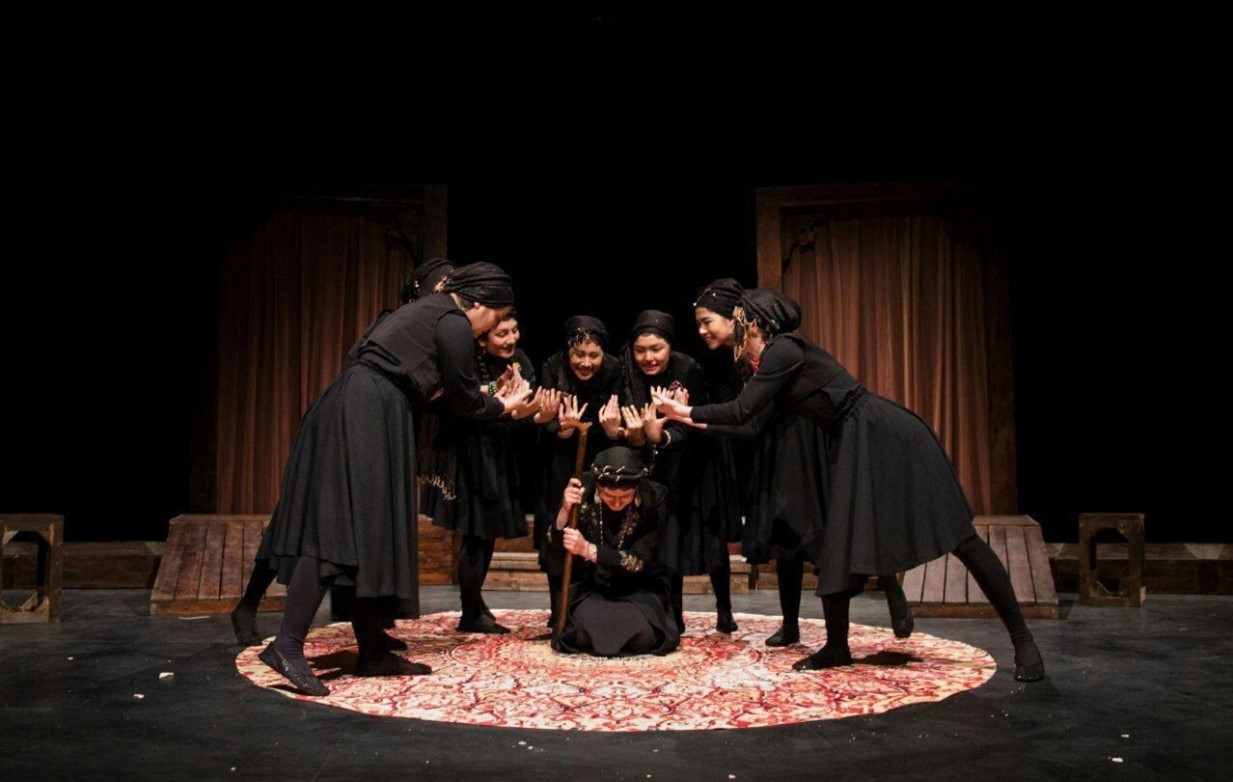
Figure 39: A scene from the theater The Mourning Wail (Nudbah), written by Bahrām Bayzā’ī (1977), directed by Ānāhītā Zīnī Vand (2017).
With The Mourning Wail, Bayzā’ī was at the verge of retuning to theatre, but his attempts to perform the play came to a halt when the director of the Mawlavī Hall cancelled its planned staging after a few weeks of rehearsal in 1977 for what seems to be a politically motivated conservative decision. The cast included such leading actors as Shuhrah Āghdāshlū in the lead role of Zaynab, as well as Manīzhah Salīmī, Mahīn Dayhīm, ‛Alī Zhikān, Manūchihr Farīd, Amīn Tārukh, and Parvīz Parastū’ī.49See Parvīz Parastū’ī in Laylī Karīmān, Man Parvīz Parastū’ī: Sitārah-yi Bī-Niqāb (Tehran: Tawfīq Āfarīn, 2013), 107-8. This setback led Bayzā’ī to return to filmmaking until two years later when he returned to the field with Marg-i Yazdgird (Death of Yazdgerd).
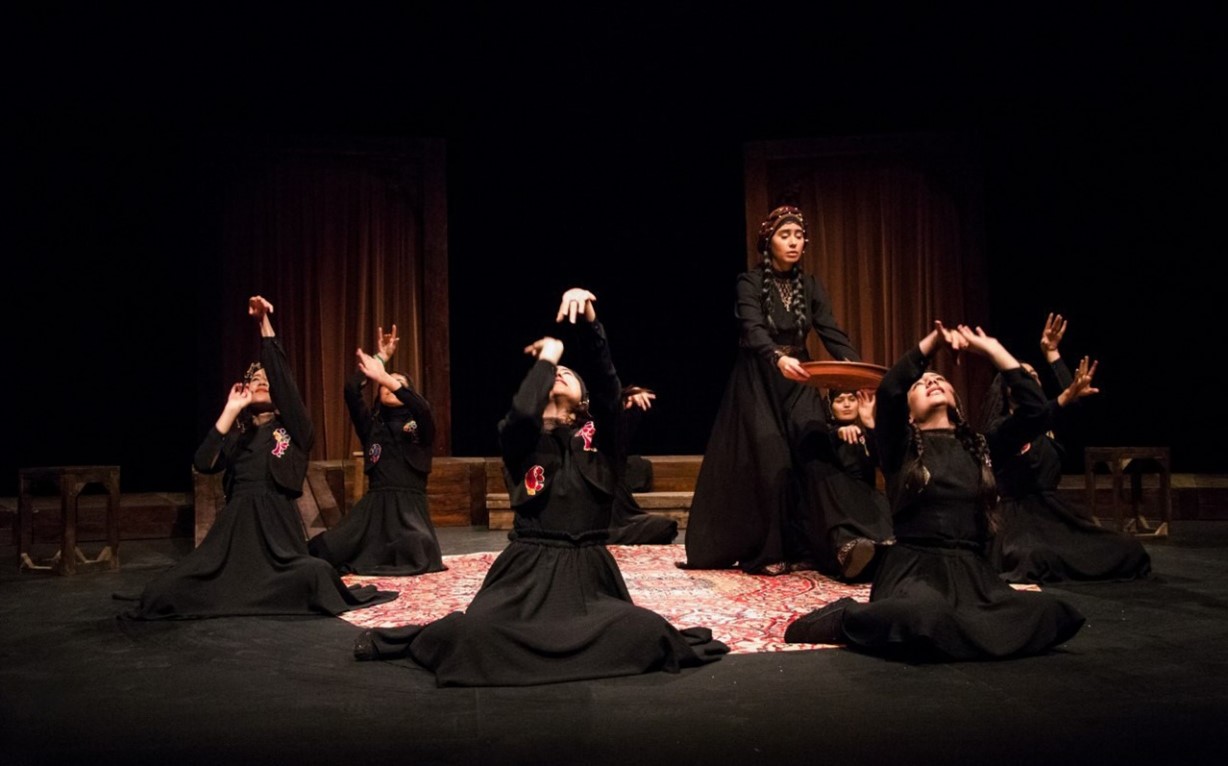
Figure 40: A scene from the theater The Mourning Wail (Nudbah, 1977), written by Bahrām Bayzā’ī, directed by Ānāhītā Zīnī Vand (2017).
1978: The Revolution and Ballad of Tārā
During 1978, as the Revolution spread all over Iran, Bayzā’ī directed his second village film, Charikah-yi Tārā (Ballad of Tārā), having already written the screenplay in 1977. Though most of the filming had been completed by December of 1978, the escalation of the revolutionary conflicts delayed the films’ final production until 1980, only for it to be ultimately banned from screening by the new censorship committees. As reflected in Table 1, such bans were far reaching and were not specific to Bayzā’ī’s films. The first year following the Revolution was particularly damaging to cinema. The new regulations meant that most films produced in 1977 and 1978 or earlier which still had sales potential were deemed inappropriate. With ever-hardening rules in place, the pressures became so devastating that by 1983, the industry came to a halt.50For a discussion of the problems Iranian filmmakers faced in the 1980s, see Hamid Reza Sadr, Iranian Cinema: A Political History (New York: Palgrave Macmillan, 2006), 166-210.
| Year | Films Reviewed | Permits Granted | Permits Refused |
| 1979 | 2000 | 200 | 1800 |
| 1980 | 99 | 27 | 72 |
| 1981 | 83 | 18 | 65 |
| 1982 | 26 | 7 | 19 |
| Total | 2208 | 252 | 1956 |
Table 1: Iranian feature films granted or refused screening permits (1979–82).51Quoted in Hamid Naficy, Social History of Iranian Cinema, Volume 3: The Islamicate Period, 1978–1984. (Durham: Duke University Press, 2012), 29. From Ministry of Culture and Islamic Guidance 1985, appendix 1, 38-39.
Despite this blow, however, Ballad of Tārā gradually found its place as a key product of New Wave cinema due to its powerful filmic qualities. The film concerns the story of the eponymous Tārā, a widow whose husband was slain by his brother, Āshūb. Tārā represents both a nation and an individual at a critical time of decision making, finding herself loved by four men who represent different aspects of Iranian identity. These include: her obsessive and murderous brother-in-law, Āshūb; the simple-minded and infatuated Ismā‛īl; the honest and capable Qilīch who loves and respects her; and an uncanny stranger—the Historical Man—from an unknown history who appears in the film in order to reclaim his sword but falls in love with Tārā instead. Between these four, Tārā’s preference dangles between Qilīch and the Historical Man. Ultimately, she tries to join the Historical Man in death to compensate for his victimization in the past, but the natural world rejects this unnecessary sacrifice, and she returns to marry Qilīch.
The film begins with a sequence in which Tārā, a young, attractive widow with two children, returns from her summer residence, only to realize that her grandfather has died. Soon after on her way to the beach, she sees a medieval warrior crossing the road (her first glimpse of the Historical Man). Tārā then returns to the village, distributes her grandfathers’ belongings among her neighbors, and gives his mirror to the hard-working Qilīch whom she likes. No one, however, wants her grandfather’s sword. Unable to use it as a scythe, an axe, or a knife, or to exchange it for anything useful, she throws it into a river. Soon afterwards, the armored Historical Man appears again. He tells Tārā that his people were all slain in an unfair battle and that the sword, which he has come to reclaim, is the only surviving vestige of his people. Tārā later finds the sword and, after killing a mad dog in an unexpected encounter, gives it to the Historical Man. This time, however, he states that he is in love with her, and that blood has begun to gush from his old wounds.
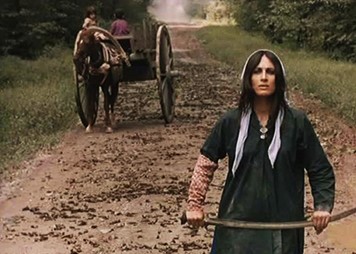
Figure 41: A Screenshot from the film Ballad of Tārā (1980), Bahrām Bayzā’ī.
The four men who represent the four directions that Tārā’s life might take are fascinated by her beauty, high spirits, honest and unapologetic sensuality, native intelligence, and intellectual versatility. At the film’s personal, realistic level, she has to deal with her brother-in-law Āshūb (a name which means “chaos”), a southerner, whom she suspects of having killed his brother to possess her. Unlike Tārā’s dead husband, Rahmān, who embodied protective, compassionate masculinity, Āshūb embodies the destructiveness, dogmatism, and greed of toxic masculinity. Āshūb also embodies an attraction that is likely to pull Tārā down and transform her into a docile wife with no agency. Ismā‛īl, a boy of about sixteen, embodies infatuation and retrogression into an earlier life that Tārā has long since passed. Ismā‛īl’s love, therefore, represents mere impulse which is likely to pull her back in time and character. Qilīch, on the other hand, is Tārā’s best choice. He is practical, hardworking, clever and as sensual as Tārā is, and Bayzā’ī leaves no doubts that he will be a dedicated and capable husband and father. Tārā’s choice, however, becomes complicated with the appearance of The Historical Man, a warrior from an unknown history and the land of the imaginal, where the ideal heroes and their narratives are awaiting intellectual revival. His love, therefore, embodies Tārā’s desire to know the past of her people and homeland, to build firmer ground for her identity, to compensate for the wrongs of the past, and to be united with the sky and the heroes of the imaginal and their ideal of a nation aware of its history. Uniting with him, however, runs the risk of an obsession with abstract ideals and a past which may impede productivity and fertility in the present.
Her choice, therefore, also reflects an allegory of national liberation. If Tārā chooses Āshūb, the violent, controlling patriarch whose sisters’ clothing suggest that he also represents the consecration of patriarchy in religion, she will be forced to say no to her freedom and her desire for delight. If she chooses the Historical Man, the subconscious embodiment of dead heroes, she must join him in death or, even worse, lose her children to death in order to revive him. In other words, obsession with historical glories or past wrongs submerges the individual in a whirlpool of revenge which distorts the possibility of building a future. Indeed, as the account of the Historical Man demonstrates, history is a chaotic world of violence with layer after layer of discord, opportunism, greed, and fratricide. The fratricidal aspect of the Historical Man’s account also echoes, at a national level, Tārā’s personal story of Rahmān’s death. This in turn indicates that her visions of the Historical Man may be the projection of her attempts to understand the roots and the impacts of fratricide on her culture. Notably, the Historical Man and his people were massacred by those who claimed to be their brothers in religion but instead betrayed them for worldly gains.
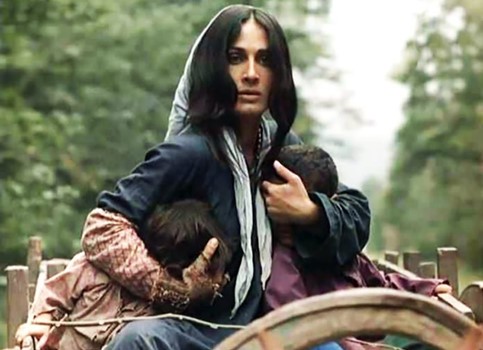
Figure 42: A Screenshot from the film Ballad of Tārā (1980), Bahrām Bayzā’ī.
Tārā, attracted to the Historical Man’s benevolent strength and sense of honor, is so overwhelmed with pity and desire that she wants to join him in death in order to compensate for the wrongs of history. Indeed, her love for the Historical Man grants her a new understanding of who she is and gives new meaning to her grandfather’s sword, and the nearby castle, forest, and sea as places in which people died to protect their loved ones. However, Bayzā’ī structures the plot to signify that the past is not the land of glory it seems to be and that even its heroes are ready to exchange its distorting, cruel honors with a simple life.52See also Bayzā’ī in Qukasiyan, Guftugū, 154-156. Tārā’s ideal love, therefore, proves to be Qilīch, whose kindness, energy, and work ethic indicate that he can serve Tārā, her children, and their homeland as much as she does. If Āshūb’s path is downward, Ismā‛īl’s backwards, and the Historical Man’s upward, Qilīch’s path is forward. Thus, he is the only man who has the potential to be as forward looking as Tārā.
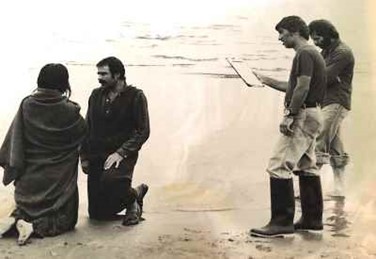
Figure 43: Behind the scenes of the film Ballad of Tārā (1980), Bahrām Bayzā’ī.
This is a liberating response to the tumultuous history of a nation which, confused by the rivaling claims of capitalist, leftist, royalist, and Islamist utopian ideologies and the degrading games of neo-colonialism, was barreling headlong towards revolution. In this context, the film rereads the past and mythologizes the transitional state of a people trapped between the claims of modern totalitarianism and outdated religious and cultural godheads. Tārā, as the soul of the nation, must decide what to do with her past, bitter conflicts. To pick up the sword and settle old accounts uncritically, to follow honor by saying no to the comforts of life, or to free herself from the plights of past dogmas and heroes and reconcile with love to build a productive life.
At its archetypal level, the film builds on the agricultural myths of earth, water, and fertility goddesses such as Ishtar, Isfandārmaz, and Ānāhītā. Like Ishtar, Tārā, whose name echoes a later version of Ishtar’s name in folktales, is sensual, warlike, and aspires to descend to the underworld to reclaim a beloved man—her potential hero of fertility—who has been taken to the underworld in her place. Like Ānāhītā, who represents water, protection of fertility and family, and victory in war, Tārā is also associated with the river and the sea, inherits a sword, and marries Qelich whose name also means “sword.” Like Isfandārmaz or Mother Earth, Tārā is additionally associated with motherhood, earth, choosing one’s husband, and preserving and resurrecting the dead.53For a girl’s ability to choose their husband during the Feast of Isfandārmaz, see Bīrūnī, Al-Āsār Al-Bāqīyah, 355. The association of the goddess with a girl’s freedom to choose her husband is also reflected in the myth of Ārash in which, though Isfandārmaz is (forcefully) betrothed to Afrāsīyāb (the earth, being occupied by an invader who has caused a drought), she guides Manūchihr and Ārash to craft the bow and the arrow that Ārash uses to extend Iran’s borders to central Asia. See also Talajooy, “Genealogy of Ārash.” This archetypal level is further reinforced by the simultaneity of the film’s main narrative with the villagers’ taʿzīyah performance. As a ritual originating in the fertility rites of dying gods and sacrificial heroes, and still associated with bringing prosperity and fertility to the lives of those performing it, the taʿzīyah performance becomes a parallel for the main plot. This suggests that Bayzā’ī’s film seeks to highlight the passions of the real defenders of the land, those who, like the Historical Man, fought against forces of destruction, featuring a passion play which is far superior to the one buried under layers of religious symbolism.

Figure 44: A Screenshot from the film Ballad of Tārā (1980), Bahrām Bayzā’ī.
This archetypal level also contains the film’s reflections on the idea of the imaginal or Nā-Kujā-Ābād (nowhere land), a place where the heroes of the past wait to be revived and reembodied to provide guidance and cultural authenticity for the living.54Nā-Kujā-Ābād is the unseen world of the ever-living heroes and saints between the earthly world (گیتی) and the heavens or the unseen space of the divine (مینو). Embedded in this pre- and post-Islamic cosmology is also the Shi’i idea of shahīdān-i shāhid “the living, observant martyrs,” who reside in a paradisaic limbo and are the eternal testifiers to the truth of their belief and also cognizant and observant of all human activities. The idea of communion with “the imaginal” has a structural significance that turns the film into a modern, secularized taʿzīyah which simultaneously asserts the pre-Islamic, animistic roots of the form.55For the imaginal in Iranian cultural products, see my chapter on Ballad of Tārā in Saeed Talajooy, Bahram Beyzaie’s Cinematic and Dramatic Worlds: In Dialogue with Time (1979-2021) (London and New York: Bloomsbury/IB Tauris, 2025). The term “Imaginal” was first introduced by Henry Corbin as a portmanteau word to refer to the two sides of the concept which introduces a “real” realm that is both original and imaginary and stands between the mundane and the spiritual. See Henry Corbin, “Mundus Imaginalis or the Imaginary and the Imaginal,” in H. C. Corbin, comps. Les Amis de Henry and Stella Corbin (1964), accessed June 30, 2021, https://www.amiscorbin.com/bibliographie/mundus-imaginalis-or-the-imaginary-and-the-imaginal/, Part 1, and Spiritual Body and Celestial Earth: From Mazdean Iran to Shi’ite Iran (Princeton: Princeton University Press, 1977), ix. The idea of an unseen world where the heroes of the past are ever-living can be seen in a number of narratives in Zoroastrian scriptures and in the Shāhnāmah, where Iranian pre-Islamic utopian myths are reformulated for a post-Islamic Iranian sensibility. These narratives include the legends in which Kaykhusraw, the ideal King of Iranian mythology, vanishes into the unseen world along with a number of his followers who are to come back in an unknown future. The references to Jamshīd’s Vara, Varjamkard (Jamshīd-made fort) in which people are supposed to be free from disease and live eternally, or Sīyāvush’s ideal Gang Dezh (Gang Castle), which exists between heaven and earth, also specify that they are ever-existing in an unseen realm and are inhabited by the pure ones who will join the Zoroastrian savior.56See James Darmesteter, trans., The Vendidad. The Zend-Avesta, Part 1 (Oxford: Clarendon Press, 1880) Zoroastrian Text, Fargard 2, 10-20; Faranbagh Dadegi, comp. Bundahishn, trans. Mehrdad Bahar (Tehran: Tus, 1990), Zoroastrian Text, Part 18, 139-42; and Corbin, Spiritual Body, 23-24, and 278. While celebrating Sīyāvush and Kaykhusraw’s spirituality, Firdawsī’s inclusion of Zāl’s comment on Kaykhusraw’s vanishing signifies the worldliness of a different type of intellectuality that the Shāhnāmah equally celebrates. In the comment, Zāl, who embodies worldly wisdom and human-centred practicality, states “the wise would laugh at the business of someone going to god alive”: “Khiradmand az īn kār khandān shavad * Kih zindah kasī pīsh-i Yazdān shavad.” One of the first post-Islamic mystic elaborations of the idea of Nā-Kujā-Ābād occurs in Shaykh Shahāb al-Dīn Suhravardī’s (1154-91) writings. The idea which has influenced the Shi’i beliefs in the occulting twelfth Imam and the ever-presence of Karbala martyrs and other religious figures in an unseen world occurs in ‛Aql-i Surkh (Red Reason or Crimsoned Archangel, ca. 1180s) and Sidā-yi Āvāz-i Par-i Jibra’īl (Rustling of Gabriel’s Wings). In these stories, a stranger from the unknown, the imaginal, appears to take the individual on a journey of self-discovery and, having completed the journey, disappears leaving the individual in the same place where their journey began.
In this context, the Historical Man appears like the angelic being in Suhravardī’s Red Reason to provide guidance and express the truth, which in his case involves conveying the claims of a marginalized, neglected past to the people of the present. In Bayzā’ī’s film, however, this messenger of the imaginal learns as much from Bayzā’ī’s lively heroine as she learns from him. Bayzā’ī celebrates humanity’s constructive worldliness, the idea of belonging to the here and now and working to make it better, rather than being obsessed with religion and the afterlife. He also subverts mystic obsessions with death by showing how the Historical Man craves the normal family life of fertility, productivity, and love that he could have had with a woman of Tārā’s qualities. Ultimately, he overcomes the tug of war between love and honor in his soul by realizing that the highest form of honor is not the one associated with honoring his sword to maintain his good name in history. Rather, the Historical Man comes to understand that the highest form of honor lies in the kind of sacrificial love and service that Qilīch can offer to Tārā. Upon realizing that Qilīch will readily accept the responsibility of Tārā’s children even if he cannot have her, and that Tārā is ready to join him in death to compensate for the wrongs of the past, the Historical Man experiences a level of compassionate humanity which transcends the binaries of honor and love.
This archetypal level also highlights one of the main roots of Bayzā’ī’s focus on women protagonists in the folktale of “Mihrīn Nigār and the Snake King,” a tale which had fascinated him since his childhood when he first heard it from his maternal grandmother.57See “Mihrīn Nigār va Sultān Mār,” in ‛Alī-Ashraf Darvīshīyān and Rizā Khandān Mahābādī, Farhang-i Afsānah-hā-yi Mardum-i Īrān, Vol. 14 (Tehran: Nashr-i Kitāb va Farhang, 2003), 539-47. In its essence, the story is like those folktales that are categorized as ATU425A, ATU425B, ATU433C, and ATU314 under the Aarne-Thompson-Uther Index.58The Aarne-Thompson-Uther tale-type index (ATU index) “classifies story plots into seven broad categories. Each category is assigned a group of numbers” which specify the subcategories. The broad categories are 1-299 (Animal Tales), 300-749 (Tales of Magic), 750-849 (Religious Tales), 850-999 (Realistic Tales), 1000-1199 (Tales of the Stupid Ogre [Giant, Devil]), 1200-1999 (Anecdotes and Jokes), 2000-2399 (Formula Tales). For more, see ATU-AT-Motif: Explanation of pages at Libraries: University of Missouri which also contains titles of each type, accessed December 1, 2023, https://libraryguides.missouri.edu/c.php?g=1039894&p=7610331. These include the legends of Savitri saving her husband from death (Yama) in Mahabharata, Ishtar’s second journey to the underworld to reclaim Dumuzid for half of the year, or Isfandārmaz’s protection of the dead in her heart. Thus, Bayzā’ī’s film includes echoes from all those legends in which a questing hero goes to the underworld or its epic or literary equivalent to save others. In the Shāhnāmah, the best examples of such quests include Rustam’s descent into the den of demons in Māzandarān, or his journeys to the land of trickster enemies in Hāmāvarān to save Kaykāvūs and the Iranian army and to Tūrān to extract Bīzhan. Giev’s extraction of Kaykhusraw from Tūrān is also similar. The motif of being ready to die instead of someone else also corresponds to the Turkic/Azeri legend of “Wild Dumrul, Son of Dukha Koja,” the fifth episode of Dede Korkut (ca. 1400s). In the tale, Dumrul challenges Death to single combat when he finds that he has taken the life of a young man. He is defeated, but when he is about to die, God forgives him with the condition that he finds someone to replace him. Rejected by his parents, he goes to bid farewell to his wife who volunteers to die on his behalf. In the end, the willingness of each to die rather than let their beloved do so urges God to take the lives of Dumrul’s parents instead and give the couple a prosperous long life together.59Geoffrey Lewis, trans., The Book of Dede Korkut (Harmondsworth, UK: Penguin Books, 1974), 108-17. Similar motifs are also present in the myth of Alcestis who volunteers to die instead of Admetus, her husband, but is saved by Hercules who defeats Thanatos, the embodiment of death. Such myths have also been adapted for films with various forms of reframing as in Fritz Lang’s Der Müde Tod (The Tired Death, 1921) or Masaki Kobayashi’s horror anthology Kwaidan (Ghost Stories, 1965).
Bayzā’ī, who was inspired by his mother and grandmother’s intelligence and wisdom and had two daughters in a world in which patriarchal values were still dominant, reframed the essential motifs of the above folktale type to celebrate and promote the personal and social agency of women in his films. This essential plot structure is particularly evident in those films in Bayzā’ī’s oeuvre in which a woman protagonist embarks on a quest to reclaim herself or a beloved form the underworld as in Ballad of Tārā. This structure is also apparent in his films which represent the realistic or symbolic equivalent of the underworld, such as a neglected past or identity (The Crow), the threat of execution (Death of Yazdgerd), a dark forest and the storm of rejection (Bāshū, the Little Stranger), death and death-centered beliefs (Travelers, 1991), or imprisonment and victimization (Killing Mad Dogs). It is even apparent in the embedded film which is being made in When We Are All Sleeping and the main film itself. In the embedded film, a woman desires to join her beloved in death, and in the main film, the beloved represents cinema itself which the screenplay writer, a woman, and the director, a man, try to save from being buried due to the opportunism of philistines and corrupt investors. In each case, however, Bayzā’ī introduces an emancipatory angle that reframes this epic of heroic extraction. Thus, in Tārā, Bayzā’ī suggests that the ideals of the Historical Man, who has come from the imaginal and is to be saved from the land of the dead, are too dated for the present. He must instead learn as much from Tārā as she from him, and, in the long run, she is the person who inherits her grandfather’s sword and becomes the agent of fertility and protection. This can also be observed in Killing Mad Dogs: although Gulrukh fulfills her quest to save her husband from prison and victimization, she eventually realizes he has been using her to swindle others. Rather than being angry about this, however, she leaves him to be punished by others only too like him and sublimates her rage by writing a novel which, it is suggested, is the basis of the film itself.
In other words, rather than rejecting Iran’s cultural traditions and attempting to replace them with a borrowed conception of existence, Bayzā’ī’s emancipatory reframing, operating at archetypal, cultural, and socio-political levels, plunges deep into its resources to recreate them for a new age. In Dabashi’s terms, he conducts “a successful negotiation with the enduring parameters of the Persian mythologizing imagination” to create a “countermyth.”60Dabashi, Close Up, 97. The film itself functions like a secular ta‘zīyah cycle in a setting in which ta‘zīyah plays are performed as fertility rituals in marginal scenes and folk beliefs are reflected in scenes that reveal Tārā’s emotional status. Thus, Bayzā’ī pushes the audience through the gamut of contradictory emotions, bringing together past and present, comedy and tragedy, romance and history, marriage and mourning, South and North, known and unknown, old and young, and the living and the dead to offer a powerful template for epic cinema.61For more, see Chapter 1 of Talajooy, Bahram Beyzaie’s Cinematic. See also Talajooy “Ballad of Tara,” in Directory of World Cinema: Iran 2, 392-94.
1979: Bayzā’ī’s Return to Theatre with Death of Yazdgerd
In 1979, Bayzā’ī wrote and staged Death of Yazdgerd, the best historical play ever written in Persian. The play revolves around a sentence in Iranian history books, which reduces a major historical event to the greed of a peasant with: “Yazdgird the last Sasanian King sought shelter in a mill in Marv but was killed by the miller who craved the treasures that he had with him.”62This is a common statement in history books about what happened to Yazdgird III, but Bayzā’ī includes it at the very beginning of his play as an ironic statement. In Bayzā’ī’s play, however, the event becomes a site of revelation to reflect on how an empire collapses when its rulers are only concerned with preserving and fighting over their privileges without trying to understand their people. It also mirrors the fluidity of human identity and the essential fallacy of what is assumed to be history. The play begins with a Commander (representing the nobility), a Priest (representing religion), and a Corporal (representing the military) entering a mill. They are to stand judge against a Miller, his wife (the Woman), and their daughter (the Girl), who presumably assassinated the last Sasanian king, Yazdgird, while he sheltered in their mill. The play then evolves into a series of performances for survival in which the most voiceless people in the hierarchy of power (i.e., the Miller and his family) recount the events of their encounter with Yazdgird in the hope that they might change the verdicts of the three representatives of power. These plays within the play and the use of role-playing signal the idea of the fluidity of human identity, with each family member playing “the King,” themselves—the Miller, the Woman, and the Girl—and one another in turn. This dramatic structure and sharing of roles allow Bayzā’ī to reveal the humiliation of the human soul under the master-slave momentum that defines the structure of power in society.63In his analysis of Hegel’s dialectic of power, Alexandre Kojève states that “the DIALECTIC of the master and the slave is the inevitable result of the fact that human DESIRE is the desire for recognition,” which requires the subject to impose “his idea of himself” on another. Lacan reformulates this reading in his own analysis of “aggressivity” and desire for recognition to argue that such a desire results in conflict as “this other also desires recognition,” and the willingness to risk one’s life in the “fight for recognition” or “pure prestige” is the marker of being human. However, since “recognition can only be granted by a living being,” and the drive for preserving one’s life is equally strong, the conflict usually ends before one of the rivals is killed. Thus, the defeated person “gives up his desire for recognition,” “recognises the victor as his ‘master’ and becomes his ‘slave.’” Kojève and Lacan reflect on the dialectical variability of this relationship and discuss the sources of fulfilment open to the slave. They also argue that this momentum is inevitable as it is impossible to have a community of masters. See Dylan Evans, An Introductory Dictionary of Lacanian Psychoanalysis (London and New York: Routledge, 1996), 6-7 and 108-09; and Jacques Lacan, Écrits: The First Complete Edition in English, trans. Bruce Fink (New York: W. W. Norton and Company, 2006), 7-22.
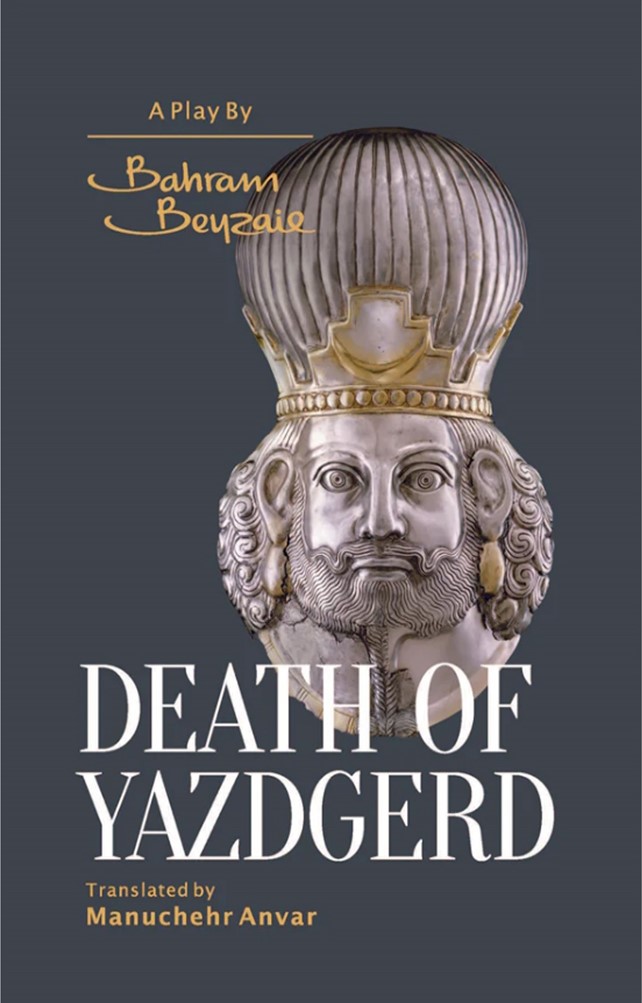
Figure 45: Book cover, Bayzā’ī’s Death of Yazdgerd (1979).
In the first re-enactment, Yazdgird, paralyzed by fear of the future, behaves wildly and orders the family around, causing them to first assume he is a bandit. He knows that his empire is about to collapse and that he must either escape and gather another army to fight the Arabs or die in the attempt. He is, thus, terrified of both death and life and behaves sadistically as he needs to feel he is still in control. In the beginning of the first performance, the Girl plays the King and the Woman and the Miller play themselves. They switch between narration and acting and then change roles until the Miller plays the King, the Woman plays herself and the Miller, and the Girl plays herself. The Girl additionally helps her mother, the Woman, with hints that enable her to change the course of their account like a master director. The scenarios that follow suggest that, rather than simply lying to save themselves, the family members—except the Girl—seek to hide some of what passed between them and the King as they feel ashamed of tolerating the humiliations that he imposed on them.
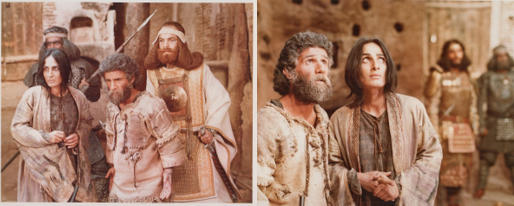
Figures 46-47: A scene from the theater Death of Yazdgerd (1979), directed by Bahrām Bayzā’ī.
The first scenario indicates that the King was devastated by his failures in his wars against the Arabs and the looming collapse of the empire. This first performance also makes clear that the Miller was furious that he and his people had been exploited and that his fifteen-year-old son had been drafted into a war which led to his death. Realizing that the judges are still determined to hang them, the family announces that despite his anger, the Miller did not kill the King as he knew that his entourage would follow him. The second scenario specifies that the King wanted to commit suicide, but he did not have the heart to do it himself. Thus, he first offered money and then ordered the Miller to stab him when he was distracted. Here, the Miller plays the King and himself, the Woman plays herself and the Miller, and the Girl plays the Woman. Once more, however, the judges remain determined to kill them. The Girl, therefore, initiates the third scenario which her parents are reluctant to perform.
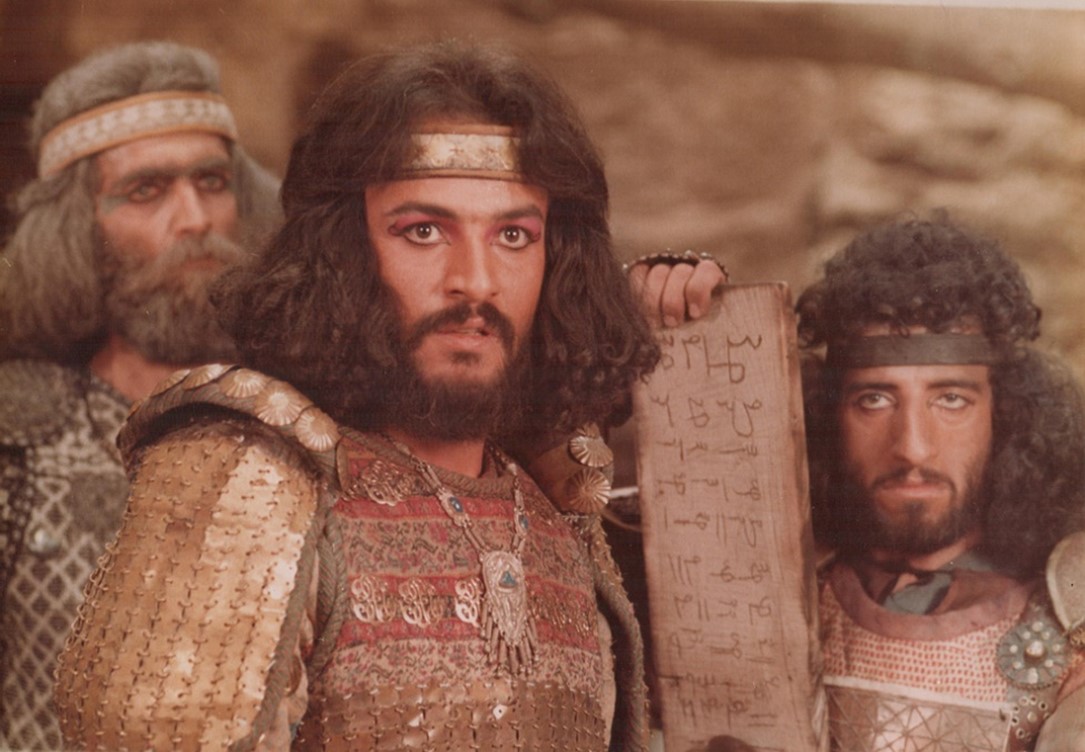
Figure 48: A scene from the theater Death of Yazdgerd (1979), directed by Bahrām Bayzā’ī.
In this third scenario, the King tries to provoke the Miller by humiliating him, raping the Girl, and then denying that he is the King. The Woman plays the King, and the Miller and the Girl play themselves. The scene borders on shocking as the Miller watches his daughter taken into a room and then raped by the King. Initially, the family pretends that the Miller accepted the rape. It is only when, upon hearing the King claim that he had got the better of them by pretending to be the King, that the Miller killed him. At this stage the Corporal, the closest to the family in his class origins, changes his verdict, while the Priest and the Commander remain adamant to hang them.
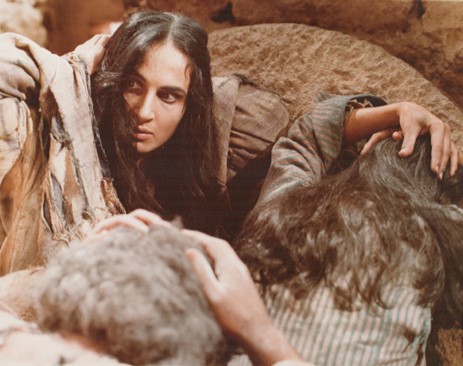
Figure 49: A scene from the theater Death of Yazdgerd (1979), directed by Bahrām Bayzā’ī.
Though seemingly random, the role-playing enables Bayzā’ī to reveal how the master-slave relations of power transform people, men and women alike, into raping agents against those immediately below them, also revealing how the hierarchy of power is reproduced in the family itself. For instance, the person who rapes the Girl is the Woman (her mother) playing the role of the King. Bayzā’ī thus signifies here how a woman may play the role of injecting master-slave values into the mind and body of her daughter. It also demonstrates how a father may do the same in his relationship with his wife and children. This is achieved by either imposing the values of the hierarchy of power onto his household, or by doing nothing to confront the imposition of power.
Realizing that the judges will not spare them, the Girl begins the fourth scenario, indicating that the Miller is the King and the corpse is the Miller. Aware of reports about kings covering their faces with masks to strike awe in their followers once revealed, Bayzā’ī introduces an interesting twist. The catch is that the Miller must either be the King or the murderer of the King. This works, at first, as none of the judges or the soldiers have ever seen the King. In a crucial scene, the three judges, who also function as the participating audience for the embedded plays that the Miller’s family perform, order the Woman to dress the Miller as the King to check his manners and postures. Bayzā’ī uses this command to turn the action into a ritual of crowning, with the Woman occupying the legendary place of the crown giving hero (Pahlivān-i Tājbakhsh). The judges go on to check the Miller/the King’s knowledge of life at the royal court with difficult questions, which the Woman accurately responds to instead of the Miller. This makes the Miller suspect the Woman, as he does not recall hearing the King explain those details. Thus, as in other cases in the play, the Miller’s actual character breaks the illusion of the embedded performance. He snaps out of the role and blames the Woman of sleeping with the King, which, in turn, demonstrates that the man is, indeed, the Miller rather than the King.
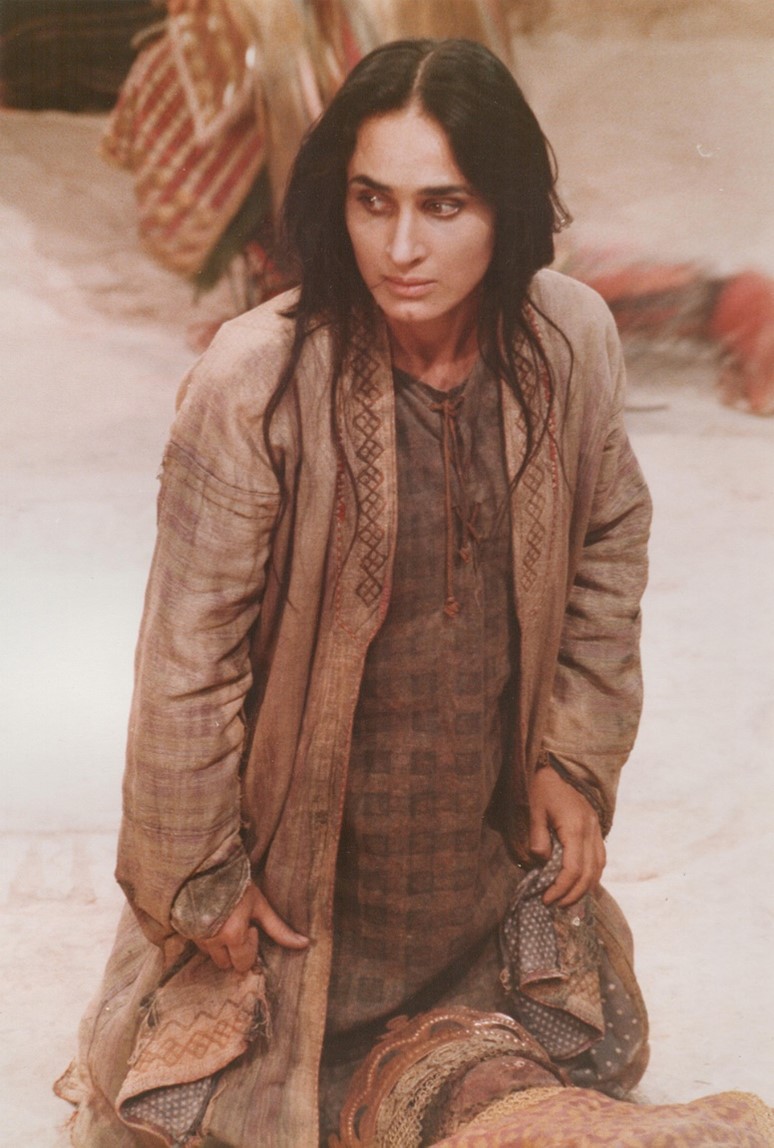
Figure 50: A scene from the theater Death of Yazdgerd (1979), directed by Bahrām Bayzā’ī.
Yet, just when the illusion of the fourth scenario breaks, the Girl delightfully initiates another which indicates that the Woman was seduced by the King and then promised to help him kill the Miller. This fifth performance reveals the Girl’s Electra complex and her desire to revenge herself against her parents for doing nothing when she was raped. The scene also exposes the ultimate depravity of a system in which even the most intimate relations are distorted by the relations of power and the toxic forms of masculinity and femininity that it produces. Additionally, the Woman’s lost dreams of happiness and fulfilment in being wealthy and her anger at her husband’s inability to do anything against the intruder stand out as her Achilles’ heel. The seduction scene performed with the Girl as the King and the Woman as herself is also striking as it occurs before the eyes of the judges which, in this case, also includes the Miller. The Girl’s carnivalesque rebelliousness and the dark comedy of her grotesque references to bodily fluids—which have thus far been taken as signs of her madness— begin to make sense in this scene and are further marked out as the most powerful emancipatory force in the play.64For the emancipatory functions of the grotesque and the carnivalesque, see Mikhail Bakhtin, Rabelais and His World, trans. Helene Iswolski (Bloomington: Indiana University Press, 1984), 49 and 287-88.

Figure 51: A scene from the theater Death of Yazdgerd (1979), directed by Bahrām Bayzā’ī.
This fifth scenario reveals that after sending the Miller out in a storm to find a sheep to slaughter for the monarch’s meal, the King seduced the Woman with the dazzling accounts of his riches and the promise of love and fulfilment in his palace. Yet, when the King tried to kill the Miller upon his return, the Miller overpowered and killed the King instead. It is ultimately never revealed whether the King actually wanted to kill the Miller or to be killed by him. However, what we most importantly come to understand is that, while any of the scenarios that Bayzā’ī has offered in the play may have happened, the main issue is the humiliation that individuals must suffer in the master-slave pyramid of power and money. In other words, at a fundamental level, Bayzā’ī shows that a nation cannot be born if its members bend to all forms of humiliation by the state and remain incapable of acting like responsible citizens.
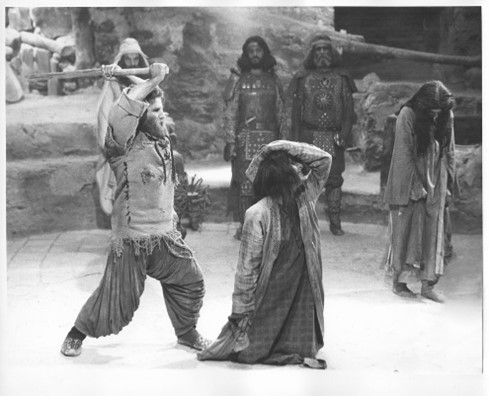
Figure 52: A scene from the theater Death of Yazdgerd (1979), directed by Bahrām Bayzā’ī.
With Death of Yazdgerd, Bayzā’ī fulfilled his project for sublimating the language and the thematic structure of Iranian historical drama, turning it from a vassal of official histories or their simplistic alternatives into an artistic form for commenting on human experience and life at familial, sociopolitical, and religious levels. In doing so, Bayzā’ī expertly utilized drama to retrieve the history of people’s subjugation and give voice to the voiceless by transcending history. Occurring on the day of Iran’s surrender to the Arabs and the country’s Islamization began, the play marks the day zero of year zero, the end of an era when the old gods are dead and the new ones are not yet born. The play is, thus, a locus of negotiation and encounter between the present and the past, the slaves and their lords. The lords stand in judgement over the poor, but the play carves a space of respite in history for the poor to save their lives by recounting, acting, and revising the accounts of their encounter with the King of kings.65Shāhanshāh, the King of kings, is the Iranian term for an emperor who rules over several countries and their kings. In doing so, the poor family demonstrates that they are the ones who must judge their lords. Using the idea of a trial, Bayzā’ī turns his role-plying characters into witnesses to the wrongs of history and actors in a plot that echoes the framing story of One Thousand and One Nights. Thus, like Shahrzād and Dināzād, the family, particularly the Girl and the Woman, use their creative agencies to guarantee their survival through stories and performances that reform those who are determined to destroy them.
Apart from this directly historical and literary overture, the play also draws a clear analogy between the death of the last Sassanid King, Yazdgird III (624-651), and the collapse of the Pahlavi dynasty in 1979 to enumerate the type of corruptions and obsessions that alienate people from their rulers. The question is thus: Who killed the king? And the answer is: the king and the system that he had inherited. Yet Bayzā’ī had no illusions about the euphoria of new beginnings which had entranced many people in 1979. Thus, the indeterminate ending suggests that the Arabs and, by extension, the officials of the Islamic Republic, are to become the new judges, the ones ruling over the people, but the signs are not as promising as some people may assume. As the Woman says towards the end, “Yours were white flags, and such was your ruling, let’s see what the ruling of those whose flags are black will be.”66See Bahrām Bayzā’ī, Marg-i Yazdgird. Tehran: Rushangarān, 59. For more, see Chapter 2 of Talajooy, Bahram Beyzaie’s Cinematic. See also Saeed Talajooy, “History and Iranian Drama: The Case of Bahram Beyzaie,” in Perceptions of Iran: History, Myths and Nationalism from Medieval Persia to the Islamic Republic, ed. Ali Ansari (London: Bloomsbury, 2013, 183-210.
1979-1983: Writing Plays and Screenplays in the Hard Years of the Early 1980s
Between 1979 and 1983, determined to keep trying to make films, Bayzā’ī completed a series of screenplays. However, as the regulations became tighter, none of them received official permits. He was even urged to turn Death of Yazdgerd into a film, which he did. While it proved to be the best chamber film of Iranian cinema, the film was never released. Here, I examine some of the screenplays written during this period in order to trace the development of certain themes and forms in Bayzā’ī’s oeuvre.
The first of these screenplays, The Tale of the Shroud Wearing Commander (Qissah-hā-yi Mīr Kafanpūsh, written 1979, published 1984), used folk narratives about the Mongol invasion to create a series of short epic accounts about societies in which people are awaiting heroes but fail to assist them when they arrive. It uses naqqālī and ta‘zīyah elements via a troubadour who recounts the deeds of Mīr Muhanā, a blacksmith who rises against the Mongols. The episodic structure moves from one place to another, using the pīsh vāqi‘ah (pre-incident) template or the gurīz (flashbacks and flash forward) technique of ta‘zīyah to splice the episodes and bring Mīr Muhanā to the scene of a local conflict against the Mongols. Notably, women’s agency and heroism play crucial roles in the framing narrative and its subplots. The death of Mīr Muhanā’s daughter Tarlān, who kills a Mongol commander and his sons just when they are about to rape her, initiates Mīr Muhanā’s resistance, and two other women, Hurrah and Arkān, join Mīr Muhanā’s army in different episodes when the men in their villages fail to unite to defend the village or become obsessed with defeatist exercises that prepare them for resisting torture rather than fighting. The women, therefore, take up arms when their men fail, and although they die while fighting the Mongols alongside Mīr Muhanā, they die like sacrificial heroes whose blood will generate new people like them.
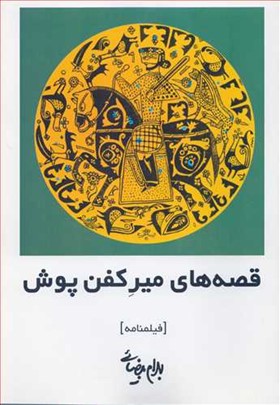
Figure 53: Book cover, Bayzā’ī’s The Tale of the Shroud Wearing Commander (1984).
Another screenplay that Bayzā’ī finalized was a nine-hour version and then a six-hour version of a television series, Dāstān-i bāvar-nakardanī (The Unbelievable Story, written 1979, rewritten 1982, unpublished), which, due to its double-edged, critical perspective against exclusionism and warmongering, remained unwanted. Set in a village school near the Caspian Sea, it begins with a curious child’s questions about history and his teacher’s determination to find the answers. The pursuit of these answers traps them in a journey through time that takes them to the violent sites of historic events. The present is characterized by sycophancy, misguided rivalries, dogmatism, and confusion because the history of the people has remained distorted and misrepresented. Due to its surrealistic inter-historical gaze, its unifying vision, and its precision in identifying the ideals and pitfalls of Iranian history and culture, at one stage, the screenplay received the support of a high-ranking military commander, Colonel Mūsā Nāmjū (1938-81). Nāmjū, who had seen the screenplay in one of the offices of the Islamic Republic of Iran Broadcasting (IRIB), was very enthusiastic about the project, but, with his death in a suspicious aircraft crash, the screenplay never received a permit and the TV series remained unmade.67In one of our interviews in 2021, Bayzā’ī confirmed that he was preparing the screenplay for publication.
Equally important in these years were the three screenplays that Bayzā’ī wrote in 1980. Shab-i Samūr (Sable’s Night, published 1981) is a thriller in which a woman called Lālah realizes during her wedding that her husband, Amānī, is a SAVAK agent on a mission to control the activities of her brother.68SAVAK refers to the Bureau of Intelligence and Security of the State (Sāzmān-i Ittilā‛āt va Amnīyat-i Kishvar) and operated as the secret police of the Imperial State of Iran from 1957 to 1979. The screenplay brings film noir elements into a scene of marital encounter to offer a variation on the subject of betrayal of love and trust—themes which were central to some of Bayzā’ī’s later works as Iran became an extremely suppressive surveillance society during the 1980s. The plot is like Parvīz Sayyād’s Bun-bast (The Dead-End, 1977), but it is more coherent and convincing in its details and more insightful in its conception. The protagonist, Lālah, is not a romantic girl whose dreams are shattered, but a perceptive young woman capable of thinking on her feet and acting with determination. The dialogue also offers an overview of the depravations that have pushed Amani towards his job. The screenplay thus transcends political othering, revealing the cultural roots of the emotional complexes that influence individuals to engage in activities which offer them power over other people’s lives. Though Bayzā’ī could not film the screenplay, he let Mas‛ūd Kīmīyā’ī restructure it for his own film, Khat-i Qirmiz (Red Line, 1982), which was nonetheless banned from screening.
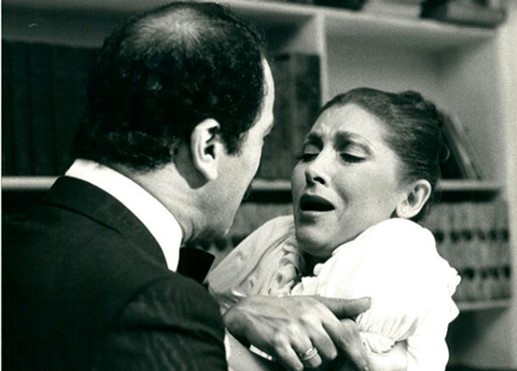
Figure 54: A Screenshot from the film Red Line (1982), directed by Mas‛ūd Kīmīyā’ī.
Another screenplay, Ishghāl (Occupation, published 1982) compresses the zeitgeist of a different cataclysmic era of Iranian history—the era of Iran’s occupation by the Allies (1941-47)—into the events of four days. The screenplay contains clues that suggest Bayzā’ī is using historical distancing to comment on the 1980s. The plot-based clues include: photographic accounts of the atrocities of the early 1940s; reflections on the vicissitudes of people’s lives in an occupied country; links to the disappearance of people in suspicious circumstances; and the loss of a people’s courage, agency, honour, and identity. The screenplay’s Kafkaesque elements such as vast archives that reduce human identities into thousands of photos and files and unexplained disappearances that everyone takes for granted are particularly intense. In her unsuccessful quest to reclaim her intellectual husband, Fikrat, from the underworld of lost individuals, ‛Ālīyah, the protagonist, herself an actress, visits different types of spaces and individuals. Her journey through such encounters offers a panoramic view of the conditions of occupied Iran, the various distortions that the culture has suffered, and the apathy of people who claim honour and honesty but are not above using their daughter’s charms to gain economic favouritism. As expected, the screenplay also possesses a self-reflexive aspect which examines the status of theatre in which censorship crushes the possibility of creativity.69For a detailed analysis, see Saeed Talajooy, “Bahrām Bayzā’ī va Jang-i Jahānī-i Duvvum: Rivāyat-i Ishghāl va Digardīsī-i Mafhūm-i Millat,” Iran Nameh 28, no. 1 (March 2013): 128-150
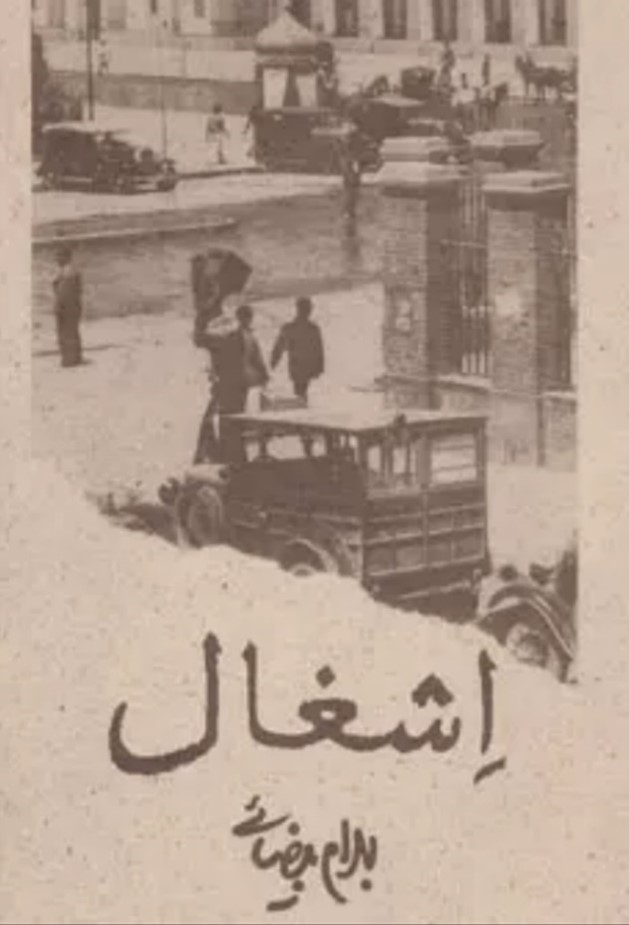
Figure 55: Book cover, Bayzā’ī’s Occupation (1982).
Set in the late 1970s, Āyinah-hā-yi rūbirū (Facing Mirrors, written 1980, published 1982) is an aesthetically innovative tale of transformation and salvation. The screenplay turns the literary technique of parallel perspectives into a cinematic form in which a story of suffering and degeneration is recounted from the diverse perspectives of those who have survived it. Though, like Death of Yazdgerd, the plot’s use of parallel narratives is in dialogue with such films as Akira Kurosawa’s Rashomon (1950), it also echoes the pīsh vāqi‘ah plays (pre-incident plays) of ta‘zīyah which depict everyday characters and events that are then indirectly related to one of the tragic events of the Shi’i calendar to offer various outlooks on the origins and outcomes of such disastrous events. With the coming of the Revolution, a woman called Nuzhat is released from the bonds that had trapped her in sex work and encounters a man, Qanā‘at, who knows her from the past. Being Bayzā’ī’s most direct reflection on the consequences of political upheavals, the screenplay uses a flashback to take the reader back in history to focus on how the lively and intelligent Nuzhat, who has a promising life ahead of her, is forced to break her engagement and sleep with a general to save her brother, Captain Haqnazar, from execution. Then, having realized that her brother has already been executed and that she now faces the rejection of her family, she engages in self-destructive actions and ends up being forced to work as a sex worker. A parallel flashback also shows how these events ruin the life of her jilted lover, Qanā‘at, who remained rejected even after her fall because of her sense of guilt. Qanā‘at, who was a top student, becomes an unmotivated clerk rather than the promising scholar he could have become. The film, thus, recounts the events that ruined their lives, but promises a new beginning which is nevertheless charged with bitter memories. Bayzā’ī’s Facing Mirrors is, indeed, like a warning about the fates of innocent people when a country falls headlong into the abyss of totalitarian exclusionism of the type that characterized the 1980s.
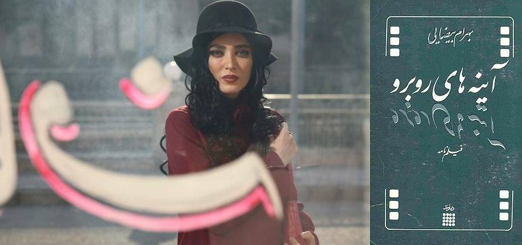
Figure 56 (right): Book cover, Bayzā’ī’s Facing Mirrors (1982).
Figure 57 (left): A scene from the theater Facing Mirrors, directed by Muhammad Rahmānīyān (2017).
The ban on the film version of Death of Yazdgerd (1981), which Bayzā’ī had made for Channel One of IRIB Television was a strong setback on Bayzā’ī’s prospects of working under the new regime. The final blow, however, came with the decision of the Committee of the Cultural Revolution to deprive him of his university position in 1981. It was in this situation that he wrote Khātirāt-i hunarpīshah-yi naqsh-i duvvum (Memories of the Actor of a Supporting Role (written 1981, published 1983). Bayzā’ī, who was initially planning to create the play by performing its scenario in a workshop in 1980, faced problems with holding rehearsals and had to write the whole play himself. Placing the final scene at the beginning of the play, the plot becomes like a ta‘zīyah, in which the audience knows the outcome of events ahead of time and, thus, the performance projects the circular quality of a ritual enactment, particularly because the end marks an irretrievable loss. Yet he also includes detective elements, transforming the plot into a whodunit in which the emphasis on how it was done also captures the audience’s attention. Bayzā’ī had experimented with this approach in Death of Yazdgerd, but it became central to his works of the 1980s and 1990s. Mūhibat, bewailing the death of his friend Zulfaqār while sitting near his friend’s corpse centre stage, recounts the events that culminated in his death. As seasonal workers, they had come to earn money in the capital. The two ended up becoming fake demonstrators, receiving money to promote the aims of the secret police, beating up people or being beaten up, and pretending to be workers, teachers, or senior citizens supporting the state. Zulfaqār, however, becomes absorbed in one of his roles as a protesting teacher, turning into an actual dissident and is finally martyred in the street. The play is unique in captivating the audience in a situation endemic in countries with totalitarian systems, but it also frames human identity as a process of performing roles, which Bayzā’ī had already used in Death of Yazdgerd.
Rūz-i vāqi‛ah (The Day of Incident, written 1982, published 1984), the best ever ta‛zīyah-like screenplay about the Ashura events, is structured as a pish vāqe‘eh of religious conversion: a Christian is inspired by a vision to leave his wedding to find the Jesus of his time—Husayn, who is to be martyred in Karbala.70Such plays were usually pīsh vāqi‘ah pieces in which a Christian, Jewish, Zoroastrian, or Hindu person converted to Shia Islam after a magical or dream-like encounter during a ta‛zīyah performance, after a Shia saint saved them or when their own prophets confirmed the truth of Shia Islam. Some of these pieces, like ‛Abbās Hindū also contained self-reflexive aspects that commented on the ritual significance of performing ta‛zīyah. See Bayzā’ī’s study of three versions of the play in Bahrām Bayzā’ī, “Darbārah-yi ‛Abbās Hindū,” Daftarhā-yi Ti’ātr, no. 5 (2005): 7-46. Bayzā’ī’s account reclaims Husayn and his followers from exclusionist Shiite obsessions by depicting them like his own dispossessed strangers who are entrapped in societies characterized by ignorance, blind zeal, hypocrisy, and obsession with money and distorted forms of honour. Despite the screenplay’s magical power, Bayzā’ī was not allowed to make the film. In 1994, however, Shahrām Asadī received Bayzā’ī’s permission to turn the screenplay into a film which, despite the director’s attempts, failed to fulfil the magic qualities of the text.
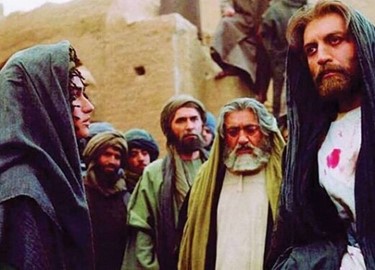
Figure 58: A Screenshot from the film The Day of Incident (1994), directed by Shahrām Asadī.
Another interesting screenplay was Zamīn (The Earth, written 1982, published 1985) a potential village film which, like The Stranger and the Fog, records vanishing village relations, rituals, and ceremonies while depicting people’s desire for having a home of their own. The basic plotline reminds the reader of the land runs of the late nineteenth century in Oklahoma, including the famous Cherokee Land Run of 1893 which has inspired such films as Tumbleweed (1925), Cimarron (1931), and Far and Away (1994). However, rather than focusing on humanity’s craving for ownership of land, Bayzā’ī explores the psychology of grief, belief, and greed. The screenplay follows the lives of Durnā and Yāvar, who lose their child as they try to turn an arid piece of land into a farm. Believing that the land itself has brought them a bad omen, they leave the fertile farm for another piece of land that they improve and then surrender to its owner after ten years. In search of an illusory happiness they might claim with land of their own, they participate in a land run that ends with Yāvar’s death. The screenplay contains vague allegorical suggestions about village to city migration, the recurrent attempts of Iranians to possess their homeland, and the factors that prevent them from doing so.
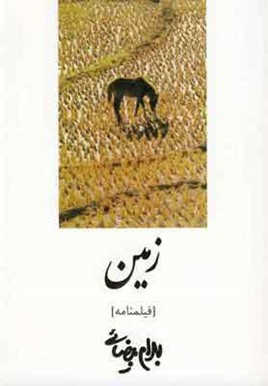
Figure 59: Book cover, Bayzā’ī’s The Earth (1985).
The Early 1980s: Increased Censorship and Further Play Writing
With the increase in the state’s suppressive attitudes, Bayzā’ī continued his focus on writing with a renewed focus on plays. The first masterpiece of this period was Fathnāmah-yi Kalāt (Conquest of Kalāt, a.k.a. Kalat Claimed, written 1982, published 1983). The play’s setting and themes contribute to Bayzā’ī’s projects that capture the zeitgeist of the Mongol era while making links to the country’s contemporary conditions, but it is also a major achievement in recording and refashioning Iranian rituals and offering heroic models of womanhood for Iranian performing traditions. The play’s language is poetic and imbued with medieval elements, yet it is also highly performable and vivid. The plot is multilayered with numerous characters, but Bayzā’ī gives it organic unity by focusing on Āy-Bānū, whose calm Shahrzād-like wisdom, beauty, performing skills, and cunning make her the desired other of the Mongolian “sound and fury.” Āy-Bānū is a realistically depicted, intelligent woman, yet she also embodies the soul of a people as it finds a way to survive the atrocities of local and foreign oppressors.
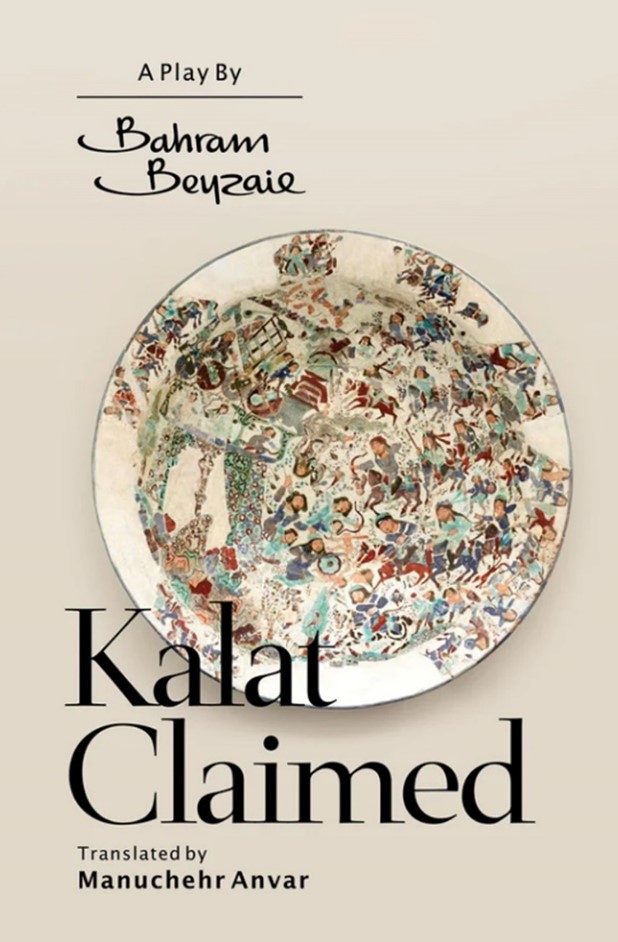
Figure 60: Book cover, Bayzā’ī’s Conquest of Kalāt (1983).
In the play, she has been offered as a gift to Tuy Khān to stop him from massacring the people of the city of Kalāt, but she uses the rivalry between Tuy and Tughāy, another leading Mongol commander, to recapture Kalāt’s fertile territories and deliver a speech of love, peace, justice, education, prosperity, and fertility. The play thus transcends the limitations of time and space to comment on universal aspects of human experience as well as the sadistic rivalries between the different utopian illusions of 1980s Iran. Thus, Tuy and Tughāy are not just Mongol commanders, they are exemplary products and the perpetuators of destructive human rivalry and greed for power and possessions that Bayzā’ī had been criticizing in his plays and screenplays on ancient and modern Iranian history. Yet Bayzā’ī also suggests that, like the different sides of the Iranian totalitarian patriarchy, Tuy and Tughāy are two sides of the same coin, doomed to wear each other down. Thus, when one degrades the other by dressing him as a woman, he is undermining his own position, too. It is in fact suggested that it is this insult to womanhood that infuriates Āy-Bānū and leads to her determination to recapture her lost city.
For the mocking parade in which Tughāy dresses Tuy Khān as a woman and marches him around the town, Bayzā’ī uses an ancient form of carnival mockery. The first extant recording of such shaming carnivals occurs in Herodotus’ account of Mughkushī (Magophonia), and the last samples are associated with the rituals of Kūsah bar Nashīn (Ride of the Beardless One) and ‛Umarkushān (Killing Omar).71For Mughkushī (Magophonia), see Herodotus, The Histories, trans. Aubrey de Selicourt (London: Penguin, 1954), 238. For Kūsah bar Nashīn (Ride of the Beardless One) and ‛Umarkushān (Killing Omar), see Bayzā’ī, Namāyish dar Īrān, 37-42 and 52-55; and Talajooy, Iranian Culture, 78-81, 120, and 173. The model that Bayzā’ī uses, however, echoes Plutarch’s account of Surena’s (84-53 BCE) parade for mocking Crassus (114-53 BC).
XXXII. Surena now took the head and hand of Crassus and sent them to [the Parthian King] Hyrodes in Armenia, but he himself sent words . . . to Seleucia that he was bringing Crassus there alive and prepared a laughable sort of procession which he insultingly called a triumph. That one of his captives who bore the greatest likeness to Crassus, Caius Paccianus, put on a woman’s royal robe, and under instructions to answer to the name of Crassus and the title of Imperator when so addressed, was conducted along on horseback. Before him rode trumpeters and a few lictors borne on camels; from the fasces of the lictors purses were suspended, and to their axes were fastened Roman heads newly cut off; behind these followed courtezans of Seleucia, musicians, who sang many scurrilous and ridiculous songs about the effeminacy and cowardice of Crassus; and these things were for all to see.72Plutarch, “Life of Crassus,” in Lives: Pericles and Fabius Maximus. Nicias and Crassus, trans. Bernadotte Perrin (London: William Heinemann, 1932), 417-419.
The account indicates that in the procession someone was dressed up as an effeminized replica of the mocked person and was put on horseback or backwards on a donkey while being accompanied by singing and dancing people. Bayzā’ī reformulated this carnival form in the scene before the football match in Uncle Moustache to celebrate its antiestablishment potential. He also did so in The Stranger and the Fog when Āyat is being tortured by the villagers to criticize the marginalization of strangers in hostile communities. Here, since he is using the ritual in a war setting, he echoes Plutarch’s passage but subverts its glorification of toxic masculinity, violence, and war by reframing it in a context in which he shows how its degradation of women leads to the wrath and empowerment of an intelligent woman.
In 1984, while continuing to apply for staging and filming permits with different plays and screenplays, Bayzā’ī edited Amīr Nādirī’s Davandah (The Runner, 1984) which won several international awards. Apart from Kafsh-hā-yi Mubārak (Mobarak’s Shoes, 1984) which has not yet been published, most of the screenplays Bayzā’ī wrote in this period, like his previous ones, gained wide readership in the following decades. Parvandah-yi Qadīmī-i Pīrābād (The Old Case of Pīrābād, published 1984), however, was twice made into a film. This screenplay is a comic piece which uses the rivalry between two villages to juxtapose the destructive and constructive aspects of Iranian culture. Mihrbānū, the female protagonist and the screenplay’s heroic voice of forgiveness, transcends the inherited obsession with violence and revenge to initiate a series of activities that lead to love and peace between the two villages. Yadallāh Samadī used Dāryūsh Farhang’s restructured version of this screenplay to make Utubūs (The Bus, 1985) which misses some of Bayzā’ī’s cultural evaluations but is better than Rafi Pitts’ adaptation of the screenplay in Fasl-i Panjum (The Fifth Season, 1997).
Another screenplay, ‛Ayyār-Nāmah (The Warrior’s Account, written 1984, published 1985) builds on Bayzā’ī’s knowledge of folktales and manuscript illustrations and his experience in dramatizing the accounts of people’s resistance against Turkic and Mongolian invasions to construct a story of male and female heroism. As in his other epic works, the screenplay imagines those aspects of Iranian life and identity that have remained neglected in official histories. These epic screenplays are the loci in which Bayzā’ī glorifies the pens and swords of those individuals whose miraculous presence in various periods have resulted in the preservation of the idea of Iran as a cultural entity. Thus, if Firdawsī brings together the myth and legends of ancient Iran to revive and eternalize what may have been otherwise lost or fallen into decline due to suppressed oral transmission, Bayzā’ī does the same with medieval history and folk narratives. In doing so, he turns these histories and narratives into a locus of negotiation between the past and present in which he criticizes the death-centred, oppressive, and patriarchal aspects of Iranian culture and instead glorifies the aspects that encourage peace, friendship, love, gender equality, fertility, innovation, wisdom, and justice. His mixture of the surrealistic, symbolic, and metaphorical with what seems real and pragmatic creates a style that is particularly Iranian in its dialogue with the Iranian imaginal. The idea of performance as a shaper of our identities is once more put into effective use. Thus, in The Warrior’s Account, Suhā, a female dancer, has been employed to entrap the reclusive warrior Qadar by pretending to be a teenage boy who wants to learn wrestling and swordsmanship. She finds herself won over by Qadar’s honesty and courage, however, to become the female version of what she had been pretending to be.
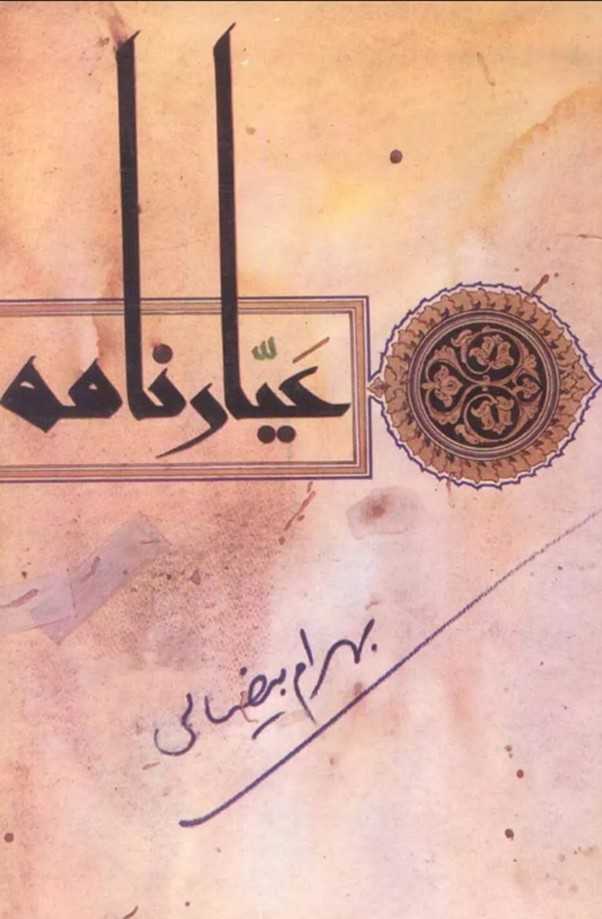
Figure 61: Book cover, Bayzā’ī’s The Warrior’s Account (1985).
As observed in the above two screenplays, Bayzā’ī’s heroines promote women’s heroism in physical and intellectual forms. These forms predict the turn of events in Iran from the 1990s onward as women began to occupy a space of anti-establishment modernity that had for too long been denied to them. This denial of their place within modernity due, in large part, to the West-obsessed or religion-obsessed hegemonic femininities of the dominant discourses of the pre- and post-revolution eras and the patriarchal social, cultural, and economic relations that kept them under control.
Written also in 1984, Tārīkh-i Sirrī-i Sultān dar Ābaskūn (Secret History of the King in Abaskun, published 1986) depicts the last days of Muhammad II of Khwarazm (1169-1220) on an island in the Caspian Sea. The king, overwhelmed by his fears and hallucinations about the havoc he has brought on his people and haunted by the ghosts of those who unjustly died during his reign, deprives himself of his last chance to gather an army by killing the last messenger of hope in a moment of paranoiac madness. As another screenplay dealing with the history of the Mongol invasion, the emphasis is on how failures such as courtiers’ sycophancy, the cowardice, opportunism, and apathy of the citizenry, and the violent arrogance of kings lead to the collapse of an empire under foreign invasion. In other words, as in the cycle of Jamshīd and Zahhāk in the Shāhnāmah, Bayzā’ī’s screenplays emphasize how a king’s tyranny and arrogance create a recipe for disaster by making the people sycophantic and indifferent about who will rule over them, which, in turn, makes the conquering of the country easier for foreign colonizers.73In one of our interviews in 2021, when I asked Mr. Bayzā’ī about the reason he focused more on the Mongol invasion than others, he explained that he realized very early that focusing on other invasions, such as the Arab and the Turkic invasions, antagonized some Iranians and made it harder to communicate with them about the cultural and political issues that have led to Iran’s failure in different historical eras.
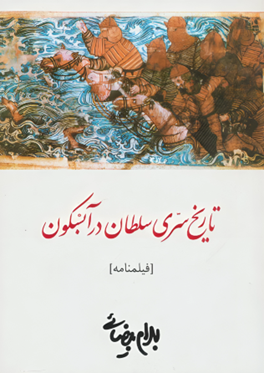
Figure 62: Book cover, Bayzā’ī’s Secret History of the King in Abaskun (1986).
Stylistically the screenplay continues the use of nightmarish elements in Bayzā’ī’s oeuvre which later grew with Bāshū, the Little Stranger and Maybe Some Other Time and fulfilled its best results in Pardah-yi Nay (Reed Panel, written 1986, published 1992). Here, however, the nightmares are not those of marginalized individuals, but those of an arrogant king trapped in a nightmare that he himself created. The screenplay is, thus, like Death of Yazdgerd in having a court-like scene in which the failures of absolute monarchy as an institution and the process leading to the death of a defeated king are examined. The structure of the screenplay, however, is closer to the dream-vision tradition of communion with the imaginal or the land of the ever-living dead as in some ta‛zīyah plays, I‛timād al-Saltanah’s Khalsah/Khābnāmah (Dream Story, 1894), or Mīrzādah ‛Ishqī’s Resurrection of Iranian Kings (1919). In Bayzā’ī’s screenplay, however, rather than kings appearing to pass judgment on contemporary people, those destroyed by the king’s cruelty or ignorance appear to condemn him. As in Ballad of Tārā, therefore, Bayzā’ī’s use of the uncanny combines psychological and surrealistic elements to comment on the different forms of fratricide, injustice, and opportunism that have distorted Iranian history. The screenplay is also interesting in its depiction of disfigured dead people who appear to the protagonist, which adds some horror and zombie elements to the screenplay.
1984-1989: Bāshū, the Little Stranger and Writing Masterpieces
In 1985, Bayzā’ī, while also dealing with his daughter Nīlūfar’s emigration, wrote and directed Bāshū, the Little Stranger, one of the best films ever made in Iran.74Facing the tense conditions and unbridled political imprisonments of the 1980s, Nīlūfar Bayzā’ī (1967-) emigrated to Germany at the age of eighteen in 1985, studied theatre, film and media studies at Goethe University Frankfurt am Main and went on to become one of the most successful playwrights and theatre directors of the Iranian diaspora. She is currently based in Frankfurt and is the Artistic Director of Daricheh (Opening) Theatre Company. The film is unique for several reasons. For instance, it is the first film in which ethnicity, language, and womanhood became central concerns in a way that promotes an inclusive idea of nationhood. As well, the protagonists speak languages other than Persian without subtitles in several scenes. It is also the first anti-war film of the 1980s, bewailing the occasional inevitability of the war while avoiding the war’s glorification, and lingers on its traumatic impacts on human life. Bayzā’ī’s approach to the depiction of trauma by means of hallucinations and the phantom-like figure of Bashū’s dead mother appearing to him to calm, chastise, or guide him was also innovative and one of the first instances of depicting the mental aftermath of war. As the third film in Bayzā’ī’s village trilogy, the film is also stylistically significant in mythologizing the two protagonists: Bāshū as the Sīyāvush- and Zāl-like outcast or migrant archetype, and Nā’ī as the Anāhītā- and Sīmurgh-like archetype of water, cleanliness, family, protection, wisdom, and fertility.75I have analyzed the film in detail in my forthcoming Bahram Beyzaie’s Cinematic. See also Hamid Dabashi, Masters and Masterpieces of Iranian Cinema (Washington: Mage, 2007); and Nasrin Rahimieh, “Marking Gender and Difference in the Myth of the Nation: Bashu, a Post-Revolutionary Iranian Film,” in The New Iranian Cinema, ed. Richard Tapper (London: I. B. Tauris, 2002), 238-54.
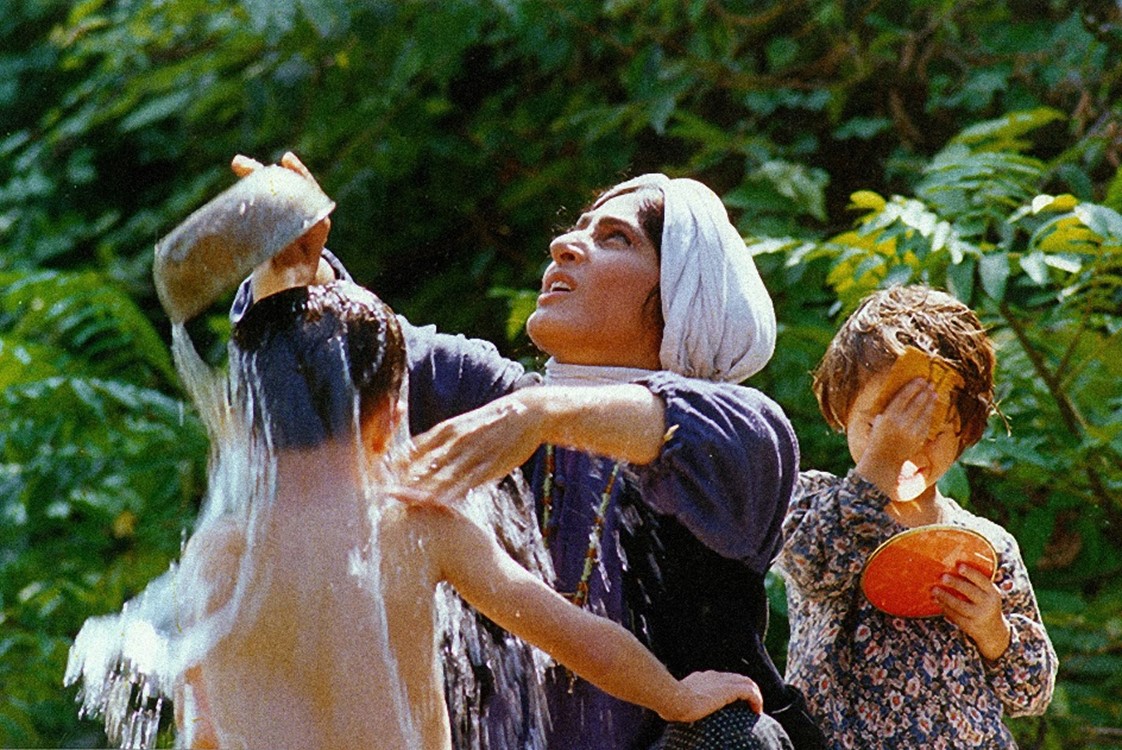
Figure 63: A Screenshot from the film Bāshū, the Little Stranger (1985), Bahrām Bayzā’ī.
With Bāshū, the Little Stranger banned from public screening for three years and two months until February 1989, Bayzā’ī began another period of intense writing which produced several plays and screenplays. The play, The Covered Interior (Pardah Khānah; written 1984, published 1993) represents Bayzā’ī’s best template for reformulating indigenous women-only performances. Building on the accounts of the atrocities committed to bring women into the harems of Iranian kings, and the musical performances in the courts of Shah ‛Abbās (1571-1629) and Nāsir al-Dīn Shah (1831-96), Bayzā’ī creates a poetic festival that merges comedy and tragedy, subverting the conventional functions of these musical forms by framing them as tools of covering, conspiracy, and resistance. As in his other works with Iranian festival forms, the play deconstructs the elements that reinforce hegemonic masculinity and hierarchies of power, turning these forms into emancipatory templates for resisting the culture of cruelty and control. In other words, considering ritual performance as the most significant means of communication with people, Bayzā’ī adapts them into an anti-patriarchal project in which, rather than focusing on the victimization of women, he celebrates via the carnivalesque their awakening, rebellion, and survival. The play tells the story of the intelligent Gultān who, captured alongside her mother at the age of six, was educated by her mother in the harem, later forced to marry the king after her mother’s death, and is now a trainer for the new arrivals. When a new girl called Nusāl arrives and is forced to participate in killing her father and fiancé who had dared to attack the king’s convoy to save her, Gultān initiates a plot to use Nusāl to kill the king in revenge for all the atrocities he has committed against his people and the women in his harem. Having found the king’s will in which he has advised his officers to kill all his wives after his death, Gultān also manages to unite the women who represent the different ethnicities of the Iranian lands (the Kurds, Armenians, Georgians, Gilakis, etc.). When the king confides in Gultān about a prophesy in which he will be killed by a woman named Bīdukht who has one head and several bodies, Gultān, whose original name was Bīdukht, advises the king to pretend he is dead to see his wives’ reactions. The fake deathbed, however, turns into a real one when all the women rush to stab the cruel king. Bīdukht, then, destroys the king’s will and uses people’s superstitions to convince the king’s officers that he died of natural causes but the wounds he had inflicted on his enemies showed on his body the moment he perished. The play, then, ends with her and the other women opening the doors of the harem to enter the real world, which though dark, has a road that may lead to something better.

Figure 64: A scene from the theater The Covered Interior (2022), directed by Gulāb Ādīnah.
Notably, Gulāb Ādīnah, who had in the past appeared in some of Bayzā’ī’s plays and had also directed Death of Yazdgerd and The Snake King, successfully directed Pardah Khānah between November 2022 and March 2023. What was interesting about the timing of this performance was that the discourse of the play, which celebrates the rise of women against a state that embodies toxic masculinity, corresponded with the uprising of the “Women, Life, Freedom” movement.
This period also gave rise to two of Bayzā’ī’s masterpieces. The first was Tūmār-i Shaykh Sharzīn (Parchment of Master Sharzin, written 1986, published 1989), which, due to its poetically charged language, its array of wise, poetic, and witty sayings, and its inspiring use of metonymies, metaphors, and allusions, is like a divan of sonnets or a miniature painting that is also topical in its focus on the victimization of dissenting intellectuals by religious totalitarianism. Bayzā’ī uses ta‛zīyah and mīr-i nawrūzī elements to recreate his earlier template for depicting the creative intellectual as a sacrificial hero. Earlier he had tried this in Downpour and had shown in his other works how people’s ignorance and apathy turn them into silent observers or instruments of tyranny for victimizing creative people and lonely strangers. In Parchment of Master Sharzin, his template challenges the Islamic Republic’s depiction of Iranian intellectuals as “Westoxicated” others who must be eliminated and instead depicts sacrificial heroes in contexts that frame them as contemporary constructive intellectuals.76The terms “rushanfikr-i gharbzadah” (the Westoxicated intellectual) and Westoxication (Gharbzadigī) were first introduced and popularised by Jalāl Āl-i Ahmad in his book Gharbzadigī (Westoxication; written 1961, published 1962) and later expanded in Dar Khidmat va Khīyānat-i Rushanfikrān (On the Services and Treacheries of Intellectuals; written 1964, published 1968). Though the ideas expressed in the books have some merits, they are expressed from a reactionary and opportunistic perspective. The ideas expressed in these works were later distorted and radicalised by the Islamic Republic to justify the prosecution of Iranian dissenting intellectuals. It also employs elements from the biographies of victimized Iranian thinkers and scientists of the past, such as Mansūr Hallāj (858-922), Zakarīyā Rāzī (865-925), and ‛Ayn-al Qūzāt Hamadānī (1098-1131). With these biographies in mind, Bayzā’ī creates the character Sharzīn, a philosopher, who suffers torture, ostracization, exile, and death because he prioritizes rationality, research, and knowledge over religious zeal and inherited dogma and because he considers men and women equal in creation. Offering an array of neglected philosophical discussions that suggest the potential modernity of some medieval Iranian thinkers, Bayzā’ī shows how a culture that fails to overcome bigotry and tyranny is doomed to collapse as it remains incapable of supporting and transferring its hard-earned knowledge from one generation to another.77For a detailed analysis, see Talajooy, “Intellectuals.”
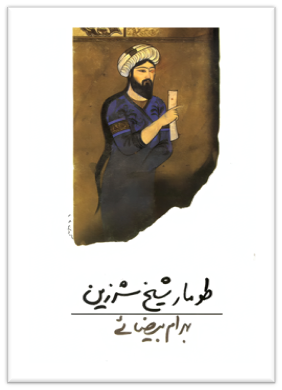
Figure 65: Book cover, Bayzā’ī’s Parchment of Master Sharzin (1989).
The second masterpiece, Dībāchah-yi Nuvīn-i Shāhnāmah (New Preface to the Shāhnāmah, written 1986, published 1990) follows the same thematic and aesthetic structures to depict the passions of the greatest hero of Iran’s creative intellectuality: Firdawsī. As in Sharzīn, the circular, ta‛zīyah-like structure depicts people gathering and talking about the protagonist, Firdawsī, after his death. However, rather than remembering him by reciting his biographical parchment, as in Sharzīn’s case, they recount their memories of him while standing around his grave. These flashbacks build on historical and folk accounts about Firdawsī’s life events, including: his son’s death; his encounters with religious bigots and their thugs; his daughter’s loss of speech due to the family’s traumatic experiences; his refusal to bend to Sultān Mahmūd (971-1030), etc.78See Abulqāsim Anjavī Shīrāzī, Mardum va Firdawsī [People and Firdawsī] (Tehran: ‛Ilmī Farhangī, 1984). Bayzā’ī demonstrates the fallacy of the claims about Firdawsī’s racism and projects Firdawsī’s, and by extension his own, works as sites of negotiation for promoting a love for the diversity of Iran as a land in which a shared cultural heritage and the Persian language connect a multiplicity of superficially different but inherently similar cultures. The final part of the play echoes the reported account of ‛Abdulhusayn Sipantā’s )1907-1969) lost film, Firdawsī (1934), in which the metaphor of a bridge at the beginning of the film suggests Firdawsī’s dream for bridging pre-Islamic and Islamic Iran. Bayzā’ī, however, turns the metaphor into a geographical and intellectual one, suggesting the need for reconciling the disintegrated sections of the imagined cultural community of Iran.
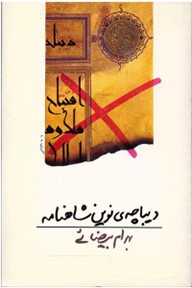
Figure 66: Book cover, Bayzā’ī’s New Preface to the Shahnameh (1990).
At the end of the screenplay, facing Mahmud’s belated offer, Firdawsī’s daughter suddenly speaks after years of silence to reject the money and reiterate the theme of the screenplay that is also central to Bāshū, the Little Stranger. She states:
He did not sell the gem of his name to coins; why should I sell him to that? . . . You should, if you have any good intentions, rebuild the bridge whose collapse has disconnected the two sides of Tus. . . Maybe then the divided Tus becomes one again, and one of his one thousand dreams for this shattered country of one thousand pieces is fulfilled.79Bahrām Bayzā’ī, Dībāchah-yi Nuvīn-i Shāhnāmah [New Preface to the Shahnameh] (Tehran: Rushangarān, 2001), 118.
The fact that Firdawsī’s daughter delivers the last monologue reiterates the history of silenced women and youth—and Bayzā’ī’s belief in the centrality of women for Iran’s future. The emphasis on bridging the two sides of Tus, Firdawsī’s birthplace and a symbol for Iran, also implies the necessity that the religious establishment, which now had the political power, must open itself to the wisdom of secular Iranians. Bayzā’ī was not allowed to turn this screenplay into a film, but the Firdawsī sections of Muhammad Nūrīzād’s television series Chihil Sarbāz (The Forty Soldiers, 2003-07) is like a butchered echo of Bayzā’ī’s New Preface to the Shāhnāmah, particularly in its attempt to connect the expressive power of the Shāhnāmah’s major narratives to specific crises in Firdawsī’s life.
1987-1989: Familial Emigration and Living Abroad
Bayzā’ī’s focus on family relations in Firdawsī’s life seems to also have reflected aspects of his own as 1987 marked the emigration of the rest of Bayzā’ī’s family—his wife Munīr-A’zam Rāmīnfar and his daughter Nigār—although he still preferred to remain in Iran. Despite these issues, however, Bayzā’ī remained in Iran and completed Shāyad Vaqtī Dīgar (Some Other Time Maybe) which was released in 1988 as Maybe Some Other Time. As the second film in Bayzā’ī’s city tetralogy, the film is like The Crow in its meta-cinematic referencing, its noir elements, and its focus on a marital crisis in which the identity of an educated middle-class woman is under scrutiny. While functioning as the first important film on the lives of middle-class families after the 1979 Revolution, Maybe Some Other Time also foregrounds the conditions of women in post-revolutionary cinema who were not to be shown in close-ups, in their intimate relationships, or as outspoken protagonists. The protagonist Kīyān’s identity crisis is thus the crisis of both Iranian cinema and middle-class women, as both of them, film industry and women alike, have been forced to face a new society in which their social groundings and socialisation have become useless because of a state that is adamant to impose its extreme ideological visions on cinema’s and women’s appearance, relations, and functions.
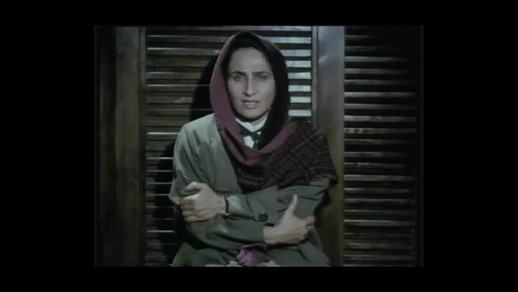
Figure 67: A Screenshot from the film Maybe Some Other Time (1988), Bahrām Bayzā’ī.
The film uses film noir techniques and surrealistic depictions to produce a family focused film which reflects the nightmares of a disturbed mind entangled in an identity crisis.80The film has had an indirect influence on Dāryūsh Mihrjū’ī’s venture to use similar techniques for the depiction of the identity crisis of his failed intellectual in Hāmūn (1990), but Mihrjū’ī’s vision has more affinity with Saul Bellow’s novel Herzog (1964) and Federico Fellini’s film 8½ (1963). As a psychological thriller focusing on a woman suffering from inexplicable fears and childhood trauma, it has affinities with Hitchcock’s Marnie (1964). It is, however, different in its narrative, thematic structure, and filmic techniques. As in Bayzā’ī’s early plays, or his Bāshū, the Little Stranger, the free movement in time and space and the nightmarish and surrealistic scenes echo the use of goriz-type flashbacks and dark fairy tale elements in ta‛zīyah. The juxtaposition of personal memory and national history in one particularly notable and highly antic shop scene reflects on how a nation’s ignorance of its past causes it to behave like an amnesic person with no sense of her identity. The film’s reflections on how creative work releases the individual from psychological pressures and on how historical breaches, like the 1979 Revolution, function as sources of trauma in peoples’ collective and individual identities are also notably among Bayzā’ī’s favourite themes. So is the enigmatic use of mirrors, photos, portraits, mannequins, armour, swords, sunglasses, gigantic eyeglass frames, cameras, voice recorders, and archives that emphasize the recording, preserving, controlling, or suppressing of human presence through time.81For more see Saeed Talajooy, “Maybe Some other Time,” in Directory of World Cinema. Iran 1, ed. Parviz Jahed (Intellect, 2013), 236-238, and “Khānah, Khānavādah va Shahr: Rivāyat-i Tajaddud dar Kalāgh va Shāyad Vaghtī Dīgar-i Bahrām Bayzā’ī,” Iran Nameh 27, no. 1 (March 2012): 142-161. See also Negar Mottahedeh, Displaced Allegories: Post-Revolutionary Iranian Cinema (Durham: Duke University Press, 2008), 49-69; and my chapter on the film in Bahram Beyzaie’s Cinematic.
In 1988, in an attempt to reunite with his family, Bayzā’ī left Iran and lived first in Germany with his daughter Nīlūfar for about three months and then in Sweden with his wife and his daughter Nigār for a few months, an experience that functioned as another turning point in his life. While abroad, Bayzā’ī wrote two screenplays and a play. One of the screenplays, A Lost Page of the Birth Certificate of a Future Country Fellow has remained unpublished. The other, Āqā-yi Līr (Mr. Lear, 1991),82A summary of the play was published in Majallah-yi Barrasī-yi Kitāb, no.7 (Fall 1991): 649-656. is Bayzā’ī’s intercultural and inter-historical adaptation of Shakespeare’s King Lear. A widower, Mister Delear (Mr. Brave), who is jokingly called Mister Lear by a train conductor, goes abroad to distribute the money from the sale of his house among his daughters and then to live with them. The screenplay aptly depicts a man’s loneliness and hallucinations in a strange land, far from the familiar places in which he has become who and what he thinks he is.
The play, The Slaves’ Battle Account: Taqlīd in One Session (written 1988, published 1990), an earlier version of which Bayzā’ī had tried to stage in 1983, reformulates some of taqlīd’s typical scenarios. The reformulation, however, is done in a way that challenges the adoration of brutal, authoritarian power and the suppression of the youth and lower classes in the name of security and tradition. Bayzā’ī maintains taqlīd’s motifs of broad humour and satire but importantly modernizes the form by undermining its depiction of toxic masculinity and of power relations as unchangeable. As in taqlīd, disguise is central to the romantic comedy that is born from the play’s dark satire. The play recounts the story of Yāqūt and Mubārak, servants of the clashing thugs Babrāz and Azhdar. The two servants, however, are in fact Babrāz’s disguised sister, Targul, and her secret fiancé, Ma‛rūf. Through their conversations with Almās, Azhdar’s black servant, it is revealed how the so-called heroes (i.e., the aforementioned thugs) convinced the three servants to obey them and suspect each other. The process reveals the relations of power in a simple plot that demonstrates how opportunistic politicians spread the seeds of discord among people and make them undermine or spy on one another to be able to continue their rule. Bayzā’ī deconstructs the concept of heroic violence by showing it to be an anachronistic disease. Thus, unlike Bayzā’ī’s early puppet folk plays, the Black, who has now achieved a high level of cultural awareness, does not want to be a hero. He rather wants to be a black man who does not have to serve heroes.
Upon his return to Iran in 1989, Bayzā’ī wrote Fīlm dar fīlm (Film in Film, published 1994), a comic meta-cinematic screenplay with a new template which engages with the lives of ordinary, lower-class city dwellers, but uses stylized, surrealistic, or grotesque scenes to defamiliarize the accepted absurdities of our lives. The screenplay reframes everyday life in unexpected contexts to create entertaining narratives that challenge the cultural and sociopolitical assumptions that undermine the rise of responsible citizenship by accepting people’s marginalization of others or their apathy and loitering. The screenplay is also a prime example of Bayzā’ī’s belief that it is not verisimilitude that captivates the essence of reality, but a combination of different forms of framing and seeing that make visible what is usually neglected in everyday life.83See Bayzā’ī in Qukasiyan, Guftugū.This is a recurrent subject in the book whenever Bayzā’ī discusses the social aspects of his film’s “unrealistic” elements. See, for instance, the discussion on Gharībah u Mih, 93-107. The screenplay introduces us to Bihrūz Ihmālpūr who fails his exams, leading to his refusal to return home which, in turn, opens the plot to the depiction of the comic life of a family. Soon after, however, another person, Pīrūz Hizārjānī, is shown leaving the cinema, indicating that the events were all happening in a film. The same happens when Bihrūz Ihmālpūr is shown leaving a cinema after spectators have watched what was assumed to be Pīrūz Hizārjānī’s life and that of his family. Bayzā’ī’s use of names is usually suggestive of the characters’ qualities. In his comedies, however, the names become as precise as vice and virtue names. Thus, though Bihrūz’s (happy) and Pirooz’s (victorious) first names suggest that they have it good for now, the Ihmālpūrs, as their name suggests, are negligent, and the Hizārjānīs represent nothing less than the flaw of persistent habits that cannot be changed.
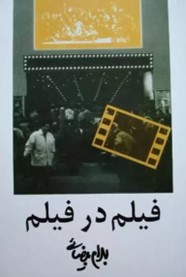
Figure 68: Book cover, Bayzā’ī’s Film in Film (1994).
The Early to Mid-1990s: Travellers, The Reed Panel, and Reciting Sīyāvush
The year 1990 was the year in which Bayzā’ī finally concluded that he had to officially separate from his wife if he wanted to remain in Iran. Yet it also marks the year he completed his next project, the film Travellers which was released in 1991. Travellers celebrates life and fertility while commenting on the flexibility of cultural traditions and the interpretability of the past and present in accordance with our understanding of human presence in time, as well as our understanding of love, belonging, marriage, fertility, birth, death, and rebirth. It combines taqlīd and ta‛zīyah with classical cinema techniques to reflect on the proximity of mirth and mourning in life, and adapts the ritual of the sacred marriage which guarantees the return of happiness and fertility to a culture that has been trapped in glorifying death. In Travellers, Bayzā’ī creates a stylized cinematic world that defies realism to sum up some of the realities of life. In this cinematic complex: actors announce their impending death directly to the camera at the outset of the film; trees dry up when their human counterparts die; and the dead arise to forgive the living and hold up the mirror of the sacred marriage ritual of love and continuity. Thus, the mirror, which was presumed lost in the car accident that killed those transporting it at the start of the film, is brought back towards the end to suggest the hope that the dead and the living have for the continuity of life. Made in response to ‛Alī Hātamī’s Mother (1989) which seemed to glorify death, Travellers is Bayzā’ī’s revaluation of the themes that he highlights in his village trilogy. Thus, though it is a city film, it diverges from the social themes and the noir worlds of his city tetralogy and, instead, it becomes like his village trilogy in that it is more concerned with a philosophical gaze at life which brings myth, history, ritual, the known and the unknown together to celebrate life. In their combination in the film, these elements function as touchstones that both separate reality from dogmatic and illusory beliefs and liberate individuals from their rigid or alienated identities born from ignorance, fear, imitation, despair, and infertility.
Travellers brings us into the life of Māhrukh, who, after several years of remaining betrothed, is preparing for her wedding. Her sister, Mahtāb, as the most recent member of the family to be married, is to bring to Māhrukh’s wedding their family’s wedding mirror which is presumed to initiate happiness. On her way to Tehran, however, Mahtāb and her family die in an accident with a truck along with their driver and a woman accompanying them who is desperate to go to a pregnancy clinic in Tehran. The wedding is thus doomed to be transformed into a funeral, but the grandmother insists that since the mirror must come, it will come. Through these various elements, particularly the grandmother’s resistance to the reality of Mahtāb and her family’s death, the film challenges the audience’s understanding of life by registering the various character’s reactions to the news and the concepts of death, the conversations arising from the grandmother’s insistence on the survival of the family, and the unexpected appearance of the dead carrying the mirror. As in ta‛zīyah, the film suggests that birth, life, love, and death are parts of the circular continuum of the grand cycle of being. It also brings the totality of Iranian culture under the visual umbrella of a film that suggests the possibility of cultural rejuvenation through determination. One can, therefore, see the film as a cultural allegory with a message of hope and survival that deconstructs the suicidal years of war and fury in the 1980s which transformed the awaited euphoria of new beginnings into a national funeral of lost hopes. The ritual ending thus brings together the protagonists’ siblings and relatives, neighbours, policemen, villagers—even the truck drivers whose vehicle killed Mahtāb and her family—to reveal their failures, illusions, dreams, desires, and fears in the mirror of Bayzā’ī’s cinema. A mirror which convincingly argues that the dead must either be left to the world of the dead or be allowed to celebrate the continuity of their loved ones’ lives.
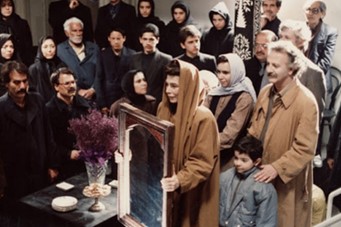
Figure 69: A Screenshot from the film Travellers (1991), Bahrām Bayzā’ī.
Despite the film’s success in the 1992 Fajr International Film Festival, Bayzā’ī faced problems for screening Travellers and, as a result, returned the festival’s award to the officials. Later in the year, Bayzā’ī married Muzhdah Shamsā’ī, who had played the lead role of Māhrukh in Travellers. During the same year he also wrote Sag-kushī (Killing Mad Dogs), which he eventually turned into a film in 1999, and finished Chi kasī ra’īs rā kusht (Who Killed the Boss?), a screenplay based on Three Witnesses, a scenario he had written for Muhammad Mutavassilānī’s comedy trio in 1970. Later in 1992, he also completed Pardah-yi Ni’ī (The Reed Panel), which marks Bayzā’ī’s greatest use of complementary parallel narratives. The screenplay is like an eclectic bricolage that borrows elements from the folktales recorded in such medieval texts as Nakhshabī’s Tūtī-Nāmah (ca. 1330), taqlīd folk plays, and historical narratives of women’s lives in the Middle Ages and pre-modern era to negotiate a new conception of justice. As in Killing Mad Dogs, the setting is Tehran and Ray, but this time he focuses on the Tehran and Ray of the twelfth century to demonstrate that, despite the claims of modernity, the attitudes of dogmatic and opportunistic people towards life, peace, education, women, power, justice, and money have not changed all that much.
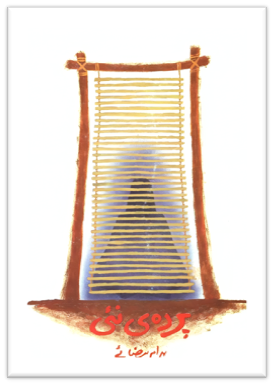
Figure 70: Book cover, Bayzā’ī’s The Reed Panel (1992).
The plot focuses on an educated woman, Varta, whose sufferings are narrated from several perspectives to create a spectrum of Iranian culture at its best and worst. Failing to seduce Varta, her brother-in-law accuses her of adultery and initiates a plot in which she must traverse several near-death situations, encountering various men who claim to be honourable but, in fact, represent hypocritical patriarchy, opportunistic religiosity, empty heroism, and toxic masculinity. Having survived the intrigues of the cruel power relations of her society, Varta uses her knowledge of Zakarīyā Rāzī’s medical theory about the psychosomatic origins of diseases to set up a medical practice through which she successfully cures her patients, including the people who victimized her, from behind a reed panel. The Reed Panel is one of the few occasions in Bayzā’ī’s works in which a just ruler, Emir of Mākān, appears to offer a degree of hope. Yet even this ruler realizes that to be able to help himself and his people, he must abandon his throne and live his life as a cultural activist. Due to its powerful language, captivating use of parallel narratives, emphasis on women’s agency, circular structure, and innovative reformulation of folktales, The Reed Panel—like Death of Yazdgerd, New Preface to the Shahnameh, Parchment of Master Sharzin, and his later pieces Sīyāvush-khānī (Reciting Sīyāvush) and Shab-i Hizār-u-Yikum (The One Thousand and First Night, 2003)—has continued to be popular with readers for its literary significance.
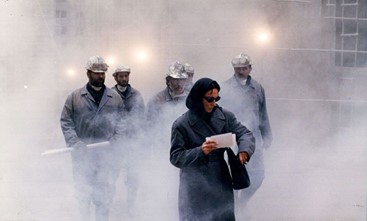
Figure 71: A Screenshot from the film Killing Mad Dogs (1999), Bahrām Bayzā’ī.
In 1993 Bayzā’ī wrote Guftugū bā Khāk (Dialogue with the Dust, filmed 1998, published 2000) which he later published alongside his other pieces on the four elements. He also wrote Reciting Sīyāvush (published 1997), a screenplay he intended to use for a film and an open-air performance piece for the millennial anniversary of Firdawsī’s completion of the Shāhnāmah. Using evidence on the relationship between ta‛zīyah and pre-Islamic fertility rituals commemorating the passions of Sīyāvush, Bayzā’ī presents the legend as a central dramatic ritual in a spring fertility festival.84For these links, see Ehsan Yarshater, “Ta‛ziyeh and Pre-Islamic Mourning Rites in Iran,” in Ta‛ziyeh: Ritual and Drama in Iran, ed. Peter J. Chelkowski (New York: New York University Press, 1979), 88-95. The screenplay thus celebrates Sīyāvush as the hero of oath-keeping, peace, and fertility and as a sacrificial hero on par with Jesus and Husayn. It also emphasizes the communal function of the festival as a site of negotiation and cooperation where the members of nearby villages set aside their differences to conduct their annual fertility rites in honour of Sīyāvush. The screenplay emphasizes aspects of the ta‛zīyah that Bayzā’ī had always wished to foreground as a scholar. It also reflects on the mutual impacts of life and ritual performance upon each other by showing how obstacles create new meanings and forms in a performance, and how theatre can sublimate our ordinary identities into archetypal ones. As in Bayzā’ī’s other historical and mythical works, the language and the dramatic qualities are unique, and the text is a must read for anyone interested in Persian or Iranian culture.
The Mid-1990s: Writing (Again) Amid Censorship, Bayzā’ī Abroad (Again), and a Return to Puppet Form and the Stage
Realizing that he was again facing issues making films due to the activities of extremist pressure groups and their influence on the cultural organizations of the Islamic Republic, once more Bayzā’ī focused on writing. The first product of this period was Āvāzhā-yi Nanah Ārsū (Mama Ārsū’s Songs, 1994), a detective piece on the smuggling of historical treasures in a family setting that deploys archetypal allusions in the suggested music and the arrangement of the background to sublimate the plot beyond a clever account of simply hunting down the smugglers. In 1996, ‛Alī Zhikān used Bayzā’ī’s screenplay for Like a Shadow, which was adequate in adapting the screenplay’s detective qualities but failed to reproduce its archetypal and cultural overtones. During this time Bayzā’ī also wrote Tarabnāmah (Merrymaking), an eight-hour-long taqlīd play which, like Court of Bactria, expands the limits of taqlīd to create a dark comedy on life. The play portrays the lives of a host of characters in a town where the burden of ignorance, sycophancy, and inherited cruelties distorts progress.
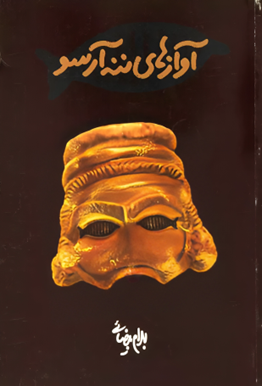
Figure 72: Book cover, Bayzā’ī’s Mama Ārsū’s Songs (1994).
After completing Tarabnāmah, which Bayzā’ī revised and directed two decades later in Stanford (2016), he published a monograph entitled Hitchcock dar Qāb (Hitchcock in a Frame, 1995), based on a series of seminars he held for students of cinema in 1991. Still unable to make films, he also edited two films, Ibrahīm Hātamīkīyā’s Burj-i Mīnū (Minoo Watch Tower, 1996) and Karīm Hātifīnīyā’s Bāzī-hā-yi Pinhān (The Hidden Games, 1995), and wrote three scenarios for a hundred-second film celebrating the centenary of Iranian cinema. He later published these scenarios alongside three others in a special issue of Film Monthly.
In 1996, Bayzā’ī, who had started working on filming Who Killed the Boss?, received threatening letters from Islamist pressure groups and realised that he should stop the project to avoid risking his own life and that of his producer, the Jewish cultural activist and film producer, Hārūn Yashāyā’ī. Feeling that he still would not be allowed to make any films, Bayzā’ī then responded positively to an invitation from the International Parliament of Writers to spend a year in Strasbourg, France. During this period, which was his second time living abroad, he revised the short screenplay Chashm-andāz (Landscape) and wrote two new screenplays. The first, The Protest, builds on an actual event involving the actress Āzar Shīvā (1940-) who in 1970 decided to leave cinema and, in a symbolic act, protested the conditions of cinema by running a chewing gum stall in front of the former Dānishgāh Millī (National University) for a few days. The screenplay is self-reflexive and criticizes the conditions of cinema before and after the Revolution. The second screenplay Maqsad (Destination, published 1998), however, is a road piece dealing with the lives of lower-class people in a stylized mode with fantastic and tragicomic elements. It depicts the sufferings and the rebellion of Unsī whose brother-in-law, Mīr ‛Azīm, has decreed that she must reside as a recluse near the grave of her husband. The film thus addresses serious problems in the lives of many lower-class women who often have no rights in their parents’ and their husband’s houses. Yet what makes the screenplay special is the intense moments of illumination it creates. Notable examples of this illumination occur, for instance, when Unsī and her dead husband engage in a heated dialogue in the back of the van that is taking them to the graveyard, or when she rebels against her upbringing that has required her to be a submissive woman. Her decision to choose to fully live her own life and to give herself permission to love over timid compromise is the triumph of the flesh, of blood, and of basic human needs over stilted conventions. Thus, she confronts her culture’s obsession with death, the afterlife, and patriarchal control by choosing life. Notably in 1999, Vārūzh Karīm Masīhī, who had worked with Bayzā’ī as his assistant director on several projects, applied for a permit to film the screenplay but faced impossible obstacles. During the first term of Hasan Rūhānī’s presidency (2013-2017), there were also some talks about inviting Bayzā’ī back to make Destination, but such discussions never materialised and the screenplay was never turned into a film.
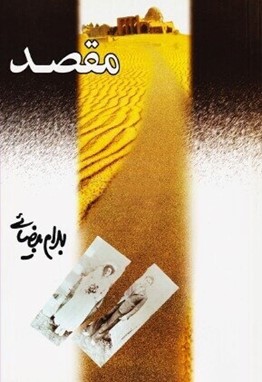
Figure 73: Book cover, Bayzā’ī’s Destination (1998).
While abroad, Bayzā’ī returned to the resources of the puppet theatre after thirty-five years to write Congregation for Ousting (Majlis-i Basāt Barchīdan) (written 1996, unpublished). As in his other reformulations of Iranian forms, Bayzā’ī used the term Majlis, the traditional term for “congregation,” as well as “act” or “play,” in the title. The term may mean “sitting,” “gathering to see a play,” “a religious congregation,” or an “act,” but its mere presence in the title infuses the play with the idea of the public space as well as tragic connotations associated with ta‛zīyah and comic connotations related to taqlīd. Thus, it makes a modern experience feel authentically rooted in traditional Iranian culture while refashioning an old form to handle new subjects. Despite the interest that the play has created among those who love Bayzā’ī’s puppet trilogy, the play has remained unpublished, and I have only seen a summery.
In the autumn of 1997, and after spending eighteen years away from the stage, Bayzā’ī returned to Iran and began cooperating with Muzhdah Shamsā’ī and a group of young actors to stage Yukio Mishima’s The Lady Aoi (1954). With the relative relaxation of censorship during Muhammad Khātamī’s presidency (1997-2005), in 1997 Bayzā’ī was also able to begin rehearsals for Account of Bundār, the Premier, a recitation play he had written in 1961 and revised in 1995. The play reflects on how obsession with power leads to paranoid subjugation of people and control of knowledge in ways that derail the cultural and scientific activities that are essential for progress. To do so, Bayzā’ī juxtaposes Jam’s and Bundār’s narrative monologues. This juxtaposition reveals both how Bundār’s all-seeing chalice was used by Jam to control people, and how Jam’s paranoia makes him see Bundār as a potential danger to his totalitarian vision and the surveillance society he has created through his own use of the cup. Bayzā’ī’s earlier concerns with the trauma of living in a surveillance society are heightened here to show their determinantal impact on the transfer of knowledge and social growth.85For analyses of the play, see Talajooy, “Reformulation of Shahnameh Legends,” and “The Genealogy of Ārash.” The play was also timely in that Jam’s double function as a king-priest echoes the nature of the clerical monarchy of the Islamic Republic, and Bundār’s fate reflected the Chain Murders (1988-1998) of dissenting intellectuals by the rogue members of Iran’s security organizations. Both The Lady Aoi and Account of Bundār, the Premier were staged in the early months of 1998 and continued running for a time. Later, Bayzā’ī took Bundār to the annual Silk Road Theatre Festival in Ruhr Theatre of Mulheim in Germany.
1999: Dialogues with Water, Dust, Wind, Fire, and Shadow, and Killing Suhrāb
In 1999, Bayzā’ī was invited to join several other filmmakers to make a short film on the Island of Kish in a project intended to promote the island as a cultural and economic centre. The result was Guftugū bā bād (Dialogue with Wind) which, nevertheless, proved too culturally charged for the taste of the producers and was put aside when the collection was shown at the Cannes Film Festival. When Bayzā’ī realized the situation, he bought the film back and wrote Guftugū bā āb (Dialogue with the Water) and Guftugū bā ātash (Dialogue with the Fire) and put them together with a former project to publish Dialogues with the Water, Dust, Wind and Fire (2000). His attempts to obtain a permit to film the screenplays, however, proved futile. The four screenplays of the elements echo Bayzā’ī’s use of the real and the uncanny in his inclusion of the elements as active forces in his village trilogy, where the elements come to highlight the earthliness of human senses of belonging, love, and spirituality in contexts that glorify creativity and fertility. The screenplays use echoes of historical, mythical, and literary texts, geographical and archaeological sites, and a symbolic attention to the semiotics of space and human behaviour to contemplate the recurrent loss of personal, relational, and cultural opportunities in human life as processes of maturing and rites of passage.
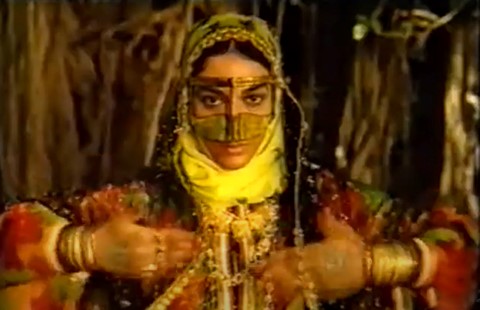
Figure 74: A Screenshot from the film Dialogue with Wind (1999), Bahrām Bayzā’ī.
In 1999, Bayzā’ī also revised Jānā and Balādūr (unpublished) a shadow play that he had worked on since 1977 as a creative project linked to his research on the forms and genre of shadow plays. Judging based on a recent pre-publication version that is very close to the one Bayzā’ī staged in Stanford—a venue in which he had no worries about censorship—the play is clearly in line with the four screenplays of his tetralogy he had also written in 1999. However, in 2012, it had become even more open in its sexual imagery of the elemental essence of fertility in nature. The play is imagined as a medieval performance of a shadow play in which the audience observes the whole process as if watching a performance within the play. It even has a well-developed “Apology for Poesy” and “Discussion of the Origins of the Shadow Play” in the form of a dialogue between a dogmatic member of the clergy, an apprentice, and the folk philosopher Sūratbāz (“Director”). As in Bayzā’ī’s ta‛zīyah and early taqlīd plays, the performers’ language is pre-modern in register and also rhythmic and poetic. The language of the shadow play itself, however, is closer to that of The Shāhnāmah. And, too, the play’s poetry and rhythm contain few Arabic words, reflecting the idea that the play itself is pre-Islamic in origin. This is also reflected in the openly sexual language of the play which echoes an agricultural fertility myth and recounts an archetypal tale of the battle of the four elements—the two sisters/lovers Jānā (Earth/Isfandārmaz) and Balādūr (Water/Ānāhītā) and their brothers/lovers Tashangān (Fire/Mithra), and Darvāi (Wind/Good Vāyu)—against the Demons of Winter and Drought. In the narrative, the emphasis on three years of extreme cold, the entrapment of the brothers, the near death of the sisters, the sufferings of the siblings/lovers, and the presence of Sīmurgh and the advisory role of the Speaking Tree make it clear that the play is about the rebirth of love and nature. The story of the demonized resident of a well—who saves and falls in love with Balādūr, is transformed back into a human being by her love, and ends up becoming a sacrificial hero—also echoes the descent of water from icy mountains into underground sources, its resurfacing which guarantees the continuity of life, the fertility myth of overcoming winter, and, overall, bringing back the prosperity of the spring and summer. With the archdemon, Haft Khat (Evil Trickster) having captured the heroic brothers Tashangān and Darvāi, the two sisters must find a way to release them by defeating Haft Khat who has stated that they will be released only if the sisters surrender themselves and the eternal garden to him. The play is, thus, also focused on the heroism of women: Jānā’s patient heroism in protecting the garden that guarantees the rebirth of nature, and Balādūr’s warrior-like quest to save her brothers to bring back the warmth and fertile breeze of the spring. The heroism of women is also evidenced in the acts of the marginalized gypsy girl who helps these divine figures and is given the duty of recounting their story.

Figure 75: A scene Shadow play performance of Jānā and Balādūr (2012), directed by Bahrām Bayzā’ī.
Also written in 1999, Killing Suhrāb (published 2007) reworks the legend of Rustam and Suhrāb to depict Suhrāb as the hero of an untimely meritocracy that leads to nothing. Thus, a miraculous young man with an intense desire for achieving a sense of belonging with his absent father, and gaining recognition before meeting him, wanders in a cruel wonderland of distorted power relations where he is victimized by all the wielders of power—including his own father. The linguistic qualities of the text mark it as another substantial practice in dramatic epic narration in Persian. What makes the play exceptionally timely, however, is its implicit commentary on the failure of Muhammad Khātamī’s reform plans which emphasized political development, democracy, and meritocracy, but proved impossible. This became especially telling when the dormitories of the University of Tehran were stormed by the police and state-related paramilitary groups in July 1999 and many students—with similar dreams of a more politically developed, democratic, and meritocratic Iran—were injured, arrested, or even killed.

Figure 76: Book cover, Bayzā’ī’s Killing Suhrāb (2007).
Guzārish-i Ardāvīrāf (Ardāvīrāf’s Report, 1999) which dramatizes the pre-Islamic account of the journey of Saint (Arda) Viraf to the world of spirits is also special in its use of language, but its main subject is the diehard nature of inherited dogma. The original text, which Bayzā’ī’s play reformulates, is in fact the key text used for the standardization of Zoroastrianism as a part of Ardishīr Bābakān’s campaign for the centralization of power in the early third century Iran. It is thus as political as it is religious in its polemical force and roots. Bayzā’ī’s play, however, offers seven entries in each of which he handles the stories of several leading male and female figures of the Shāhnāmah. The stories of these figures show how they are eternally defined by the conflicts that determined their lives and deaths and, through them, Bayzā’ī offers revisionist perspectives about heroism, power, kingship, fathers and sons, women, love, religion, dogma, and the inevitability of the link between identity and fate. As in Jānā and Balādoor, the language of the final version, which Bayzā’ī used for his dramatic play reading with actors in Stanford (January 2015), is rich in its pure Persian, but it is also open in references to love, sex, desire, and the absurdities of religion.
2000 to 2002: Bayzā’ī the Director Returns, Killing Mad Dogs, and a Return to One Thousand and One Nights
In 2000, Bayzā’ī finally found the opportunity to direct Killing Mad Dogs after nine years of futile endeavour to obtain permits to make one of his films. As the third film in his city tetralogy, Killing Mad Dogs uses archetypal and film noir elements in a family context that suggests how the political and economic obsessions of a corrupt public arena infiltrate the private lives of people, entangling them in unwanted conflicts. The film’s episodic plot places a woman writer, Gulrukh, in a mythically charged quest for reclaiming her marriage. As an intellectual Alice in Wonderland inside Iran’s toxically masculine market life, Gulrukh overcomes obstacles akin to Rustam’s seven labours or Ishtar’s gate by gate descent to the underworld.86Rustam passes through his Seven Labours while on a quest to save Kaykāvūs and the Iranian army who have been bewitched and blinded in the land of demons. The labours are: Killing a Lion, Facing Thirst While Crossing a Dessert, Slaying a Dragon, Seeing through the Allure of a Temptress, Capturing Olād Diev, Defeating Arzhang Diev, Slaying the White Diev and using his liver to cure the eyes of blinded Iranian soldiers. This quest-like descent, in turn, reveals the underbelly of Iran’s ravenous capitalism which facilitates every form of twisted business while suppressing genuine cultural activities. Despite the restrictions imposed on its representational style due to post-revolutionary regulations, the film marks Bayzā’ī’s success in bringing together the various aspect of his experience— his knowledge of myths, noir cinema, presentational acting of ta‛zīyah and naqqālī, symbolic background and mise-en-scène—to depict a country in which no one is where they should be, and those who are supposed to protect the people do the opposite. In its archetypal force which highlights womanly heroism, the film echoes traditional tales of a heroine facing challenges to reclaim a beloved husband. Yet the ending twists the myth to suggest the depth of corruption in Iran. Thus, the husband, Nāsir Mu‛āsir, plays the victim to exploit Gulrukh’s dedication to his advantage, just like a corrupt state that builds on claims of suffering under imperialism to exploit and suppress its own people. In that sense, the final scene, in which Nāsir Mu‛āsir is surrounded by his enemies, echoes the events after Ishtar’s return from her first journey to the underworld. Upon returning to her kingdom, Ishtar finds her husband having fun with his slave girls instead of mourning her, and so allows galla demons to take him to the underworld.87For more, see Chapter 7 of Talajooy, Bahram Beyzaie’s Cinematic. In Mesopotamian religions, galla (singular gallus) were the seven demons who dragged unfortunate sinners or unlucky people to the underworld. Gulrukh does the same when she steps back and leaves her deceptive husband as his enemies close in.
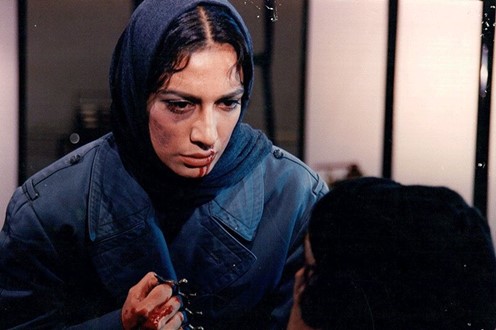
Figure 77: A Screenshot from the film Killing Mad Dogs (1999), Bahrām Bayzā’ī.
Between 2000 and 2002, Bayzā’ī edited two films: ‛Alī Muhammad Qāsimī’s Bād-i Surkh (Red Wind, 2001) and Hamīd Rizā Salāhmand’s Zamānah (The Time, 2001). His writing activities were mostly focused, however, on rewriting a history of the loss of talent and culture and the possibility of survival and rebirth. Among these, Seljuk Station (written 2000, published 2002), a screenplay in Persian and English, mixes actual events with the dreams and flashbacks of a childless French woman lost while touring through Turkey with her husband, Francois. The screenplay’s archetypal focus is the pre-Turkic Anatolian myth of fertility while its contemporary context centres on the absurd ethnic wars that chronically distort life in the Middle East, leaving thousands of children orphaned and destitute. The spectrum of its thematic suggestions includes: the sense of ennui in the life of a well-fed European couple visiting the site of an ancient temple of fertility; a woman’s desire for feeling human through affectionate activism and caring; and the Westoxicated ignorance of the drivers and the local youth wandering around the ancient site, hoping to exploit the tourists visiting the place sexually or financially.
Striking ‛Alī (written 2000, published 2002), on the other hand, is a self-reflexive play, commenting through meta-theatre on the difficulty of making a play about religious figures in Iran.88Like Hamid Amjad’s Mithra and Mirrors (2001) or Muhammad Rahmānīyān’s Shahādatkhvāni Qadamshād Mutrib (Tragic Recitation of Qadamshād, the Merrymaker, 2001), Pul (Bridge, 2003), and Ashaqah (Ivy, 2007), Bayzā’ī’s play seems to have been written to offer new perspectives on religious figures who have played important roles in Iranian culture. A theatre troupe is rehearsing a play about ‛Alī, the first Imam of the Shiite, in a plot that highlights retrogressive attitudes that prohibit authors from depicting ‛Alī, even though centuries earlier he was depicted in ta‛zīyah plays. The play also reflects Bayzā’ī’s vision in depicting ‛Alī as an intellectual, akin to the dissenting intellectuals who were killed by Iranian intelligence organizations after the 1978 Revolution. The play was, thus, in line with Bayzā’ī’s vision of depicting sacrificial heroes, like Sīyāvush, Husayn, and ‛Alī, as constructive intellectuals, while portraying pre-modern or modern constructive intellectuals as sacrificial heroes and victims of dogmatic societies. In this context, Striking ‛Alī is like many of his earlier plays in which an intellectual is murdered by officials or ignorant people who act as instruments of tyranny. It is also similar to Majlis-i Qūrbāni-i Sinnimār (Congregation for Killing Sinnimār, written 1999, published 2001) in which Bayzā’ī used a circular plot and ta‛zīyah motifs and techniques to depict how Nu‘mān, the Arab vassal king of the Sassanid Lakhmid, killed the legendary architect Sinnimār. Nu‘mān is astonished by the fabulous palace that Sinnimār has built for him, but being a narrow-minded bigot, he kills Sinnimār to prevent him from building a better one for another ruler or telling others about the secret passages of the palace.
Meanwhile, Bayzā’ī’s attempts to stop the screening of a censored version of Killing Mad Dogs in foreign festivals failed, but he waged a two-year battle against the system that had cut fifty minutes of the film and, finally, managed to screen the uncut version.
In 2002, Bayzā’ī also published a play that he had completed in 1997. The play was the result of several stages of reworking. It had first been written as a collection of independent parallel pieces reflective of individual mentalities in the early 1980s. Then, hoping to turn it into a film, Bayzā’ī had rewritten it as a screenplay in the early 1990s, and having realised that he would not be allowed to make the film, he had rewritten it as a play. The play, Afrā yā rūz mīguzarad (Afrā or the Day Is Passing), is one of Bayzā’ī’s masterpieces due to its successful combination of three innovative approaches. It uses parallel monologues delivered by people of different types who inadvertently reveal their own qualities while reconstructing the events in which Afrā, a young teacher who embodies constructive, cultural activism and intellectuality, is victimized by the people whom she has always helped and served. It employs, as its setting, an old neighbourhood threatened by demolition to bring together a number of potentially responsible and constructive individuals and their nemesis: people form the lowest and highest economic echelons who represent various forms of outdated and pseudo-modern obsessions with power, money, status, or birth background. While commenting on the pitfalls of Iranian modernity, this aspect of the play also reflects on how the absence of awareness among people leads to recurrent sociopolitical failures and how embodiments of greed, arrogance, and victimization are short-sighted in understanding the disasters that they cause. Finally, it uses the self-reflexive presence of an author who is trying to write a play based on the monologues that he hears, even though, ultimately, he is forced to step down from the ivory tower of his intellectual detachment. The process introduces a complicated discourse on saving and salvation in which Afrā’s dedication to work and constructive values sets a cycle of emancipatory awareness and action in motion. A cycle which rescues everyone from the torpor of apathy and monologues and, in turn, liberates Afrā from victimization.89For a detailed analysis and the play’s translation, see Saeed Talajooy, “Afra or the Day is Passing: A Cultural Diagnosis,” In Afra or the Day Is Passing, by Bahram Beyzaie, trans. Saeed Talajooy (San Francisco: Bisheh Publishing, 2023). 121-166.
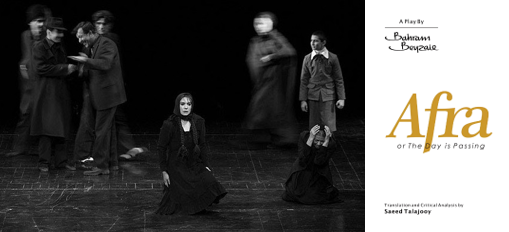
Figure 78 (left): Book cover, Bayzā’ī’s Afra or the Day Is Passing (2002).
Figure 79 (right): A scene from the theater Facing Mirrors (2020), directed by Bahrām Bayzā’ī.
In 2002, Bayzā’ī also wrote Ittifāq khudash nimīuftad (An Accident Does Not Happen by Itself, published 2005), a screenplay that extends Bayzā’ī’s tragic vision to intellectual women. Up until he wrote this screenplay, Bayzā’ī’s woman protagonists were survivors who resisted the machinations of the dogmatic world in which they were trapped. Thus, Bayzā’ī’s dialogue with the rise of women’s consciousness and movements in Iran suggested his hope in their success to transform the country. Here, however, for the first time, his heroine is trapped by the hero of her past. This does not suggest the failure of the movement; rather, it suggest how intellectual women are as important to the future of the country as their male counterparts and how they are equally in danger of victimization, if not more. The screenplay is a psychological thriller that portrays a tale of betrayal in a film noir style and highlights: the history of Iranian political conflicts; the chain murders of dissenting intellectuals; and the impacts of ideology, violence, and torture on the human mind and on human relations.
2002 also marks a major turning point in Bayzā’ī’s career as it led to the intensification of Bayzā’ī’s research on theories that he had developed off and on since his teenage years concerning One Thousand and One Nights. This happened when he wrote a twenty-minute piece for the festival 1001 Nights Now which included ten theatrical pieces from the Middle and Near East. The composite play was directed by Alan Lyddiard in Copenhagen. Later in 2003, after failing to film An Accident Does Not Happen by Itself due to his disagreement with potential producers, Bayzā’ī turned to the piece he had written for 1001 Nights Now and expanded it into a trilogy, The One Thousand and First Night (published 2003), which he then rehearsed and staged in Chāhārsū Hall at the City Theatre Complex in Tehran. The trilogy is based on his research and speculations on the origins and transformations of the collection of ancient and medieval Iranian, Indian, and Arab tales known as One Thousand and One Nights. Working with the cycle of Zahhāk and Jamshīd’s Daughters from the Shāhnāmah, literary and historical reports about the existence of a missing Middle Persian book called Hizār Afsān (A Thousand Tales) and its translation into the Arabic One Thousand and One Nights, and the religious pressures against the translation of One Thousand and One Nights into Persian during the 1800s, Bayzā’ī constructs a fictional history for the book which focuses on the role of women in the continuity of Iranian culture.
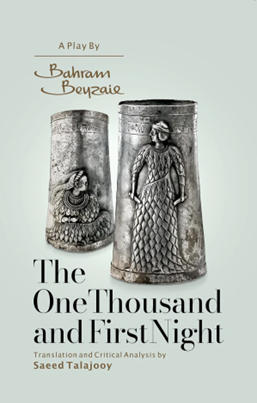
Figure 80: Book cover, Bayzā’ī’s The One Thousand and First Night (2003).
The three plays bring together some of Bayzā’ī’s best techniques. The first is a mythical tragicomedy using naqqāli which proposes that Shahrzād and Dīnāzād are the folktale recreations of the Shāhnāmah’s Shahrnāz and Arnavāz, and that these two sisters were the ones who mesmerized Zahhāk with their stories to save one man for every night that they spent with him.90In the Shāhnāmah, the saviours are two wise men who come up with the idea of saving one man every night by mixing the brain of the other young man with that of sheep. Bayzā’ī argues that in epic narratives, like the Shahnameh, men are considered more important so the saved and the saviours are men, but in folktales, as in One Thousand and One Nights, which are always partly reported by women, women’s roles are bolder, and thus, as reflected in the framing story, the saved and the saviours are women. Overall, the first play celebrates role playing and dramatic narration as a means to resist, outwit, and entrap evil. The second is a tragedy that adapts Ruzbah Dādūyah’s (725-760) life story through the expressive tools of ta‛zīyah. The play reconstructs the story of how the book of Hizār Afsān was translated into Arabic, the original book destroyed, and the translator executed with charges of heresy. The travails of the fictional Ruzbah Pūr-Farrukhān, are thus performed as a passion play by an Iranian guard and Pūr-Farrukhān’s sister, Māhak, and wife, Khūrzād, in a prison in Baghdad. Besides being used as a source of performance techniques, ta‛zīyah is also sublimated here to function as a rite of passage, opening the gates of the unknown for the ritual self-sacrifice that helps the two women escape rape and disgrace. The third play is a comedy that echoes the life stories of some women’s rights activists of the Constitutional Era with the dramatic elements of taqlīd and women-only musical comedies. Promoting comic role-playing as a means of resistance against and emancipation from patriarchal obsessions with honour and its excessively sombre and dogmatic worldviews, the play reflects on women’s lives in the early 1900s. The dogmatic husband of an educated woman, Rushanak, has warned her that if she reads One Thousand and One Nights, which has recently been translated into Persian, she will die on the one thousand and first night. Rushanak, however, has devised a plot to cure her husband’s blind ignorance and cruel dogmatism. Bayzā’ī thus constructs an emancipatory myth in which women (as in One Thousand and One Nights) use the power of narration and performance to reform and civilize violent rulers, making them either properly serve the land or distracting them while preparing the path for a revolution (as in the cycle of Jamshīd, Zahhāk, and Farīdūn).91For a detailed analysis of the play, see Saeed Talajooy, “Continuity and Resistance through Emancipatory Speech: The Story of a Book,” in One Thousand and First Night, by Bahrām Bayzā’ī, trans. by Saeed Talajooy (San Francisco: Bisheh Publishing, 2023), 136-162. The book also includes my translation of the play.

Figure 81: A scene from the theater The One Thousand and First Night (2002), directed by Bahrām Bayzā’ī.
2003 and Beyond: The Speaking Tree, The Chain Murders, and Bayzā’ī’s Final Film to Date—When We Are All Sleeping.
During the next 10 years, Bayzā’ī published two full length monographs, Rīshah-yābī-i dirakht-i kuhan (Finding the Roots of the Old Tree, 2004) and Hizār afsān kujast? (Where Is Hizār Afsān?, 2013), in which he examined pre-Islamic and post-Islamic evidence to prove the Iranian origins of One Thousand and One Nights. The texts highlight the link between the idea of emancipatory speech as an archetypal discourse with the idea of the fertile speaking tree of the Shāhnāmah, and women as civilizing agents of emancipation in myths, literature, history, the arts, and folktales. Bayzā’ī also highlights the role of artistic creativity and storytelling for cultural continuity. Both books are ultimately in line with Bayzā’ī’s vision of creative writing and performance as important means for civilizing and transforming or resisting and challenging violent exclusionist and totalitarian discourses that distort the human potential for life, creativity, and fertility. Later in 2006, Bayzā’ī also made a seven-minute film, Qālī-i Sukhangū (The Eloquent Carpet), which celebrates the mythical and artistic origins of the designs of Iranian rugs. Building his thematic structure on the Shāhnāmah legend of the eloquent speaking tree whose male side speaks during the days and whose female side speaks at night, it presents the carpet with the design of the speaking tree as a cultural icon for how the Iranian carpet has played the same function as texts and artworks in guaranteeing the continuity of Iranian culture.92The Shāhnāmah lines are as follows: Shigiftī-st īdar ki andar jahān * Kasī ān nadīd āshkār u nahān // Dirakhtī-st īdar du bun gashtah juft * Ki chūnān shigiftī nashāyad nahuft // Yakī māddah u digarī nar ūy * Sukhan-gū buvad shākh bā rang u būy // Bi shab māddah gūyā va būyā shavad * Chu rushan shavad nar gūyā shavad. The carpet, the fruit of women’s labour, whispers to us the secrets of the timeless beauty and fertility of art. The film also celebrates the way the carpet glorifies life and captures it in abstract and natural designs.
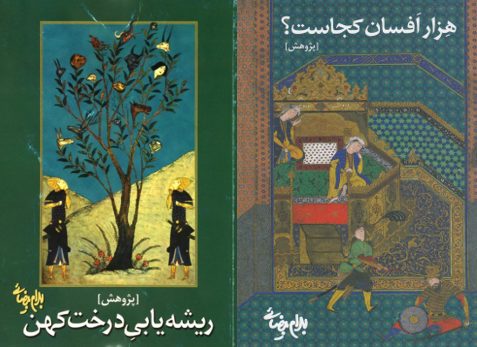
Figure 82 (left): Book cover, Bayzā’ī’s Finding the Roots of the Old Tree (2004).
Figure 83 (right): Book cover, Bayzā’ī’s Where Is Hezar Afsān? (2013).
In 2004, Bayzā’ī also conducted interviews with the people involved in Travellers, Killing Mad Dogs, The Lady Aoi, and Account of Bundār, the Premier, combining the interviews and his behind-the-scenes rushes into two documentaries: Musāfirān dar rāh (Travellers on the Road, 2004) and Parvandah-yi kūtāh-i sag-kūshī (The Brief File of Killing Mad Dogs, 2005) are valuable as research material for those interested in Bayzā’ī’s works and Iranian filmmaking culture and its issues in the 1990s, but they are also important for helping young directors learn about the process of making films. In the same year, Bayzā’ī went on to write two screenplays: The Evidence and Māhī (The Fish). The former has remained unpublished, but the latter, published in 2020, focuses on the state’s criminalization of attractive women with a past to use them for seducing and gathering evidence against political activists or even to control members of its own ranks.
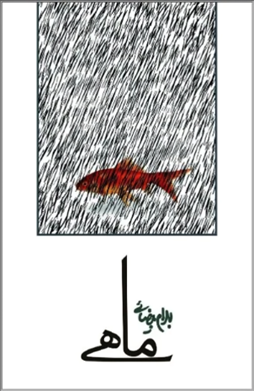
Figure 84: Book cover, Bayzā’ī’s The Fish (2020).
In 2004, Bayzā’ī also managed to write Majlis-i shabīh; dar zikr-i masāyib-i ustād Navīd Mākān va hamsarash Muhandis Rukhshīd Farzīn (Congregation for Commemoration of the Travails of Professor Navīd Mākān and His Wife, Engineer Rukhshīd Farzīn, staged July 2005, published 2023). As the ta‛zīyah-like title suggests, the play openly commemorates victimized intellectuals as sacrificial heroes. Using Kafkaesque elements, the play depicts a surveillance society in which thinking and being different are sins, the disturbing gazes of intruders overwhelm people’s private spaces, and protesting injustice leads to the persecution of the protester. The play reveals Bayzā’ī’s bitter reflections on the so called “chain murders” of 1988-1998 during which agents of Iran’s Intelligence Organizations assassinated over eighty dissenting intellectuals and human right activists with impunity. As such, the play tested the tolerance of the political establishment and showed that, although they condemned the murders as extremist activities of agents who had been enticed by Israel, they could not tolerate the representations of what their agents did on the stage as deep down they knew that what these agents did reflected what the regime had been doing all along. The play included a prologue in which Bayzā’ī himself appeared on the stage to offer the play to the memory of Muhammad Pūyandah (1954-98), Muhammad Mukhtārī (1942-98), and the other victims of the Islamic Republic’s elite killings. Despite having a formal permit and its popularity, the play was stopped after twenty-four nights on the main stage of the City Theatre Complex. While it was construed as the most political work of an artist who usually transcended politics, the play’s primary concern is cultural. For, like other works by Bayzā’ī, the play demonstrates how the majority remains silent or actively participates in the victimization of those who carry the emblem of knowledge among them. In this case, however, it was more open because the play decried a situation that seemed beyond cure. Bayzā’ī had chosen to be more direct to see if it would penetrate the crassness of the people who committed these crimes. As such, it revealed a new trend in Bayzā’ī’s works in which he openly depicts the self-destructive extremism of the Iranian political establishment.
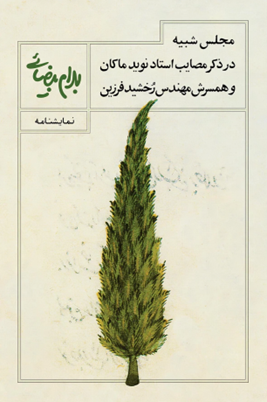
Figure 85: Book cover, Bayzā’ī’s Congregation for Commemoration of the Travails of Professor Navīd Mākān and His Wife, Engineer Rukhshīd Farzīn (2023).
In 2007, Bayzā’ī tried to film Labah-yi partgāh (The Edge of the Precipice) which he had recently written, but he got stuck in the quick mire of Iranian cinema. The combination of the state’s totalitarian censorship, the distorted grammar of Iranian cinema in relationship to women and intimate relations, and the absurd expectations of producers and upstart actors sought overwhelmingly to transform his screenplay—like that of so many others—into something very different from the original. Unable to continue, Bayzā’ī stopped the project and moved to another film.
This new film which came to be called When We Are All Sleeping (2009) echoed the experience of The Edge of the Precipice with a self-reflexive study of the relationship between reality, cinema, and the corrupt or opportunistic forces that distort the paths of artistic and cultural creativity. The film, which has so far been Bayzā’ī’s last film made to date and the last film in his city tetralogy, builds on his concern with the distorting or liberating power of cinema on our understanding of reality, time, place, history, and life. Though this concern dates to his puppet plays, its cinematic aspect was first revealed in The Crow. Here, however, it is directly focused on the subject as the film is about the making of a film (highlighting one of Bayzā’ī’s favorite meta-approaches as in Film in Film). It begins with a film noir in which a man, Nijāt, who has been acquitted after five years from the charge of murdering his wife, is approached by a woman, Chikāmah. Chikāmah wants him to kill her addict sister, Labkhand, whom she blames for the accident that led to the deaths of Chikāmah’s husband and child. In addition, Chikāmah is being harassed by the lawyer of the driver whose fault led to the loss of her family, and Nijāt is being chased by his brothers-in-law who intend to kill him for his assumed murder of their sister. The spectator learns that before being imprisoned with the charge of killing his wife, Nijāt was imprisoned for the debts that his wife’s siblings, the Chāvushī brothers, had caused, and that the only way his wife could find to save him was to betray her marriage bond to get the debtors to withdraw their complaint. Chikāmah informs the brothers that Nijāt’s wife actually killed herself due to the shame of being unfaithful to her husband. The brothers, however, are still adamant in their desire to kill Nijāt as he is the only one who may be aware that they victimized him and their sister for their own corrupt deals. For his part, Nijāt refuses to kill Labkhand, but when he informs her of Chikāmah’s plot, she insists that Chikāmah was the cause of all the conflicts because she married a man that Labkhand loved, which, in turn, led to her, Labkhand’s, addiction. She then gives a knife to Nijāt and asks him to kill Chikāmah.
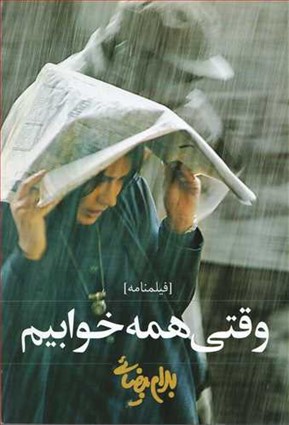
Figure 86: Book cove, Bayzā’ī’s When We Are All Sleeping (2009).
Just as the plot moves towards its climax, however, the film stops to introduce a framing film that exposes the spectator to how various interferences by those who have no understanding of cinema gradually distort a grand artistic vision into something either banal or sensational. The producers’ interference and threats of suing the director first lead to changing the main actors, and then the director himself is replaced in a process of grotesque mutation. Thus, after the spectators are exposed to the now absurdly performed repetitions of some of the scenes they have already seen, the film closes with the director and the screenplay writer imagining the way they would have completed the film. Disappointed in Nijāt’s inability to kill her and ashamed of her budding love for him, Chikāmah, who has all along been pretending to be both herself and her sister Labkhand, searching for someone to help her kill herself, informs Nijāt’s brothers-in-law about a meeting place where they can kill Nijāt. She then disguises herself as Nijāt, goes to the meeting place, is stabbed by the brothers, and dies in Nijāt’s arms who has realized what has happened only to arrive too late.
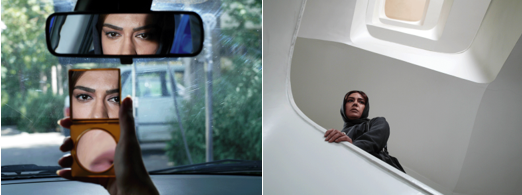
Figure 87-88: Screenshots from the film When We Are All Sleeping (1999), Bahrām Bayzā’ī.
With Nijāt’s name suggesting the idea of a saviour and saving, and the budding love that Chikāmah kills in herself due to her guilt complex, both the embedded and the framing films have archetypal layers that echo Bayzā’ī’s visions about how love, fertility, creativity, and better futures are destroyed due to the opportunism of those who victimize others for their temporary gains. This theme, however, is more forcefully reflected in the way the embedded film is transformed into a monstrosity that demonstrates the banality of evil.93For more, See Alireza Kaveh, ed. Bahrām Bayzā’ī va Vaqtī hamah khābīm (Tehran: Nīlā, 2019). Though less than a decade later, many people came to the same conclusions that Bayzā’ī had arrived at in the film, the controversial reviews of the film at the time suggest that many people had not yet fully understood what was happening to Iranian cinema. In time, however, the film found its place among the masterpieces of self-reflexive filmmaking in Iran.
In 2010, Bayzā’ī relocated to California to start a guest professor position at Stanford University. At Stanford, in addition to teaching courses on cinema, drama, and mythology, he has given numerous public lectures on various aspects of Iranian performing traditions and Iranian mythology. He has also, so far, completed several research projects and performed or published some of his earlier works, among which his performance of Tarabnāmah in 2016 and Chahār-rāh (The Crossroad) in 2018 have been the most successful. In 2017, he also attended a ceremony and a workshop at the University of St Andrews in Scotland where he received an honorary doctorate for his contributions to cinema, theatre, and mythological studies. During the workshop, Bayzā’ī responded to questions about the production of Downpour and talked about the myth of Zahhāk and Jamshīd after Muzhdah Shamsā’ī delivered a dazzling solo performance of every role in the first play of The One Thousand and First Night. Bayzā’ī has also collaborated with the Film Foundation’s World Cinema Project which has so far renovated Downpour in 2011 and The Stranger and the Fog in 2023.
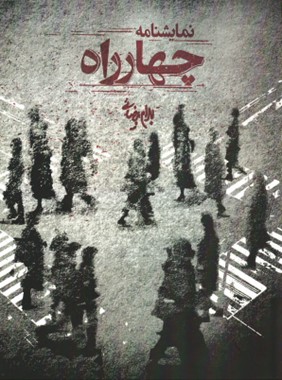
Figure 89: Book cover, Bayzā’ī’s The Crossroad (2018).
Conclusion
During my visit to Stanford in June 2024, after my talk on “The Evolution of Female Protagonists in Bahrām Bayzā’ī’s Oeuvre,” I had the opportunity of meeting Bayzā’ī again on several occasions. In these meetings, I talked with him about Iranian theatre and his works and watched him work with his actors during a rehearsal of his latest play, Dāshākul bi guftah-yi Marjān (Dāshākul According to Marjān), whose planned staging for April 2020 was cancelled due to the COVID-19 pandemic. What captivated my admiration more than anything else during our meetings was his dedication to work and his precision despite all the limitations that life imposes on all of us in old age. Bayzā’ī is one of the rare people who fulfil the promise of their epistemic privilege and outsider gaze by articulating new ways of seeing, doing, and understanding and contributing to the continuity of the positive qualities of their culture.
In my overview of Bayzā’ī’s oeuvre in this entry, I reflected on how he almost always reformulates neglected Iranian artistic forms and combines them with non-Iranian forms to create emancipatory forms that undermine the exclusionist and totalitarian discourses that limit the culture to the requirements of a particular ideology. While offering a chronological overview of his most important works, I also discussed his major themes which I divided into fourteen main groupings. I also tried to show how his visions have always come to be appreciated more than a decade or two after he first introduced them in his research or creative works. The sheer number of Bayzā’ī’s works and his creative and scholarly engagement with myths, folktales, Iranian and non-Iranian theatrical and artistic forms, and world cinema in more than one hundred creative and scholarly works made such a task daunting, and I left many specific or even general points unsaid to avoid making this entry too long. Nevertheless, it did become long because, like Firdawsī, Hāfiz, Rūmī, or Sa‘dī, Bayzā’ī is here to stay and remains a key figure of Iranian culture for the centuries to come. So I hope that this entry can function like a blueprint for those who want to have a better idea of how Bayzā’ī’s writings and films have engaged with and contributed to Iranian culture in the last sixty-six years.
Cite this article

This article provides a comprehensive examination of Bahram Bayzai’s creative journey through a biographical lens, delving into the foundational influences that shaped his artistic vision. It traces the hallmarks of his career, beginning in 1959, by offering concise analyses of his most significant plays and films. While maintaining a chronological structure, the discussion integrates references to earlier works to highlight the evolution and transformation of recurring forms and themes in Bayzai’s oeuvre. Additionally, the article situates Bayzai’s work within broader artistic contexts, briefly addressing Iranian and non-Iranian forms that have influenced his creations. This approach allows for a nuanced understanding of the dynamic interplay between tradition and innovation in Bayzai’s body of work.

![Talajooy[39]](https://cinema.iranicaonline.org/wp-content/uploads/2022/07/Talajooy39-150x150.jpg)

